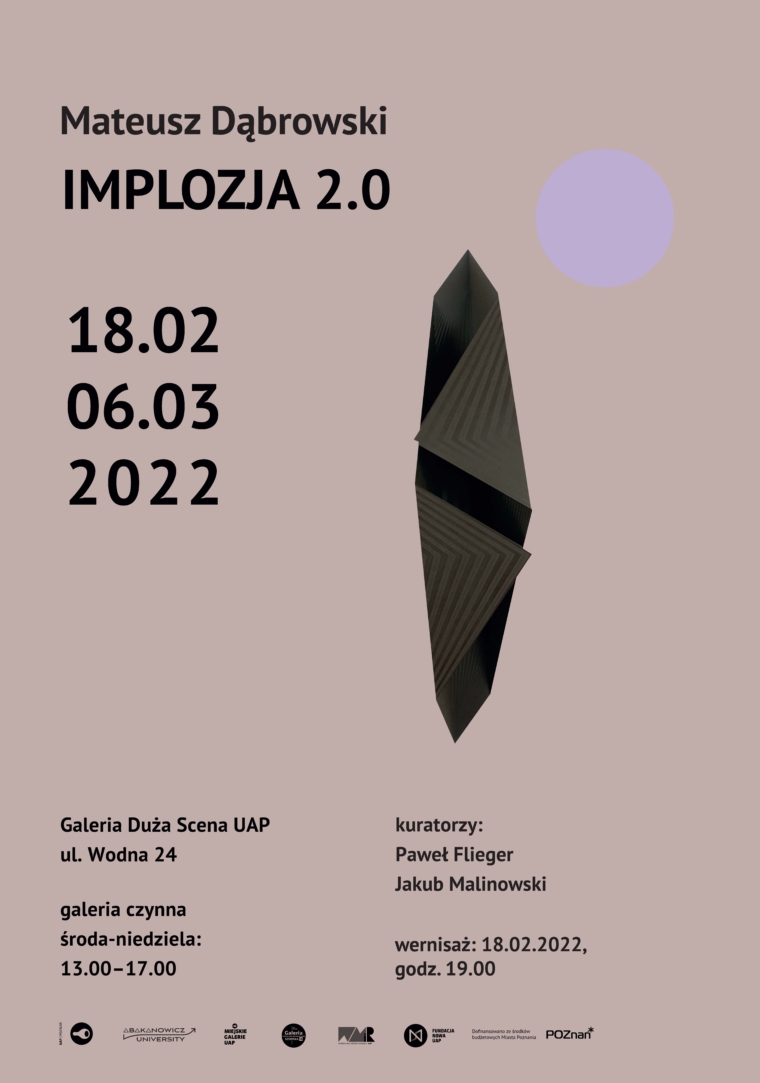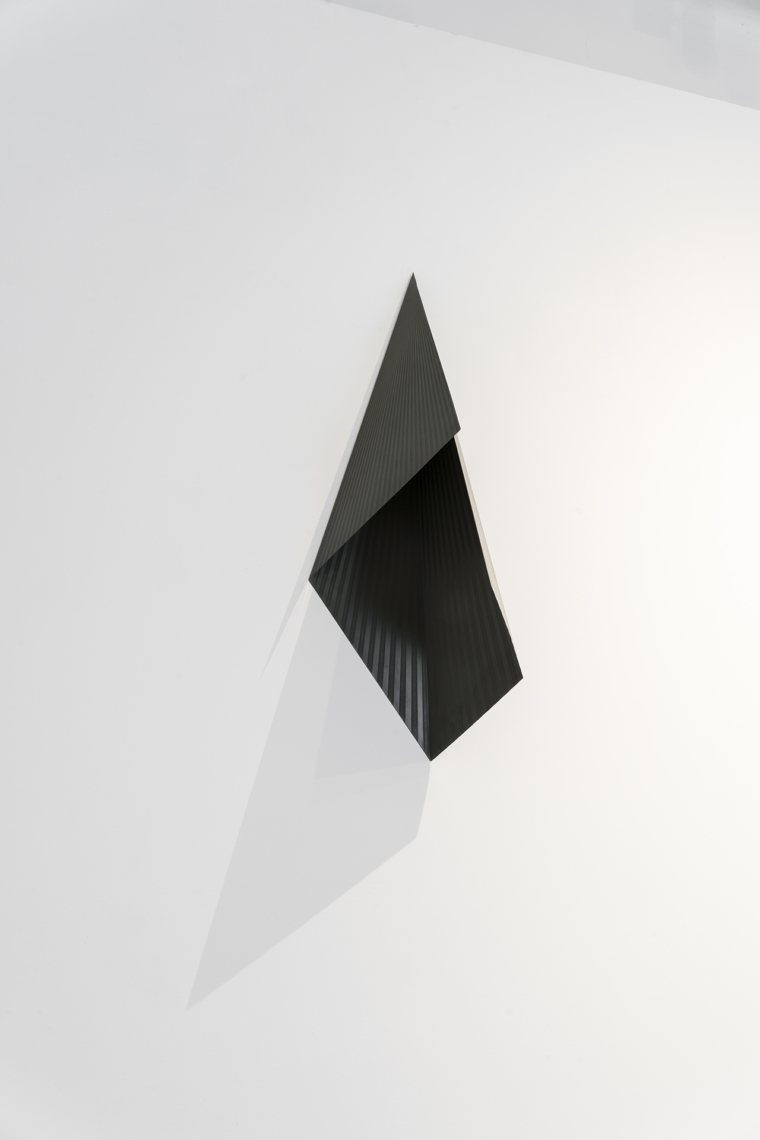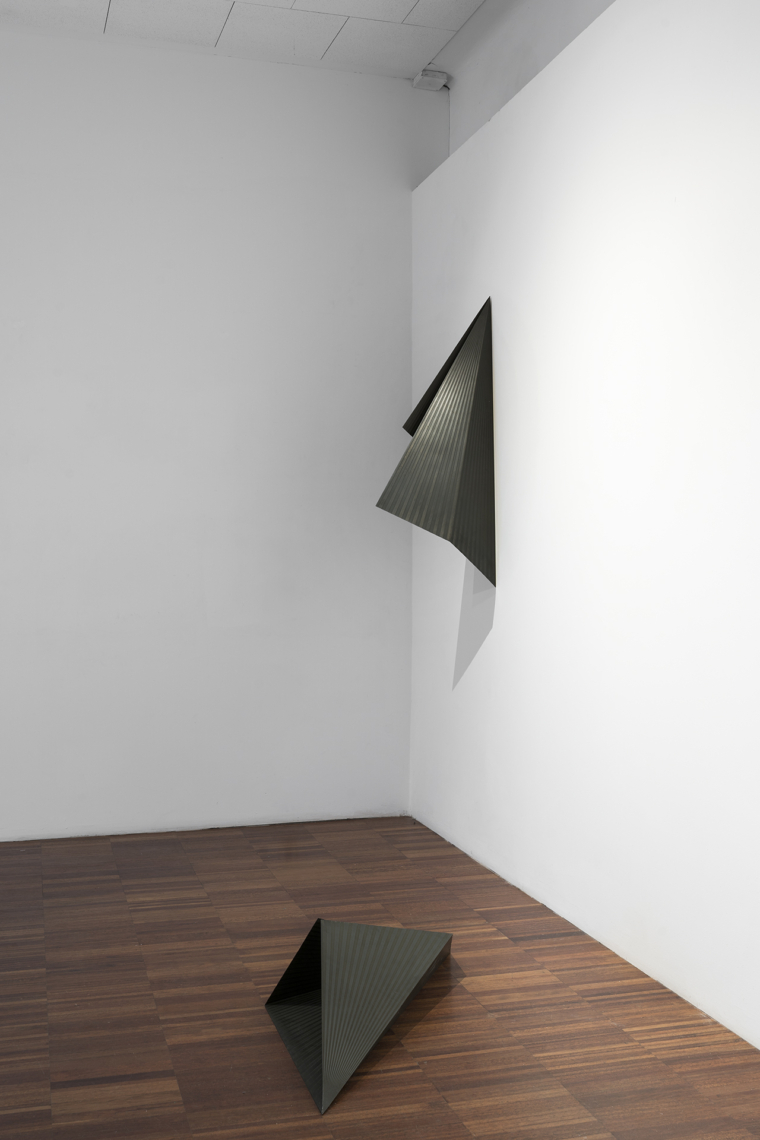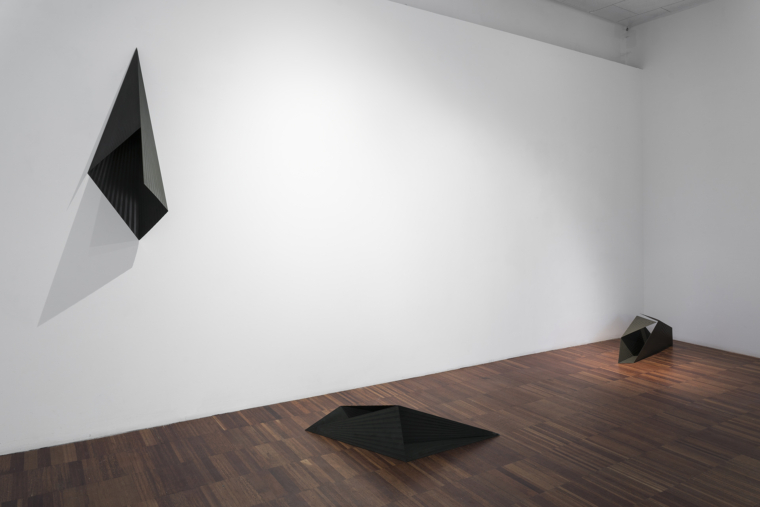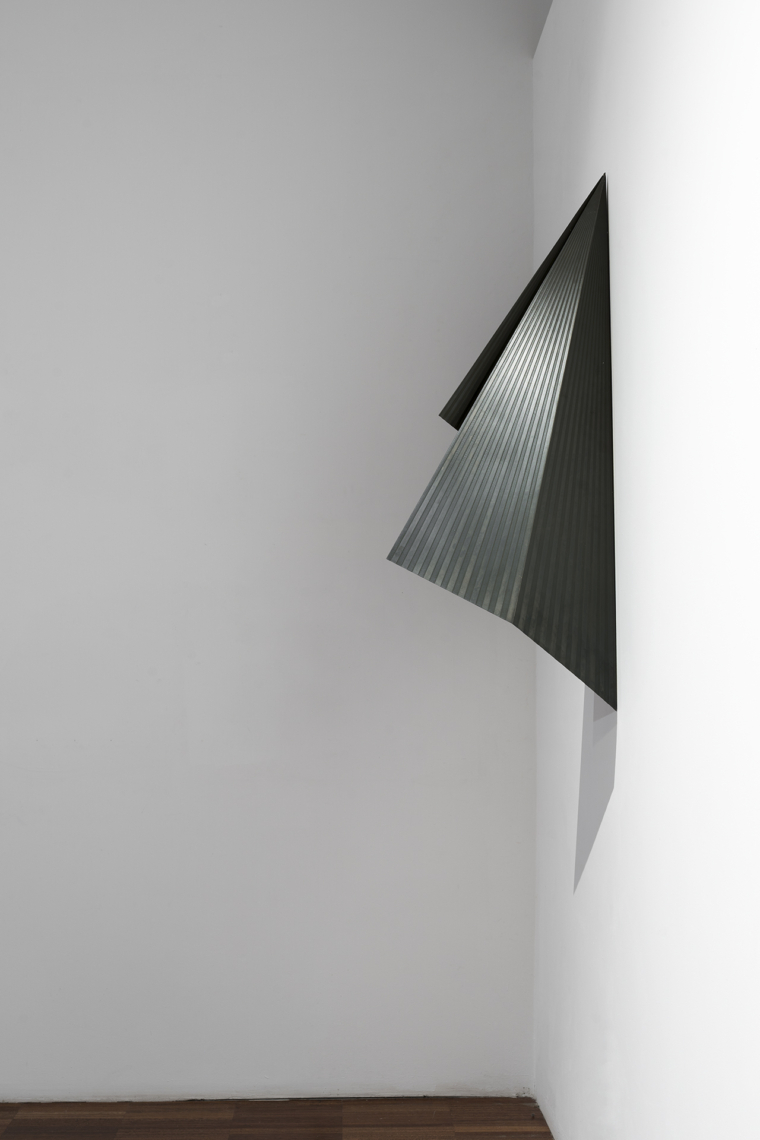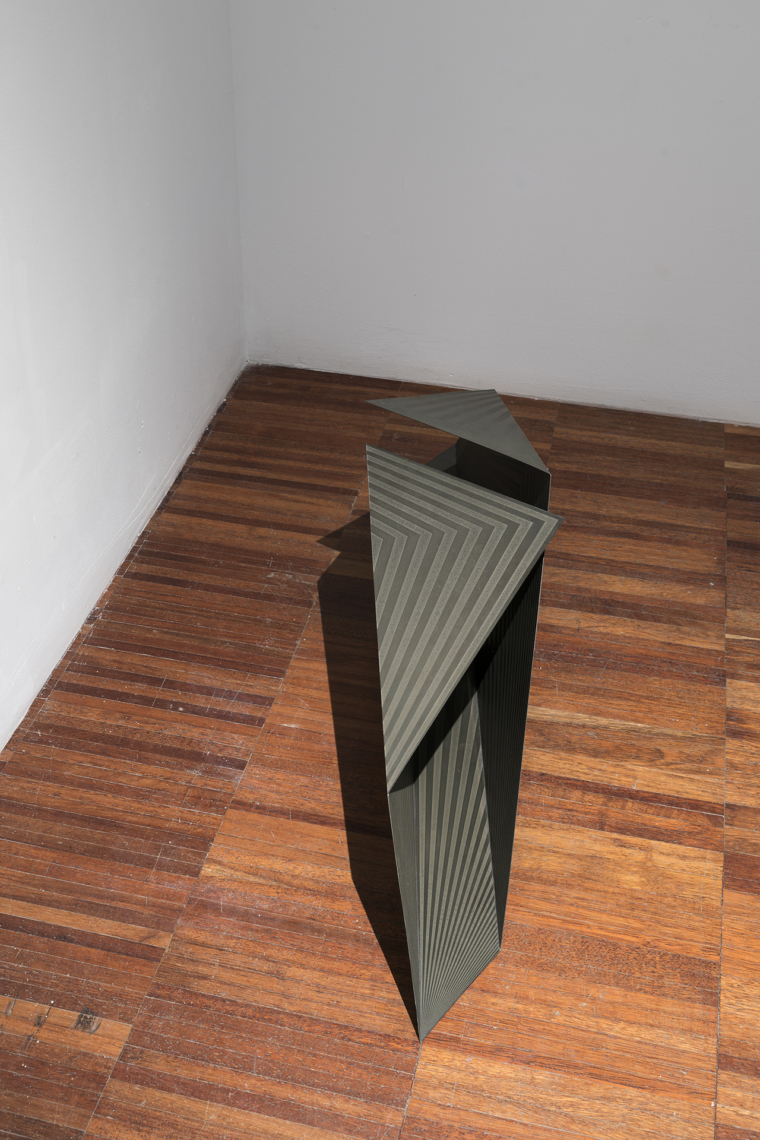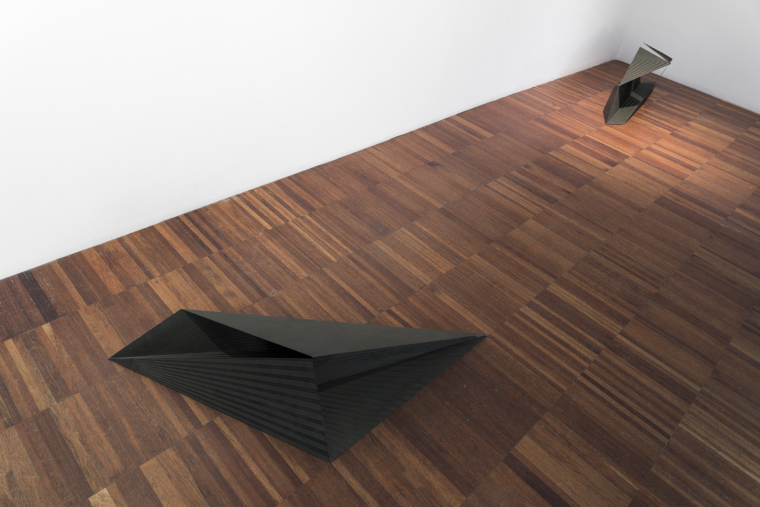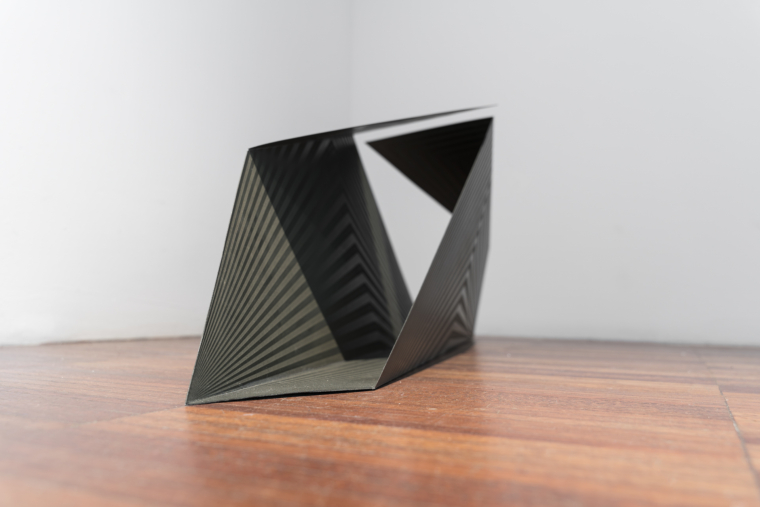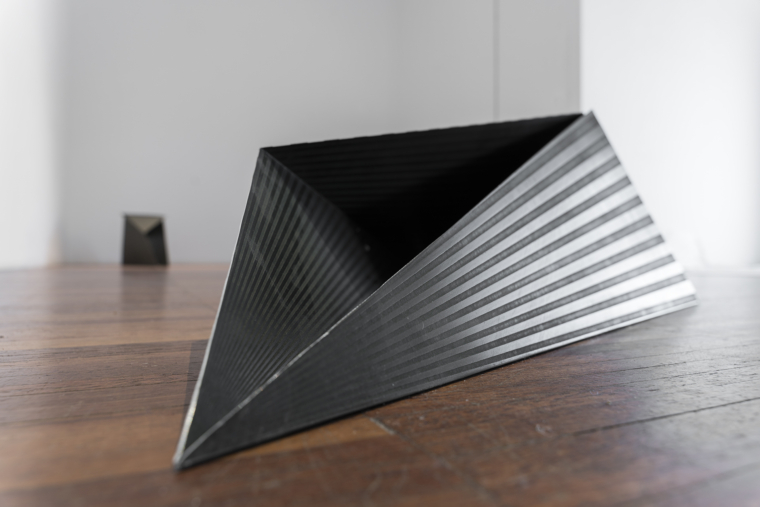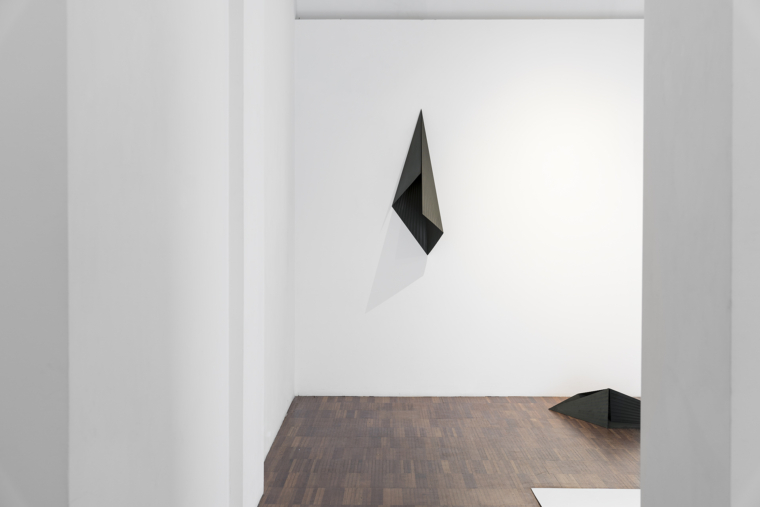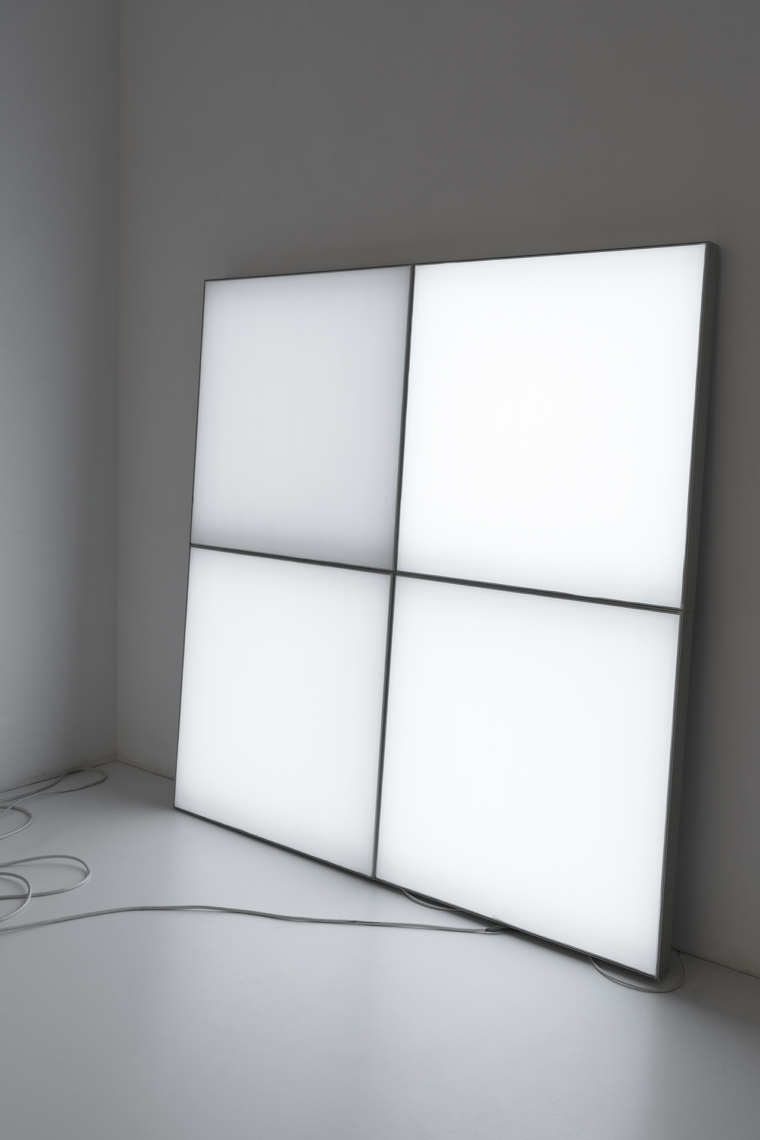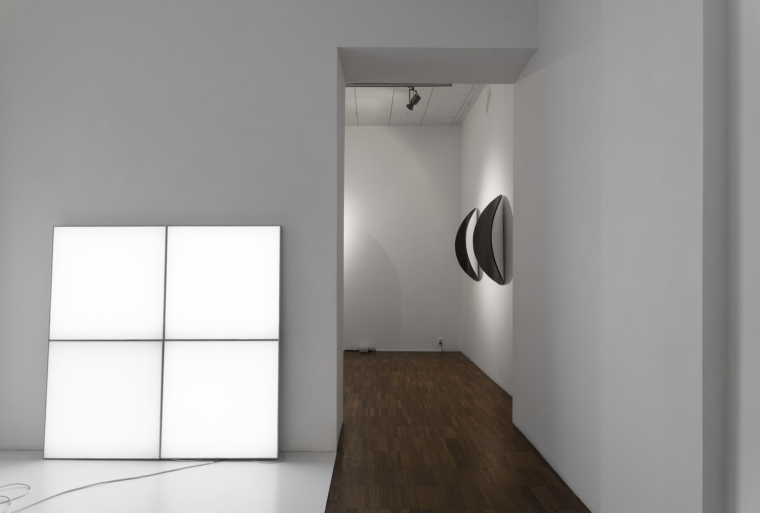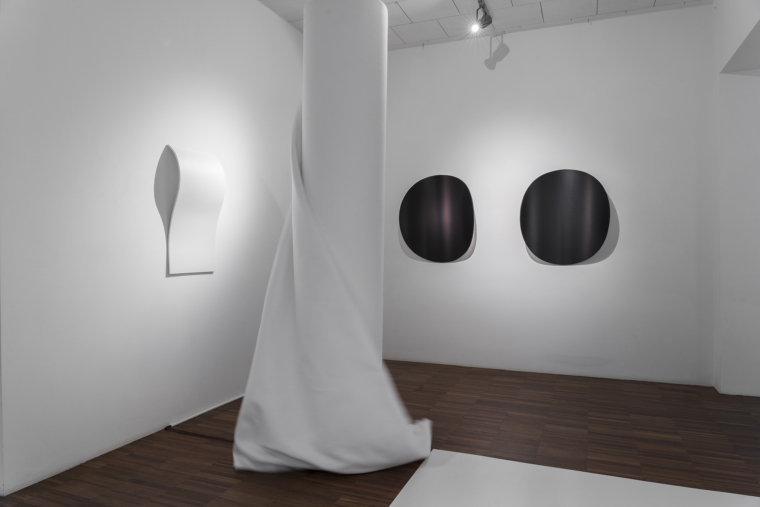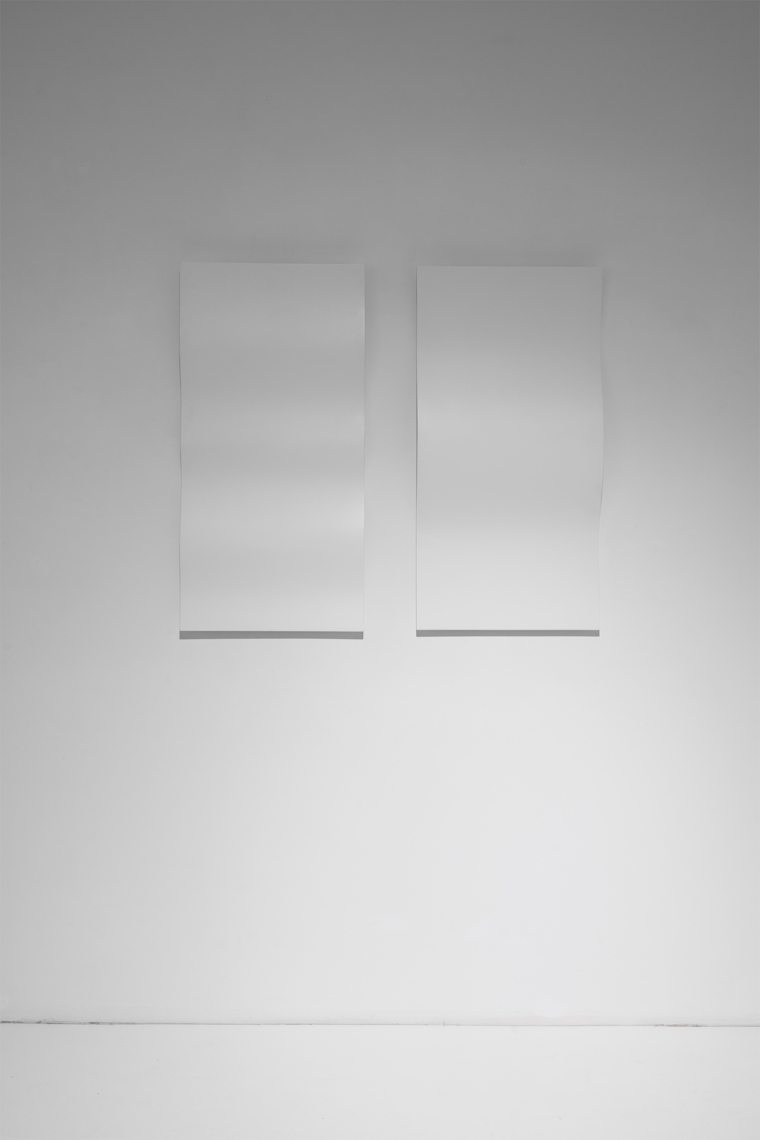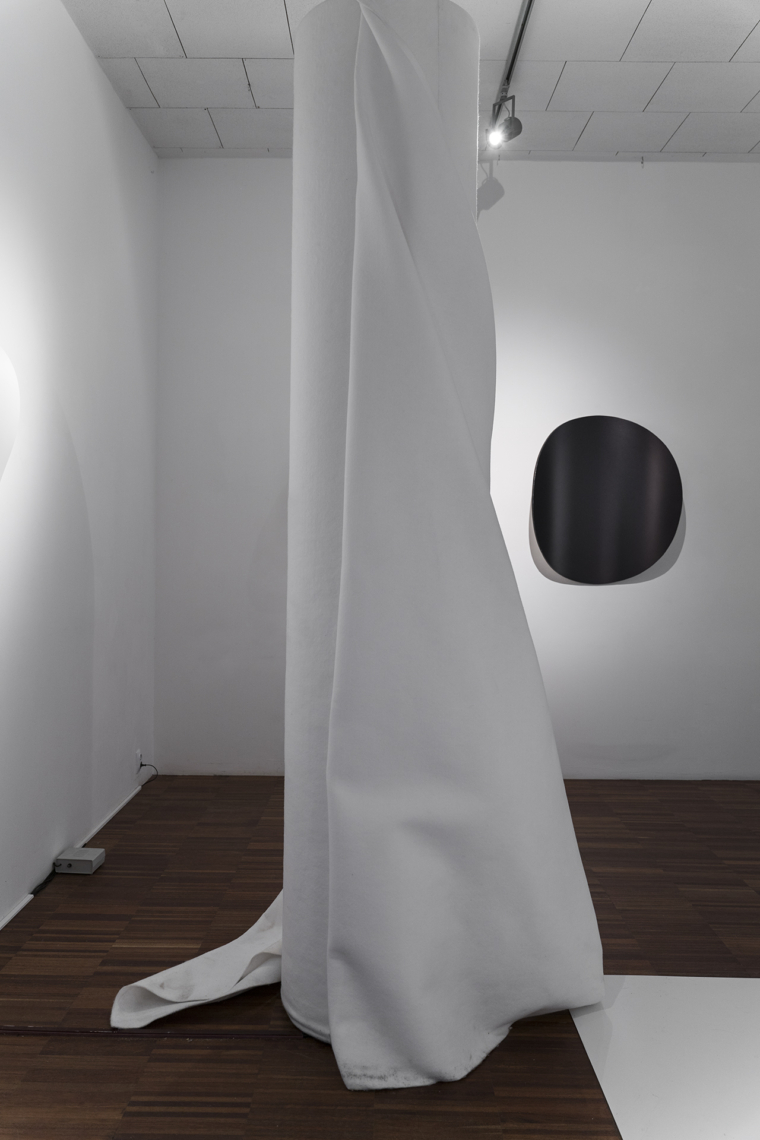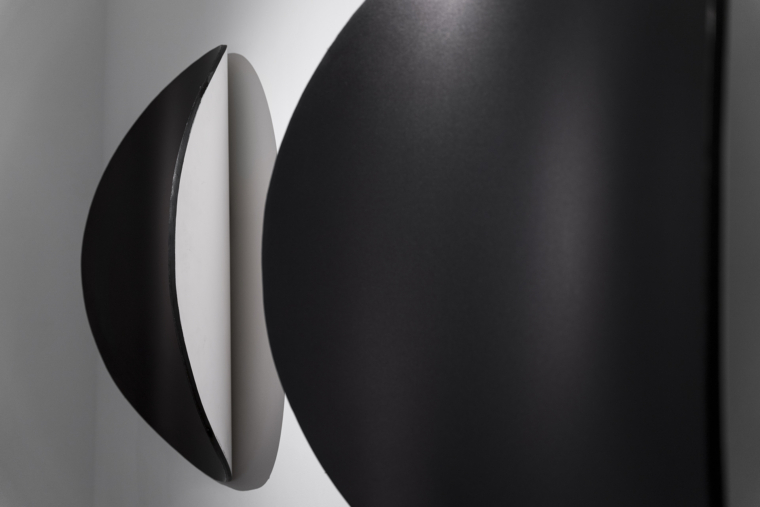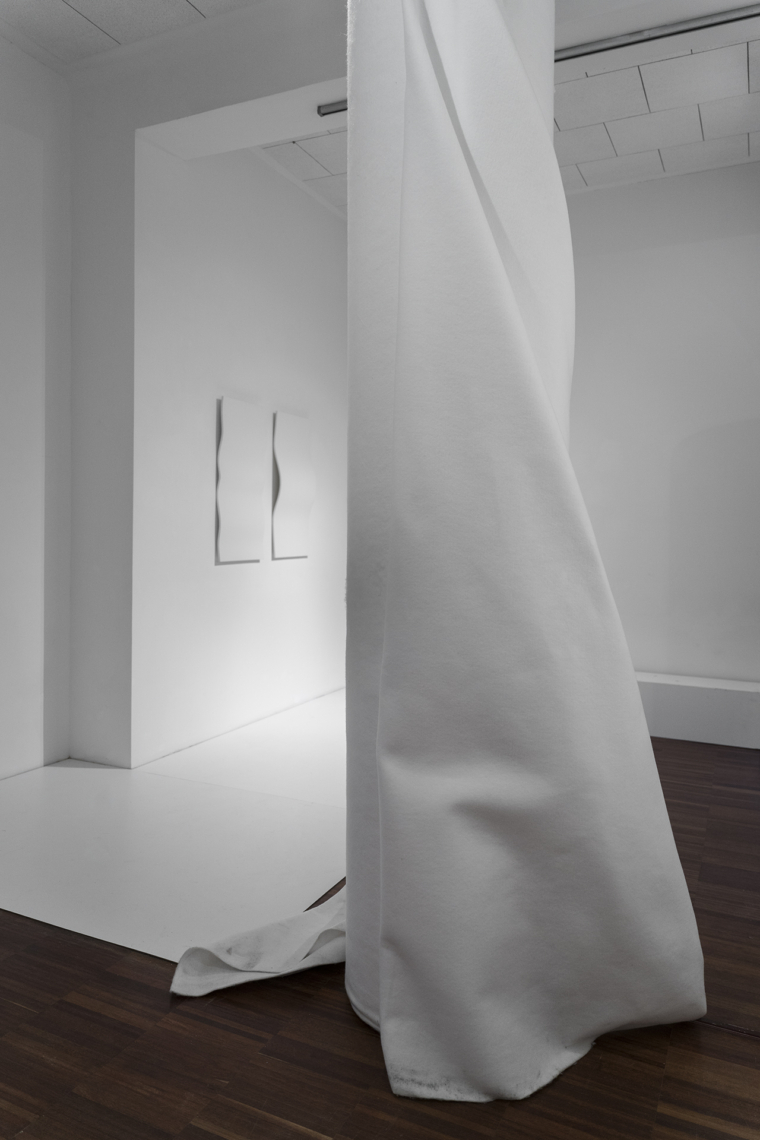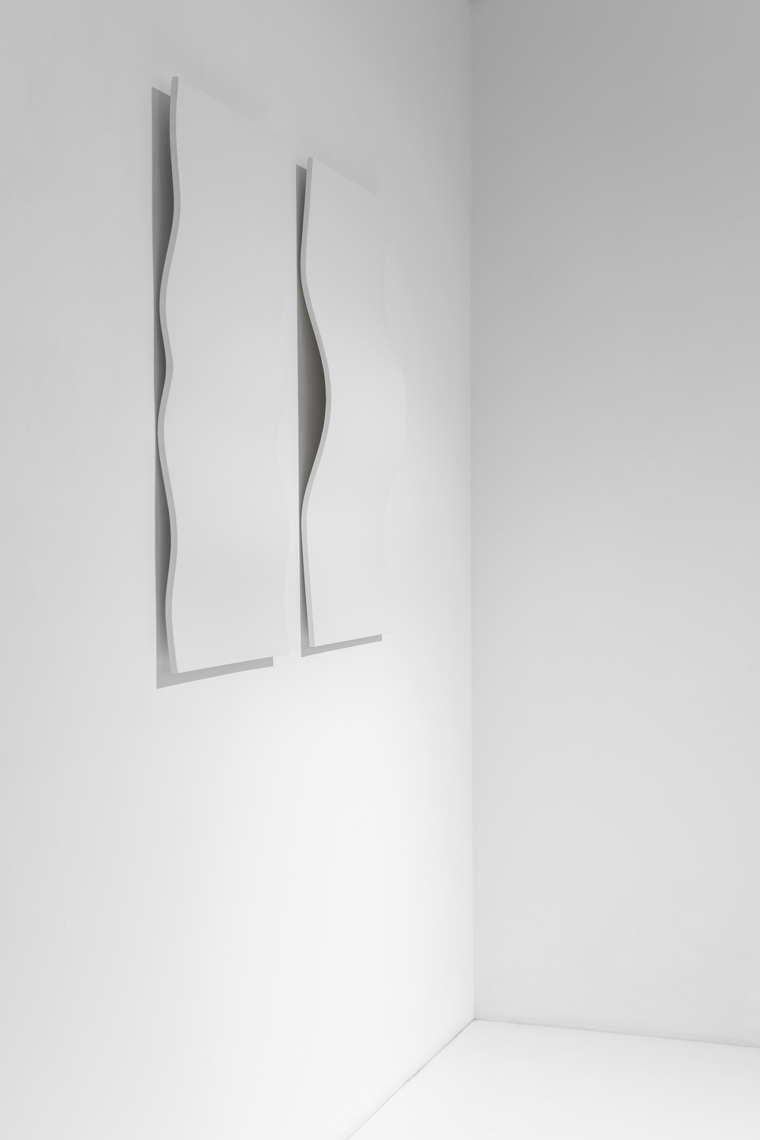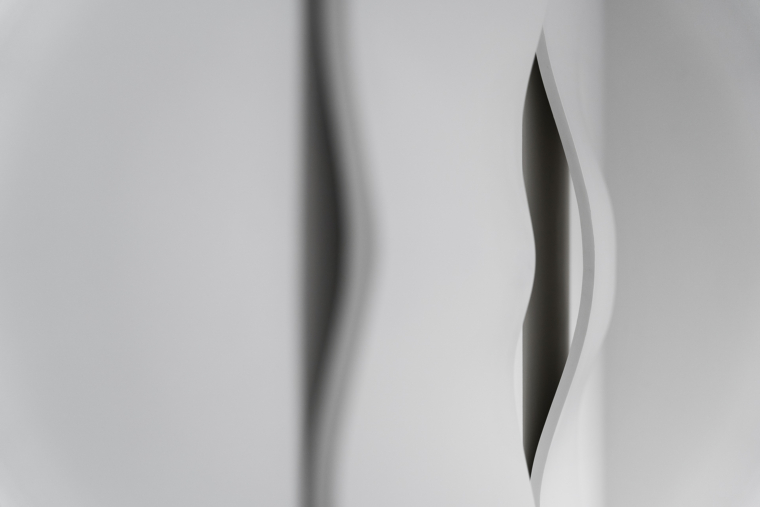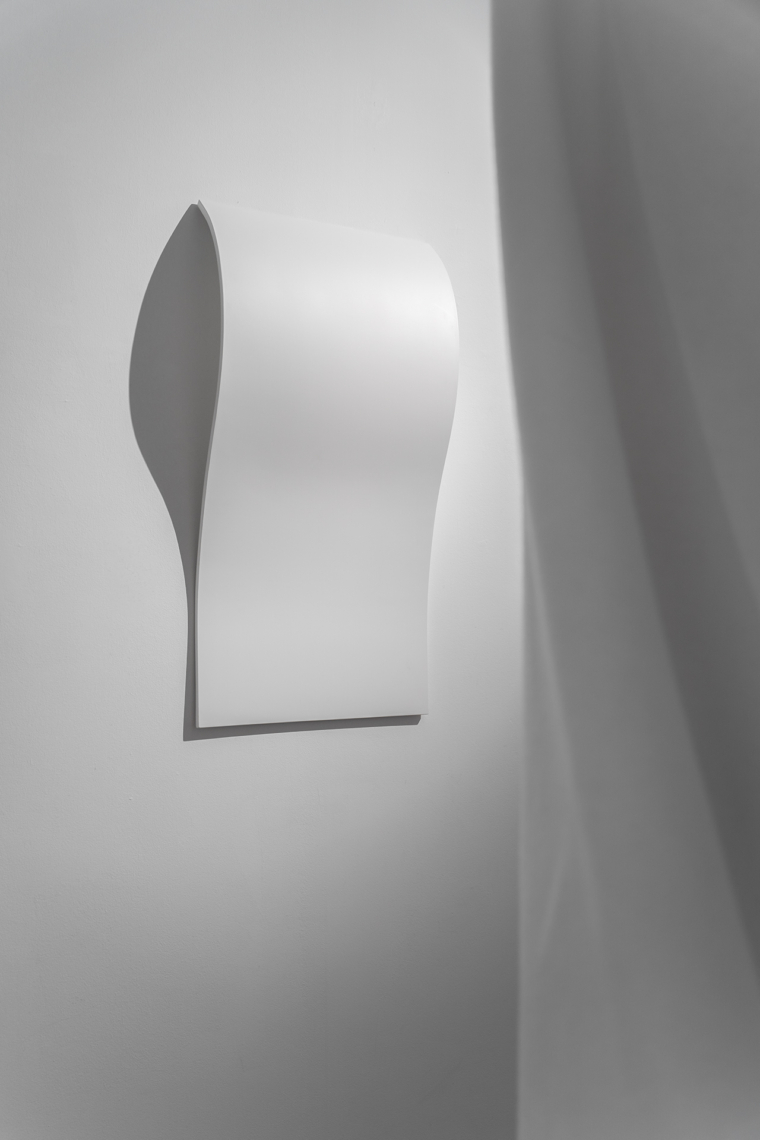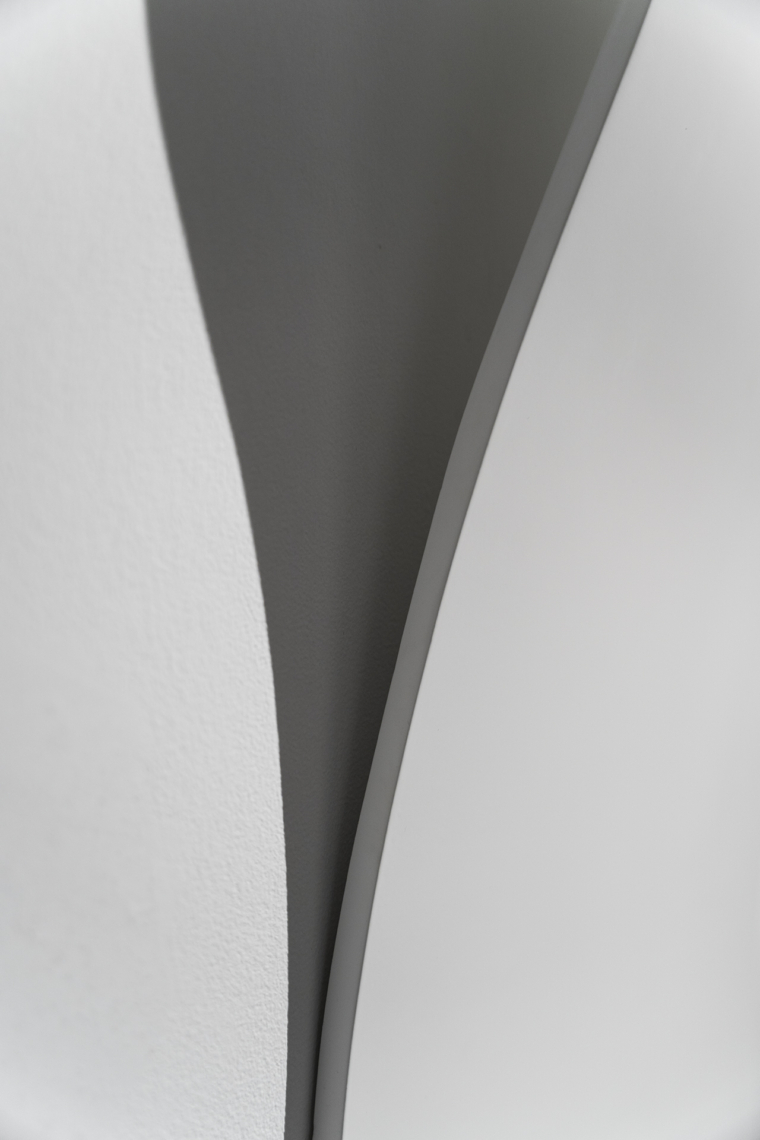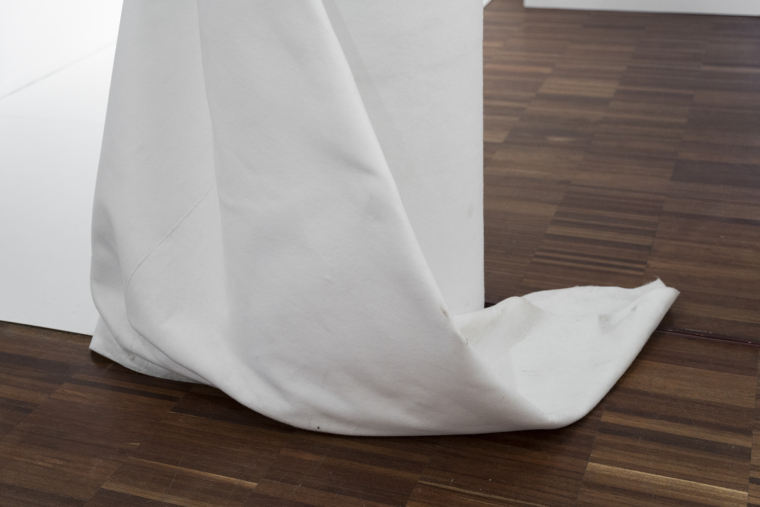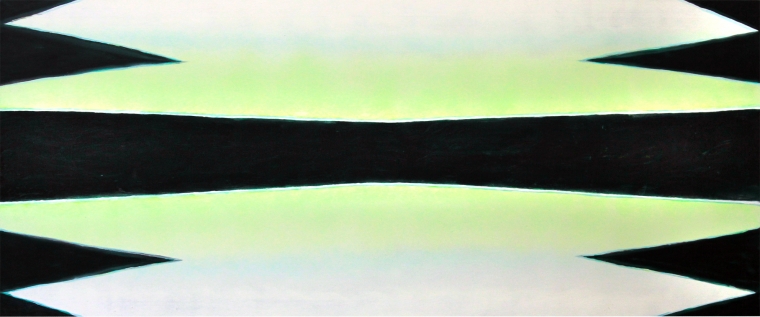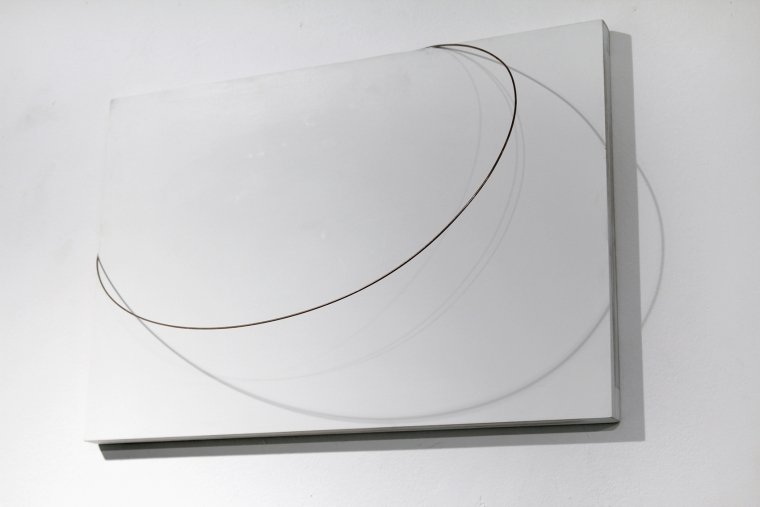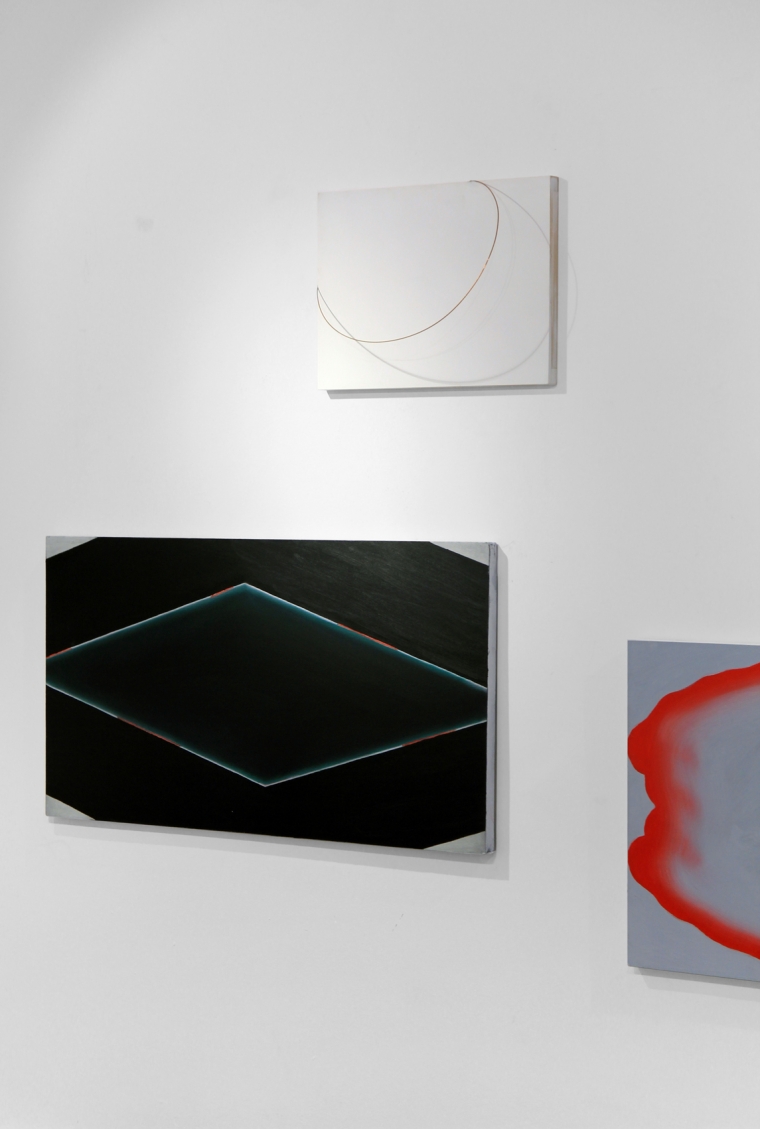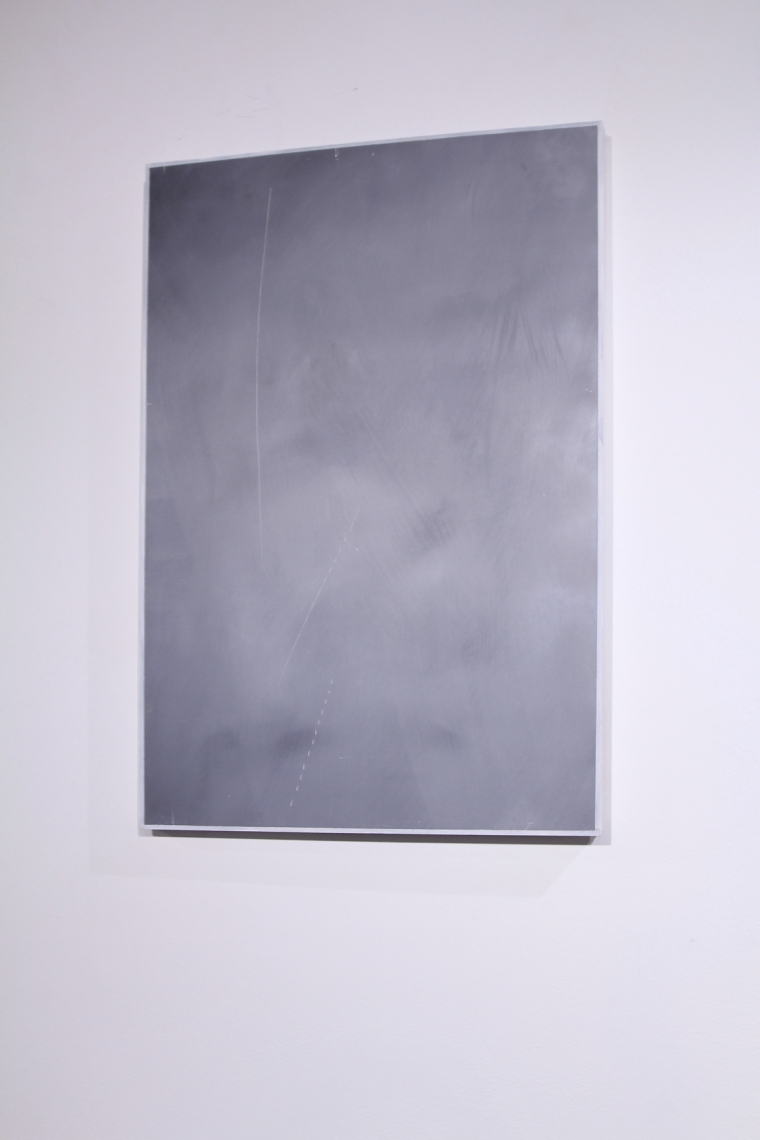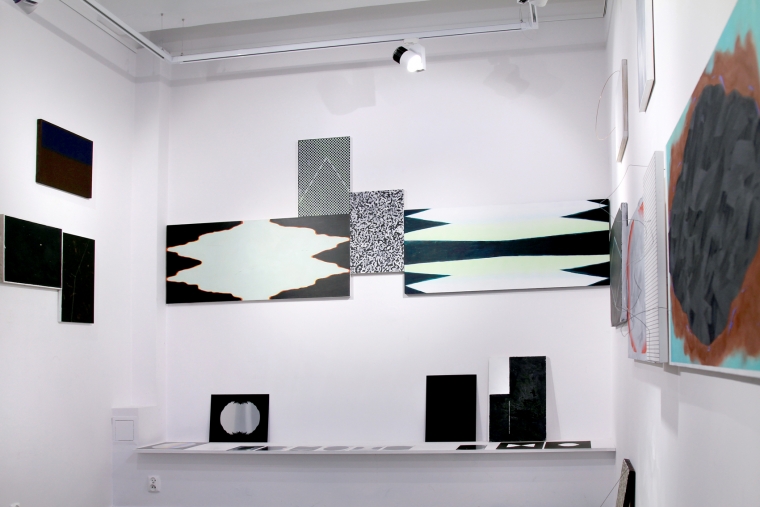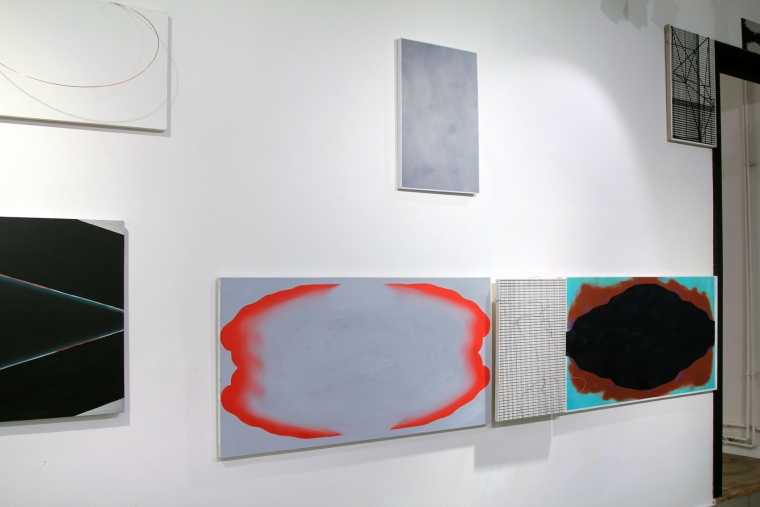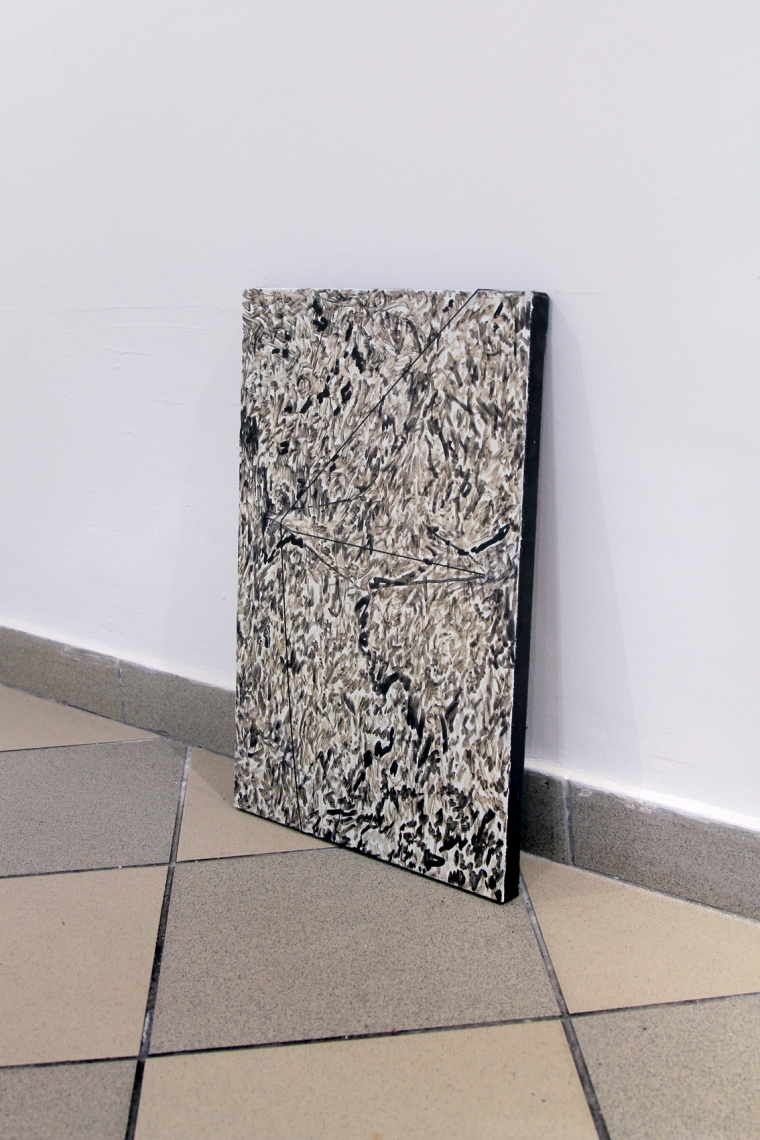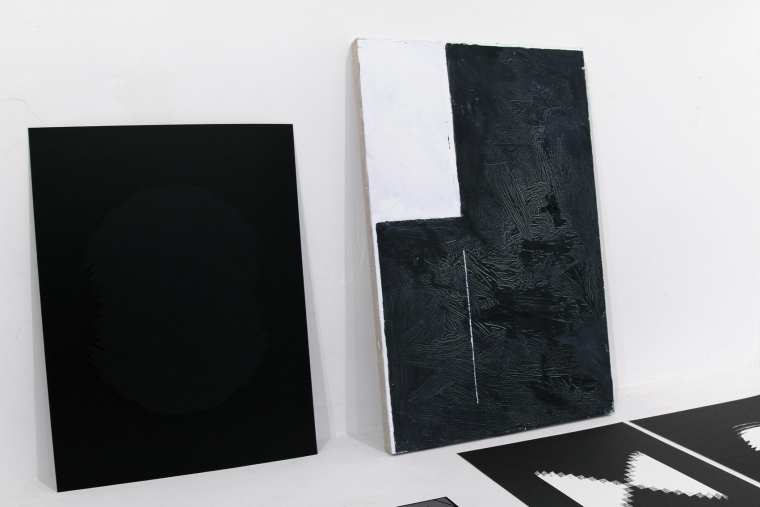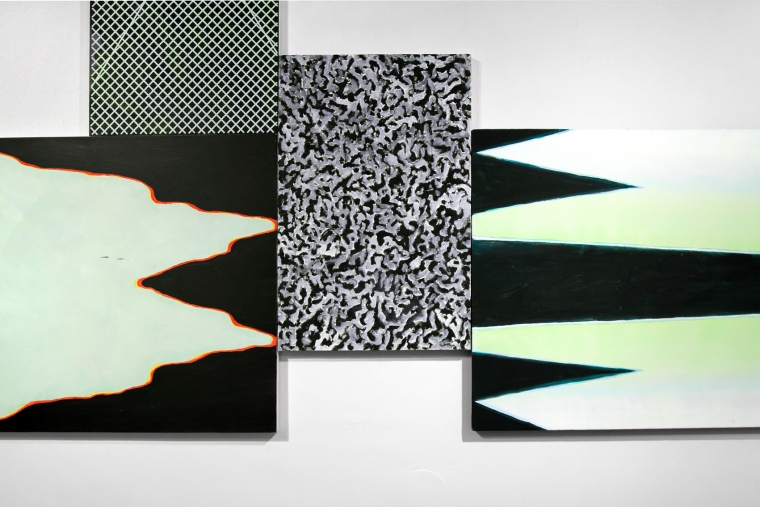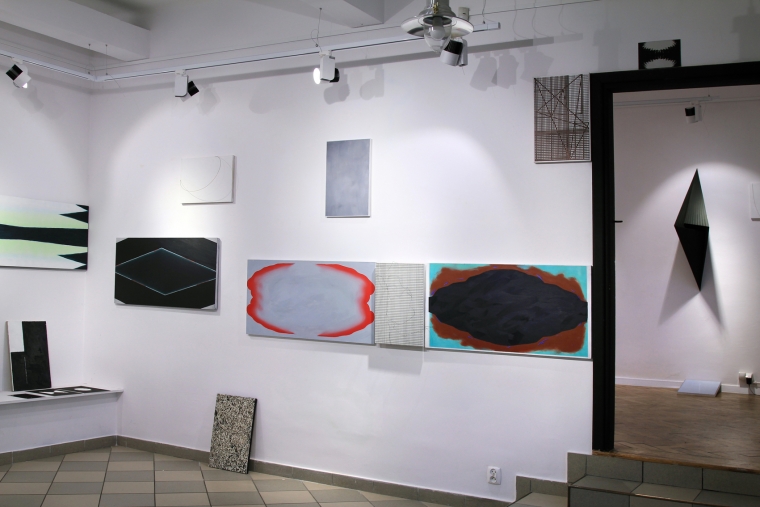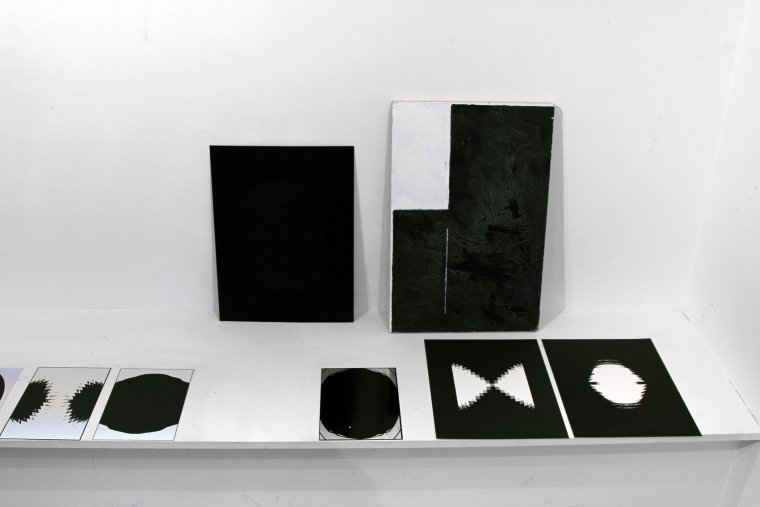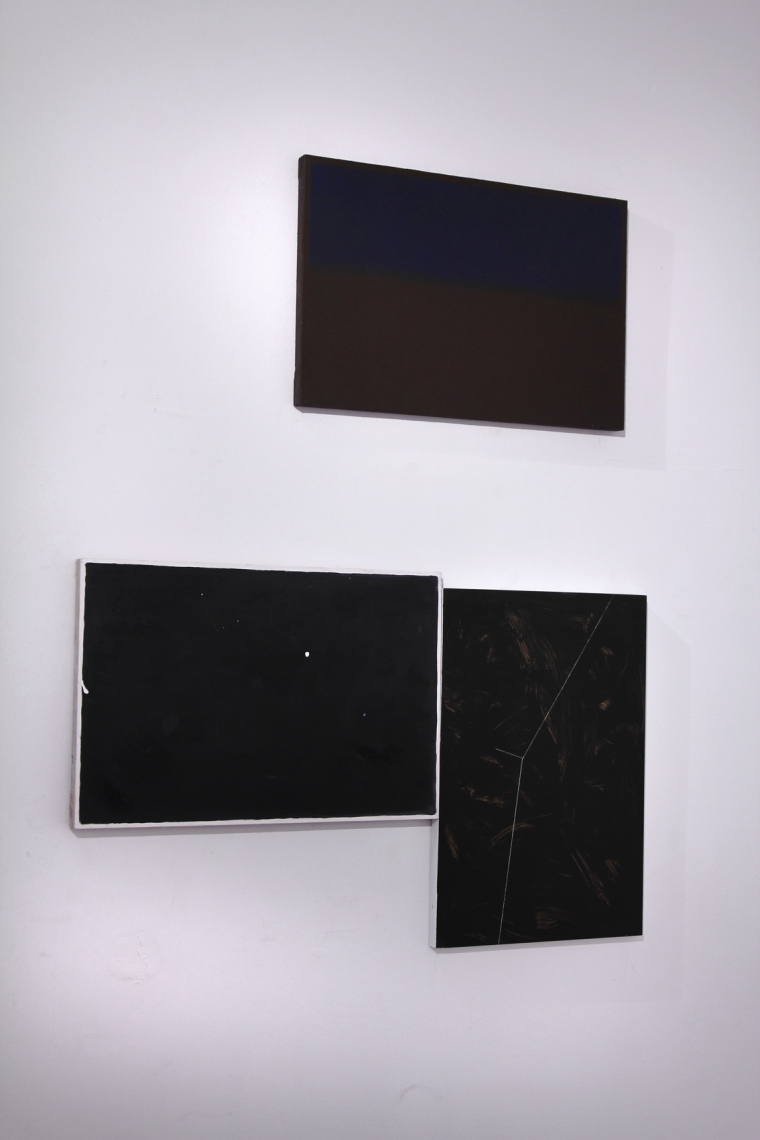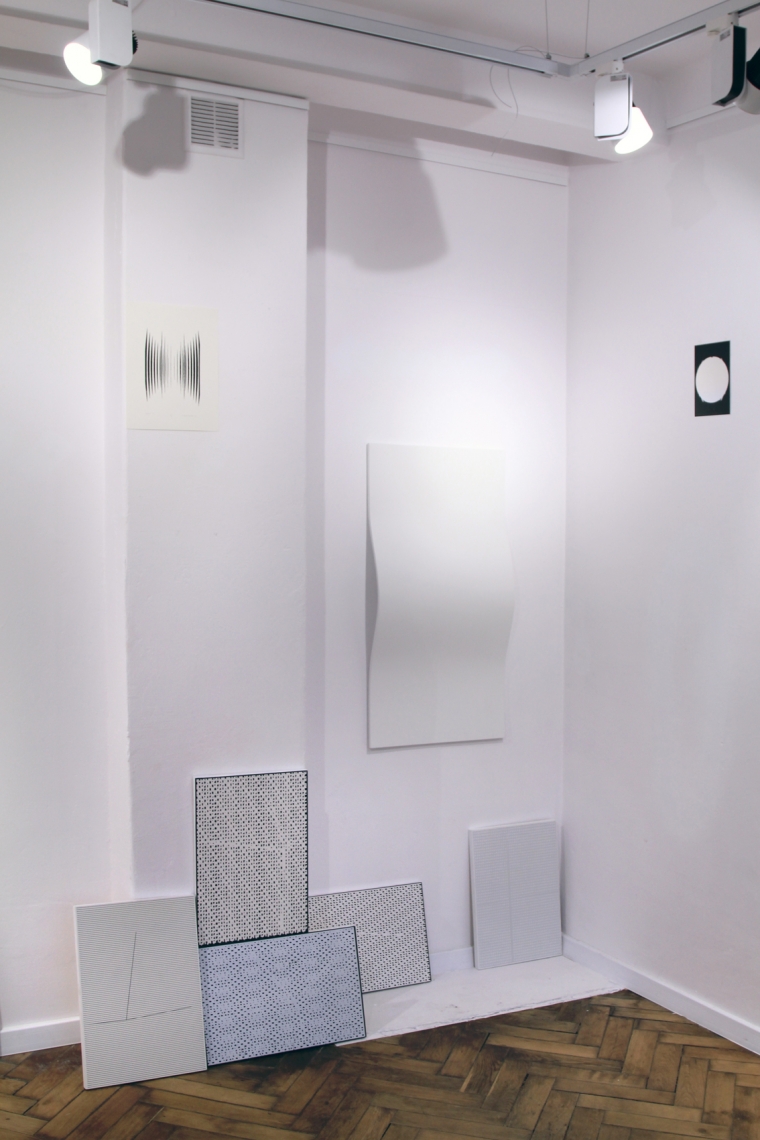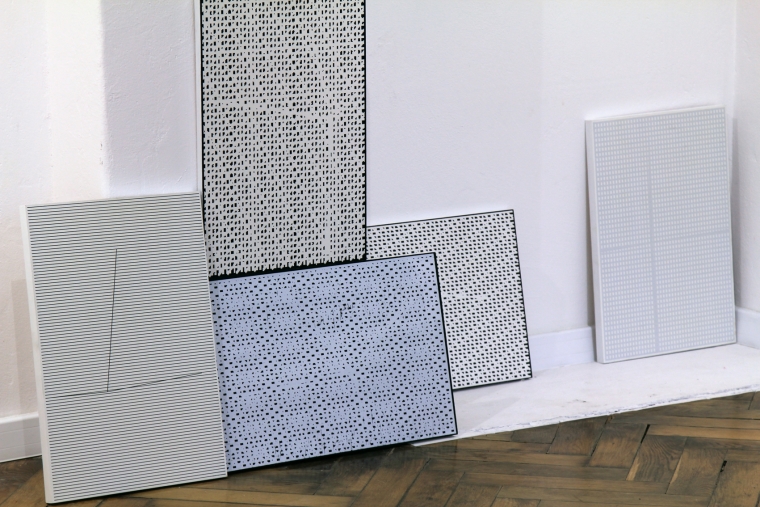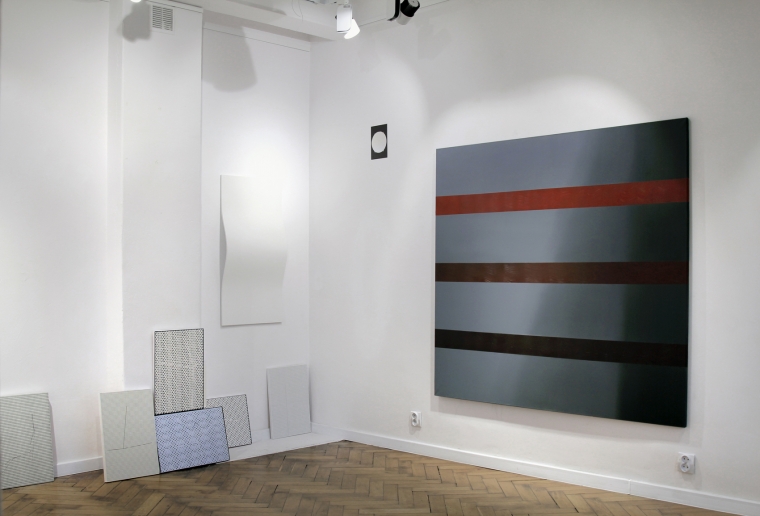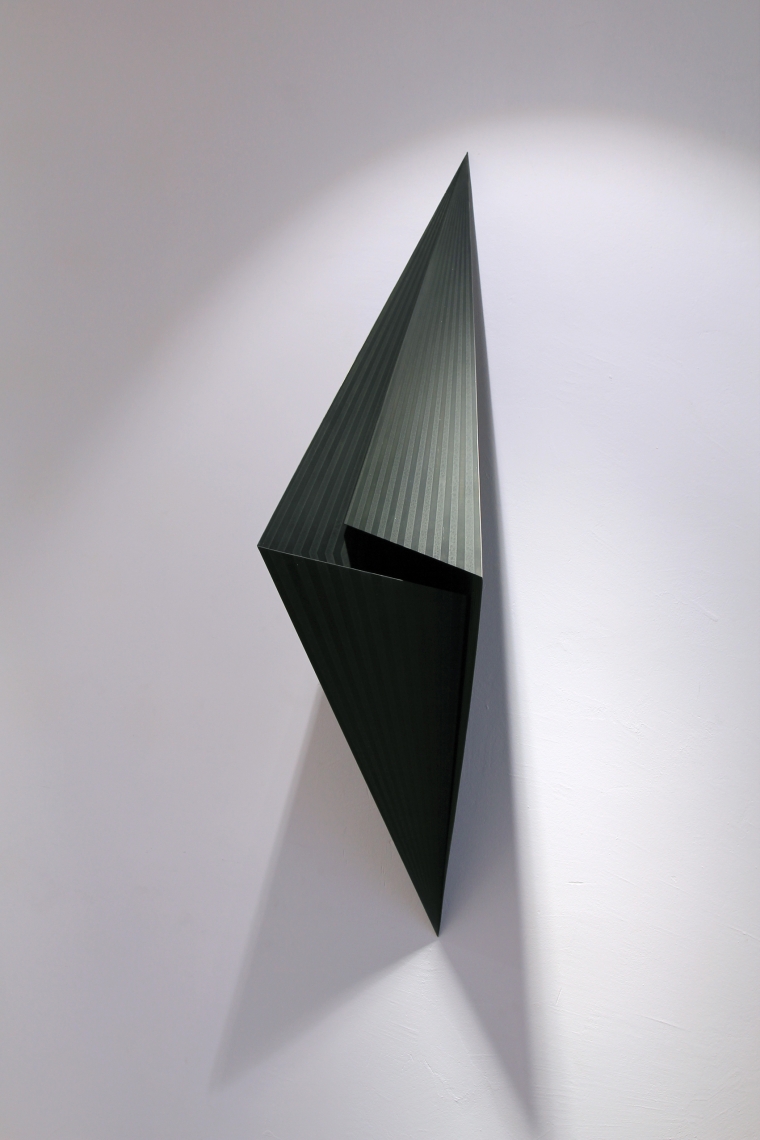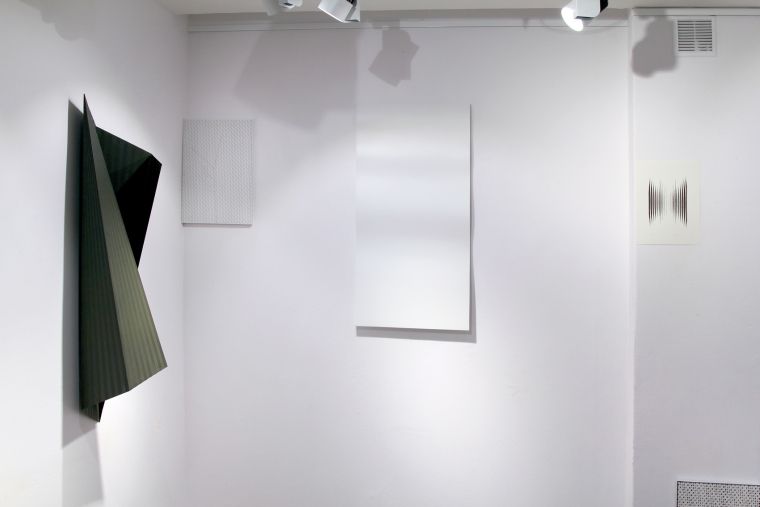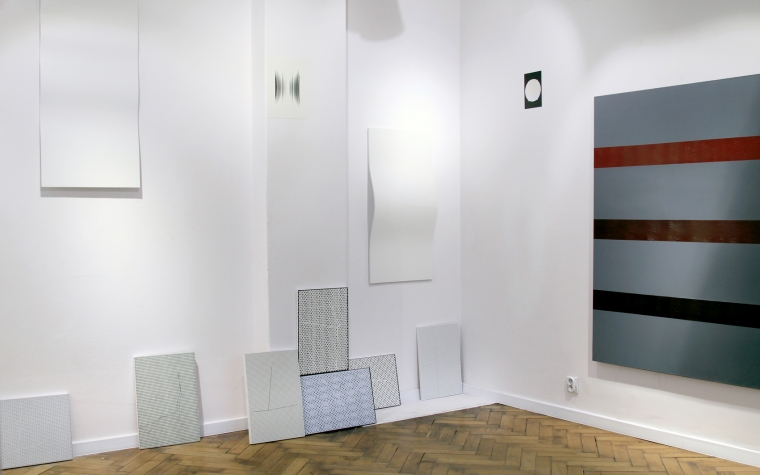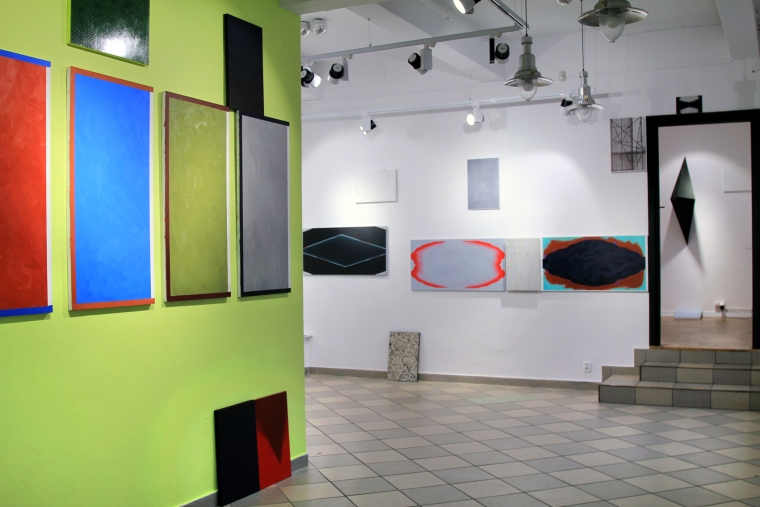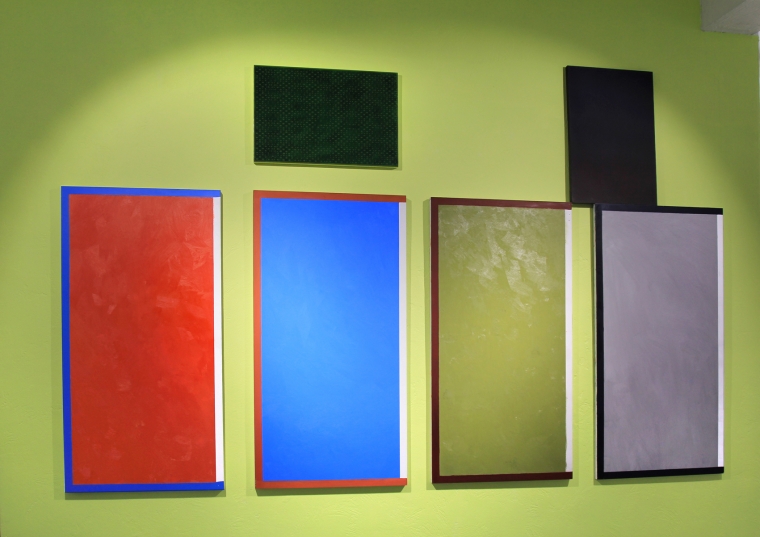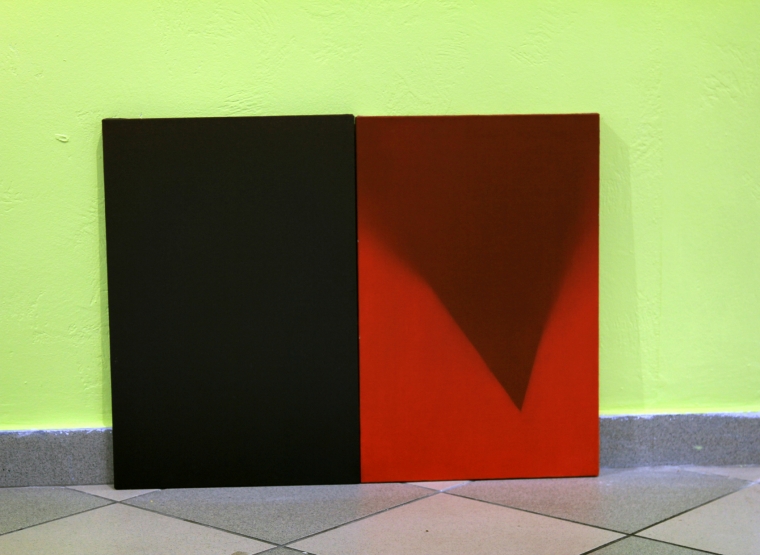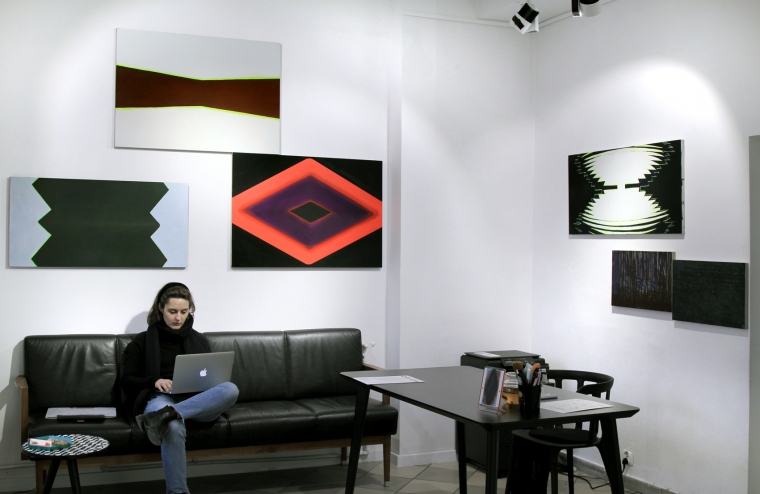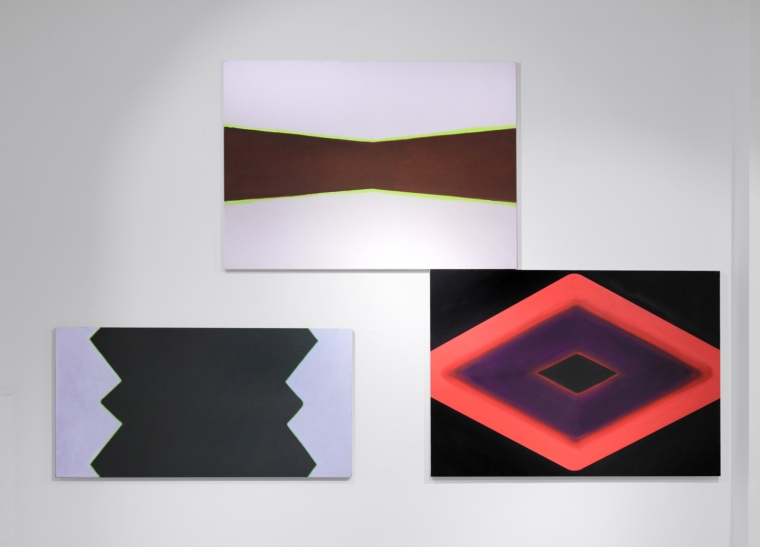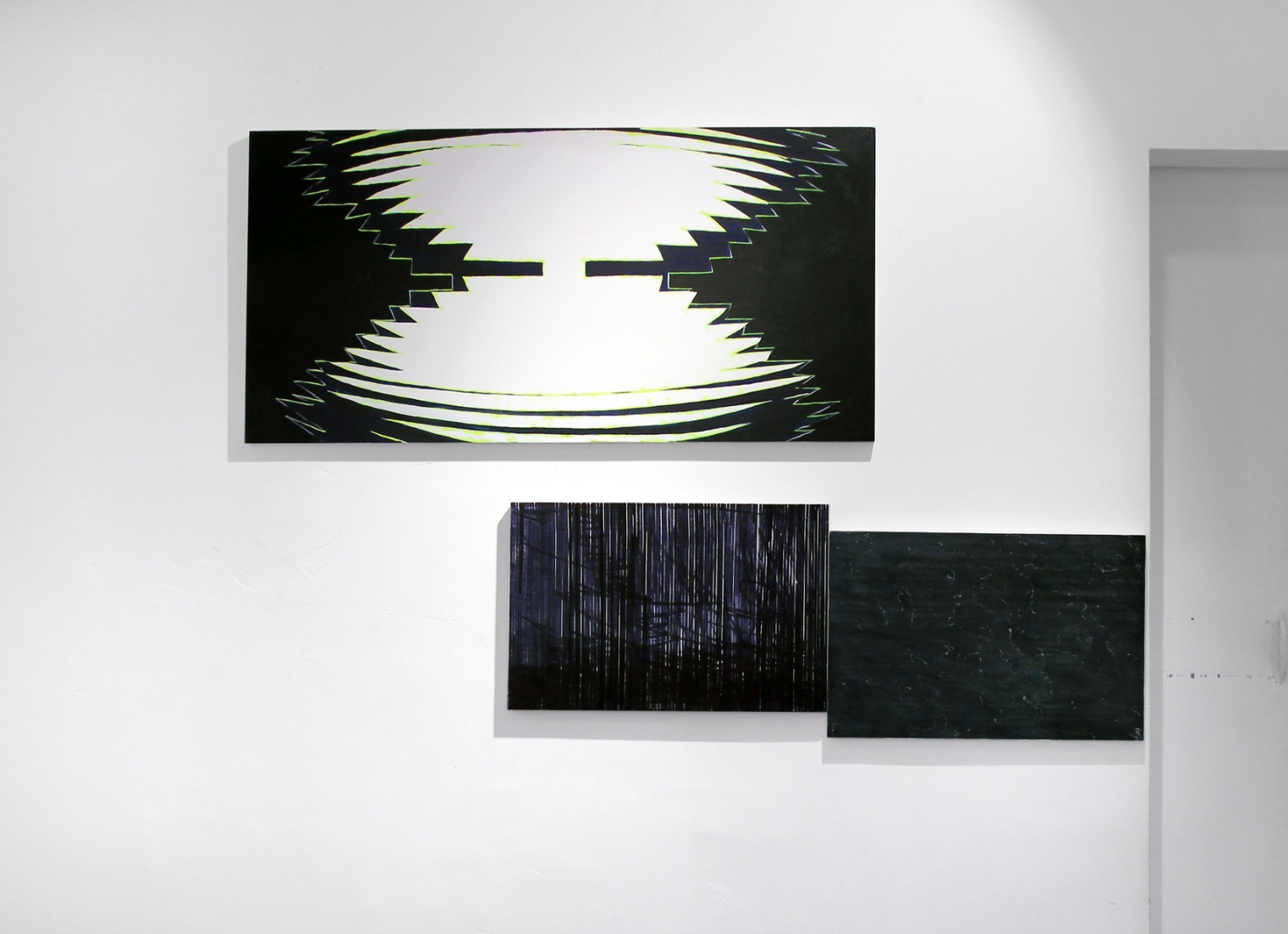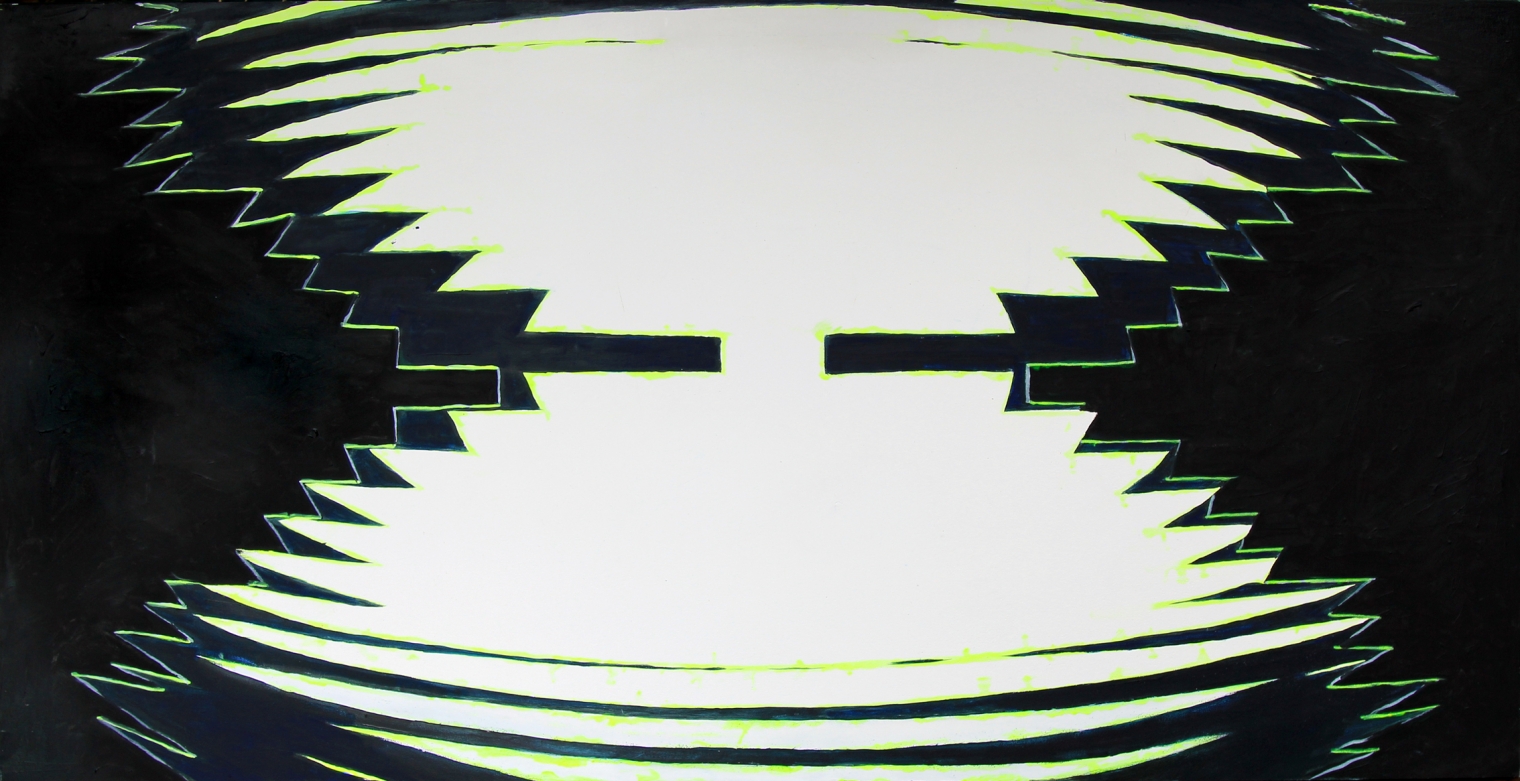PLAYPEN
.
PLAYPEN
.

design Aleksandra Kot
PLAYPEN object
.
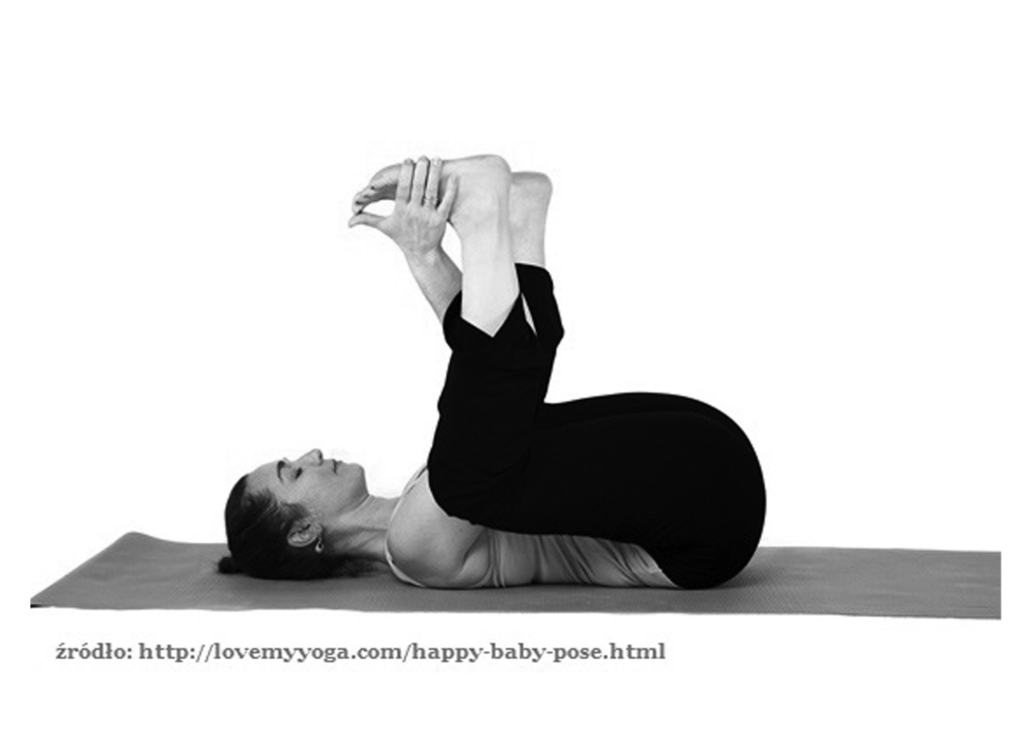
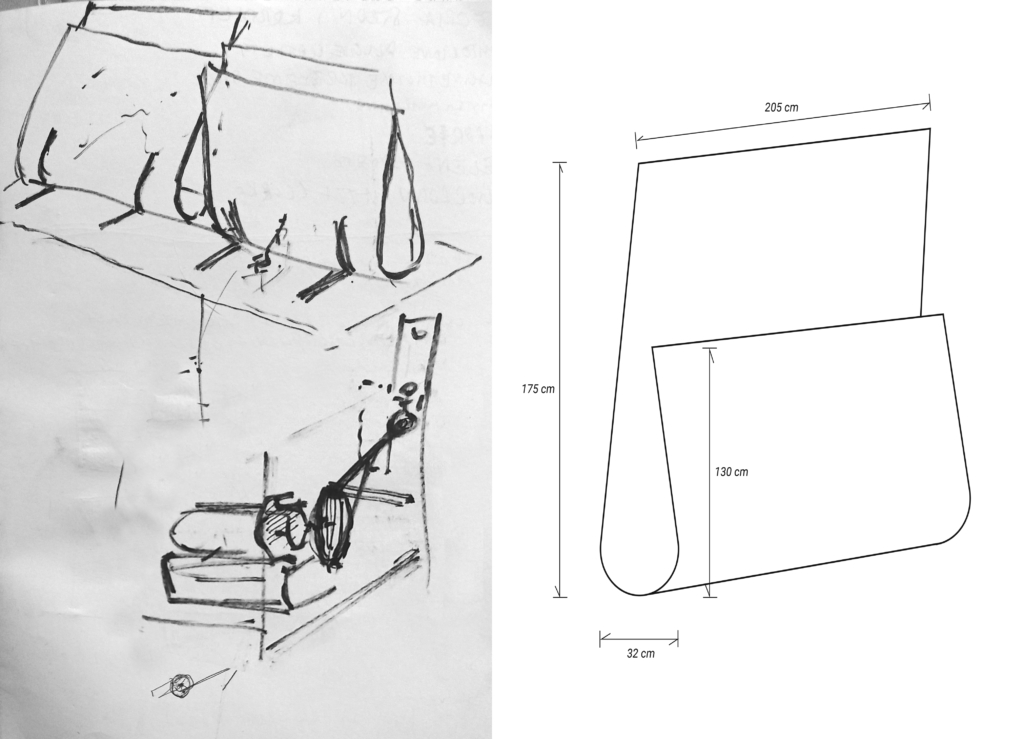
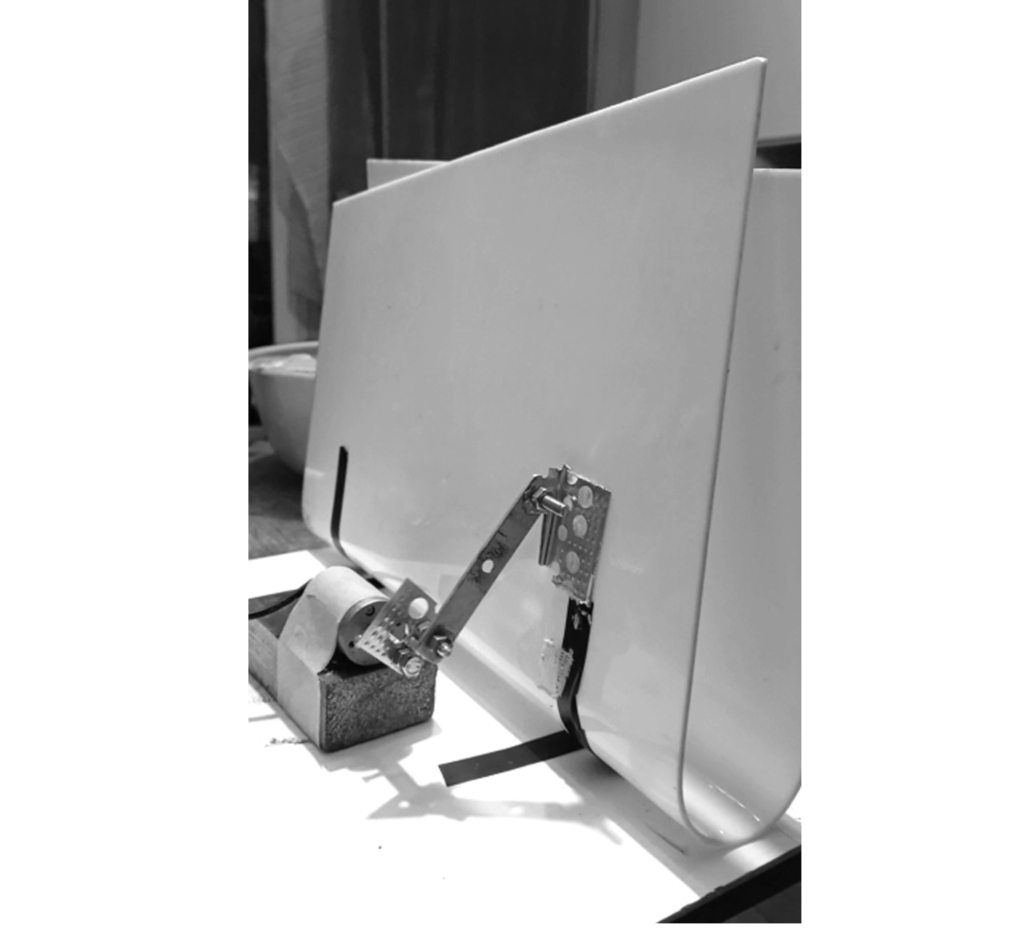

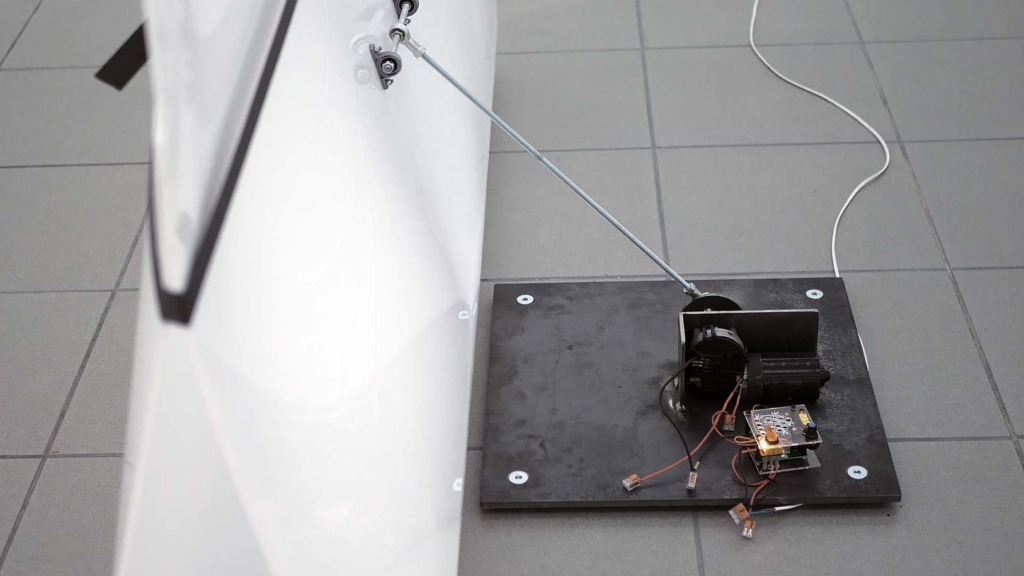



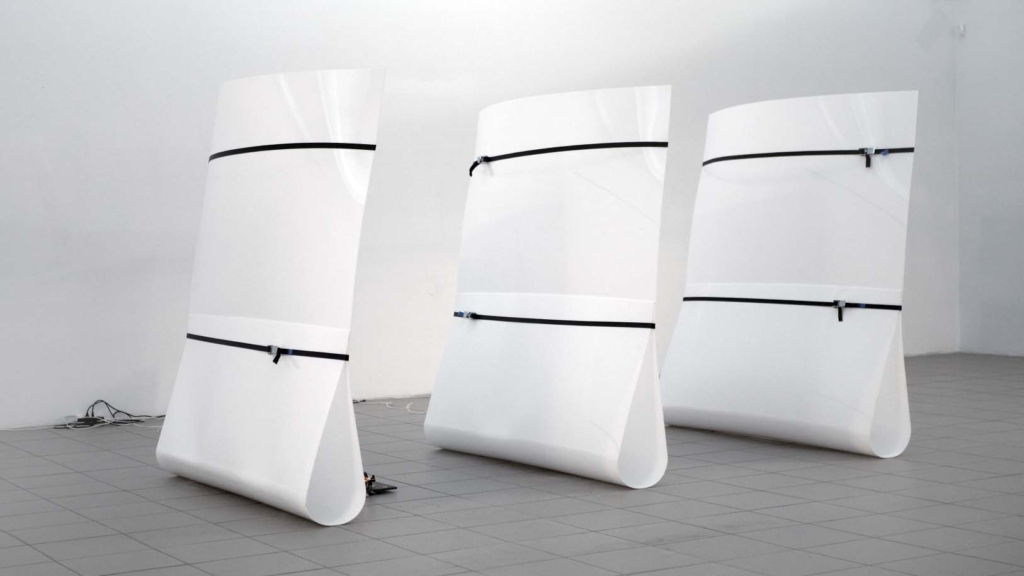
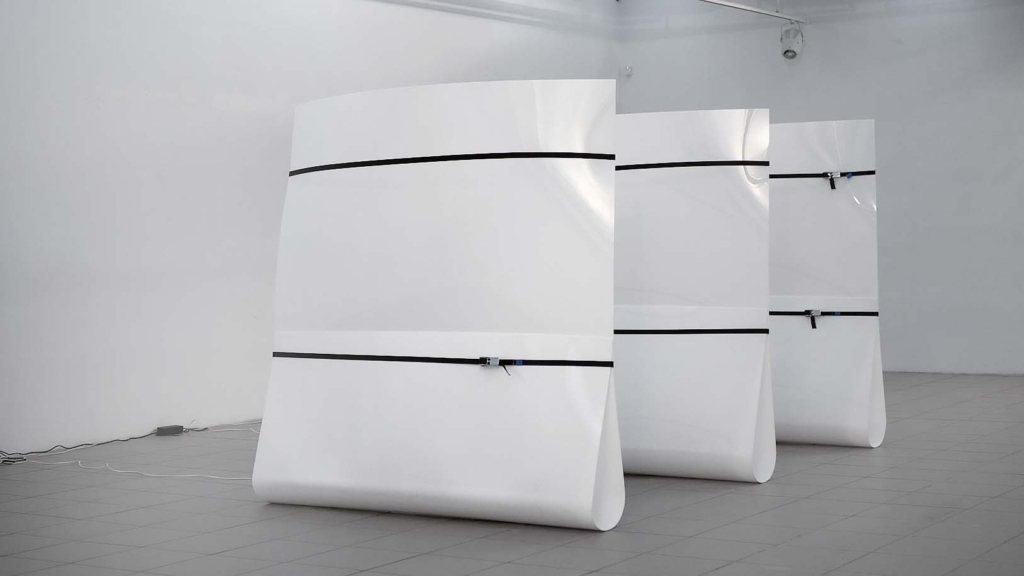

.
.
.
.
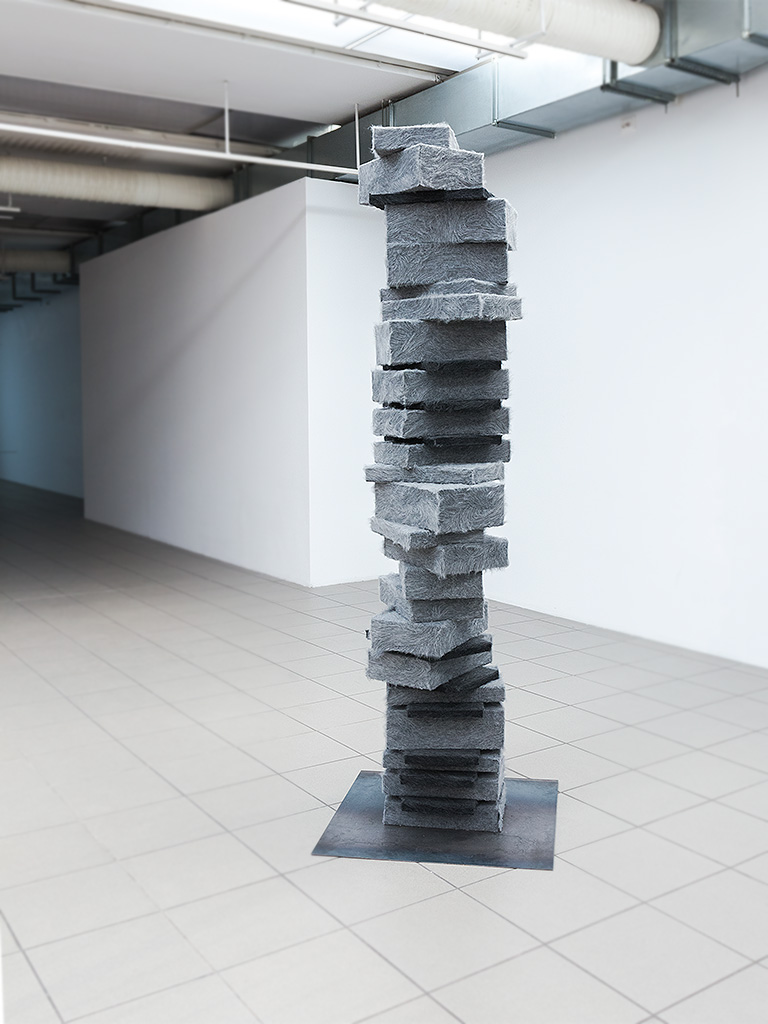

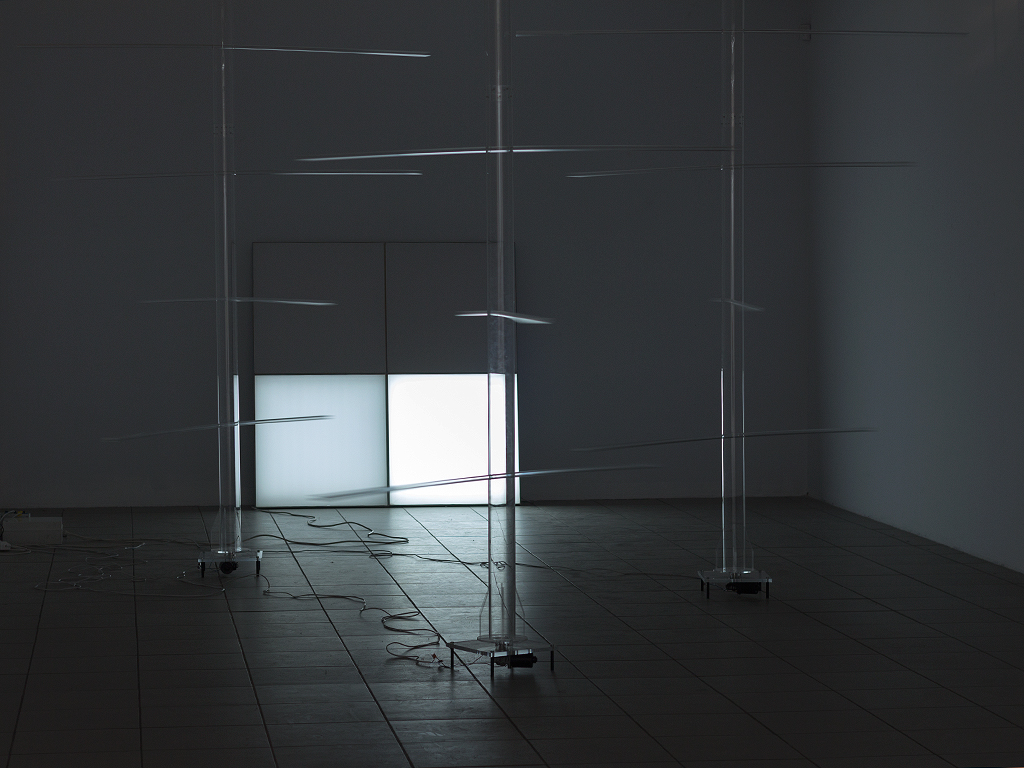


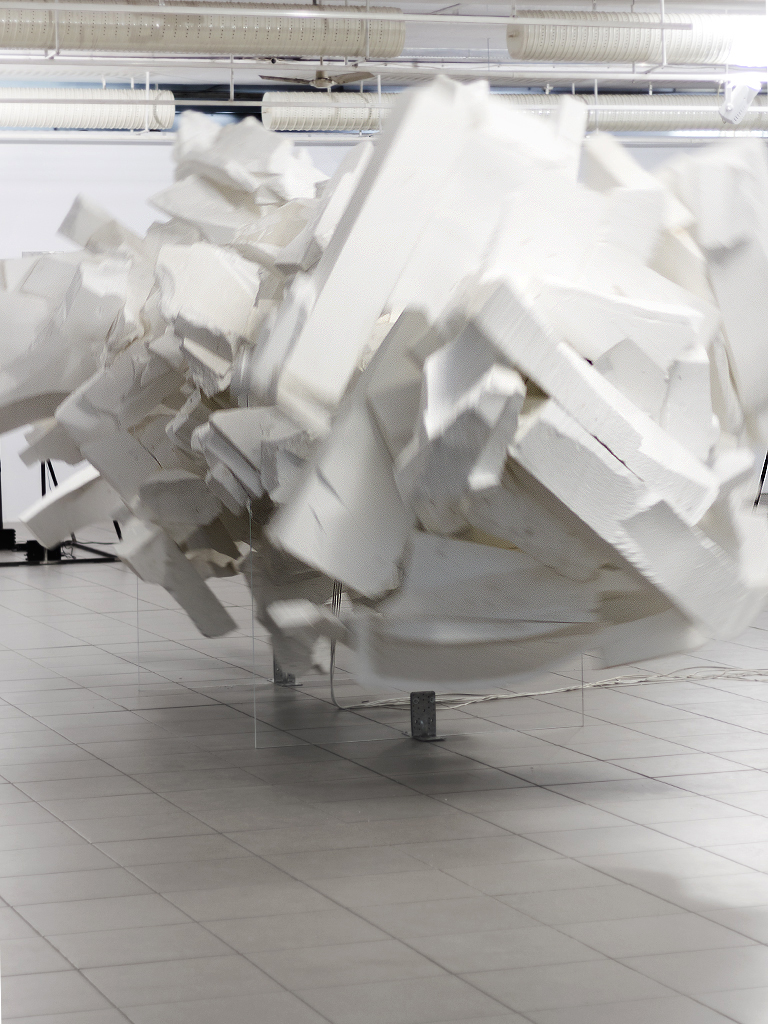
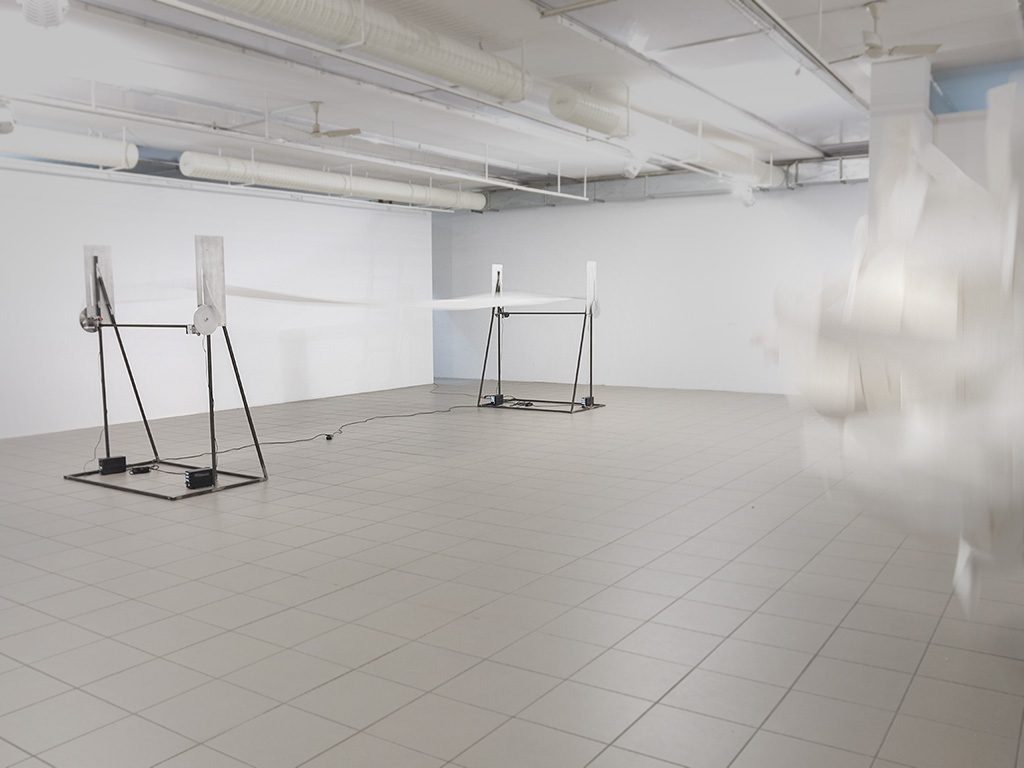

.
PLAYPEN
BWA Contemporary Art Gallery, Katowice
13/05 – 25/06/2023
curator Tomasz Dąbrowski
The exhibition presents a selection of the artist’s works created between 2015 and 2023. Among them are four monumental installations: EMBODIMENT, CATERPILLAR, ABSOLUTELY NOTHING and PLAYPEN, plus smaller active objects such as CANAPONE, KUREN, HICZ HACZ, AKU and works from the MIRRORS, BLACK, WAVES series.
For years, my work has been primarily concerned with the subject of perception, or rather with its limitations, visual manipulation. It deals with phenomena that we do not notice, that we do not understand, but which exist and have an impact on man and reality – Mateusz Dabrowski
The exhibition is a review of the artist’s work, divided into three areas of interest, in three consecutive time periods.
The work of 2015-2017 is related to perceptual issues. In his works, the artist tried to draw attention to the fact that humans have limited ability to perceive and understand the phenomena around them, and thus do not recognize many stimuli that affect their perception of the world, their mental and physical condition. Dabrowski also relates these issues to problems in human relationships and communication. He shows that sending a message and receiving it is a process full of understatement and uncertainty, and that people’s senses often lead them into blind alleys.
The years 2018-2020 were a period when the artist’s work was strongly inspired by astrophysics. In the works created during this period, Dabrowski seeks analogies between the cosmos and the laws that govern it and the world known to man. At the same time, these objects are not illustrations of the principles or assumptions of modern physics. They are of a different nature. They draw attention to the process, to the changes taking place everywhere and constantly, both biological and those occurring in human mentality, also in the context of the development of civilization. The unifying element of the works from this area is the movement that conditions all changes.
Recent works are objects that refer to Bauman’s formulation of “liquid modernity.” They touch on the subjects of tormenting man’s fears and the indefinite discomfort he feels in the area of his psyche. They concern the individual’s sense of insecurity in the face of the fragmentary, discontinuous and episodic nature of the world.
Mateusz Dabrowski’s sculptural objects, although embedded in a sense of instability, paradoxically refer to the search for balance. By exploiting the phenomenon of movement, they transcend traditional materiality, thereby heightening the impression of ambiguity inherent in abstract art. They encourage interpretation. They evoke reflection and anxiety. They magnetically attract the viewer’s attention, so important for artists.
Tomasz Dąbrowski
Na wystawie prezentowane są wybrane dzieła artysty powstałe w latach 2015-2023. Wśród nich są cztery monumentalne instalacje: EMBODIMENT, CATERPILLAR, ABSOLUTELY NOTHING i PLAYPEN, ponadto mniejsze obiekty aktywne, takie jak: CANAPONE, KUREN, HICZ HACZ, AKU oraz prace z serii MIRRORS, BLACK, WAVES.
Moja praca od lat związana jest przede wszystkim z tematem percepcji, a właściwie z jej ograniczeniami, manipulacją wizualną. Dotyczy zjawisk, których nie zauważamy, których nie rozumiemy, a które istnieją i mają wpływ na człowieka i rzeczywistość – Mateusz Dąbrowski
Wystawa ma charakter przeglądu twórczości artysty, podzielonej na trzy obszary zainteresowań, w trzech kolejnych okresach czasu.
Twórczość z lat 2015-2017 związana jest z zagadnieniami percepcyjnymi. Artysta starał się w swoich dziełach zwracać uwagę na fakt, że człowiek ma ograniczone możliwości dostrzegania i rozumienia otaczających go zjawisk, a tym samym nie rozpoznaje wielu bodźców, które wpływają na jego odczuwanie świata, na jego kondycję psychiczną i fizyczną. Dąbrowski odnosi te zagadnienia także do problemów w relacjach i komunikacji międzyludzkiej. Pokazuje, że nadawanie komunikatu i jego odbieranie to proces pełen niedopowiedzeń i niepewności, a zmysły człowieka często wprowadzają go w ślepe uliczki.
Lata 2018-2020 to okres, w którym twórczość artysty była mocno inspirowana astrofizyką. W powstałych w tym czasie pracach Dąbrowski poszukuje analogii między kosmosem i rządzącymi nim prawami a znanym człowiekowi światem. Przy czym obiekty te nie stanowią ilustracji zasad lub założeń współczesnej fizyki. Mają inny charakter. Zwracają uwagę na proces, na zmiany następujące wszędzie i nieustannie, zarówno biologiczne, jak i zachodzące w ludzkiej mentalności, również w kontekście rozwoju cywilizacyjnego. Elementem scalającym dzieła z tego obszaru jest warunkujący wszystkie zmiany ruch.
Ostatnie lata to obiekty nawiązujące do baumanowskiego sformułowania „płynnej nowoczesności”. Poruszają tematy dręczących człowieka lęków oraz nieokreślonego dyskomfortu, jaki odczuwa w obszarze swojej psychiki. Dotyczą poczucia niepewności jednostki wobec fragmentaryczności, braku ciągłości oraz epizodyczności świata.
Obiekty rzeźbiarskie Mateusza Dąbrowskiego, mimo, że osadzone w poczuciu niestabilności, paradoksalnie odnoszą się do poszukiwania równowagi. Dzięki wykorzystaniu zjawiska ruchu, wykraczają poza tradycyjną materialność, potęgując tym samym wrażenie wieloznaczności, nierozerwalnie związanej ze sztuką abstrakcyjną. Zachęcają do interpretacji. Wywołują refleksje i niepokój. Magnetycznie przyciągają uwagę widza, tak ważną dla artystów.
Tomasz Dąbrowski
THE MOON AND THE SOBIESKI SHIELD
.
THE MOON AND THE SOBIESKI SHIELD
.
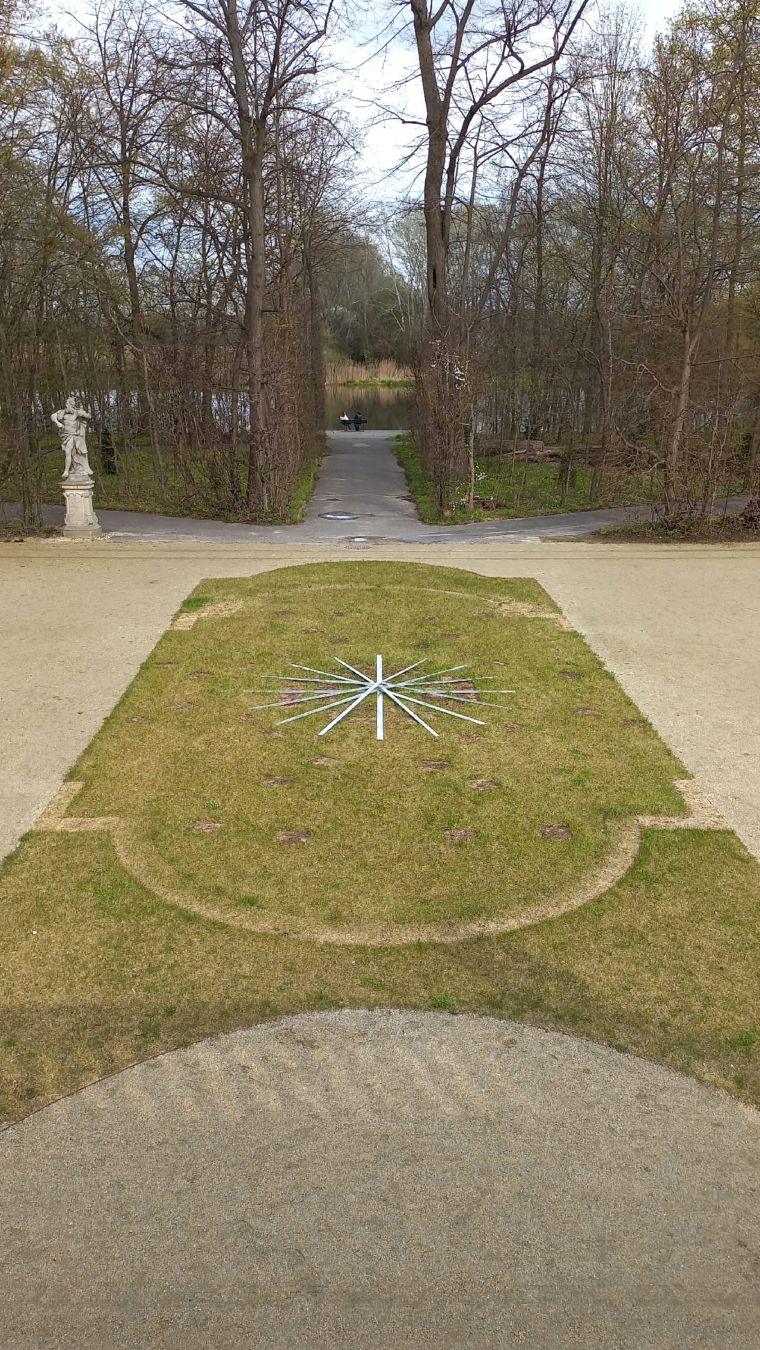
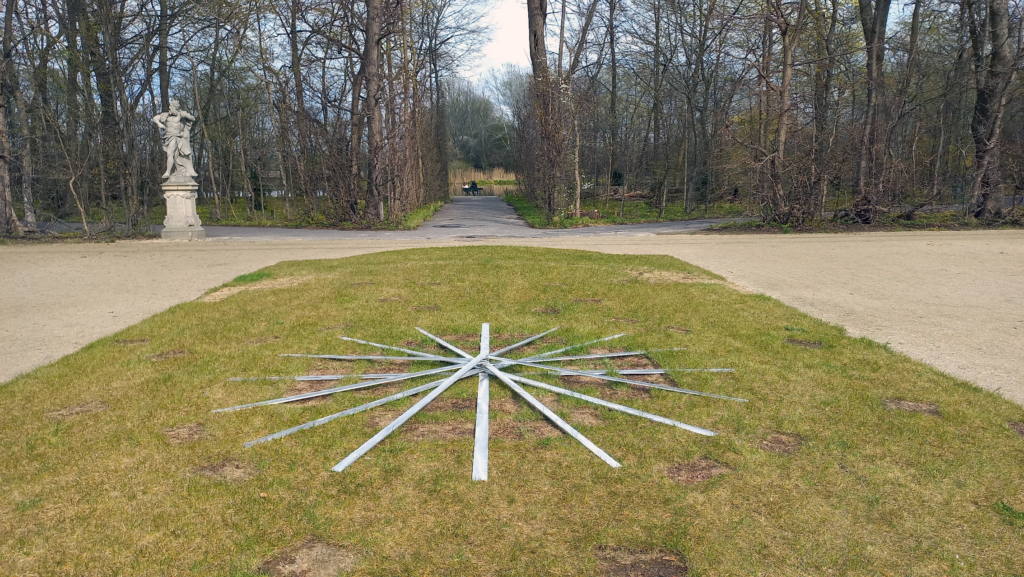

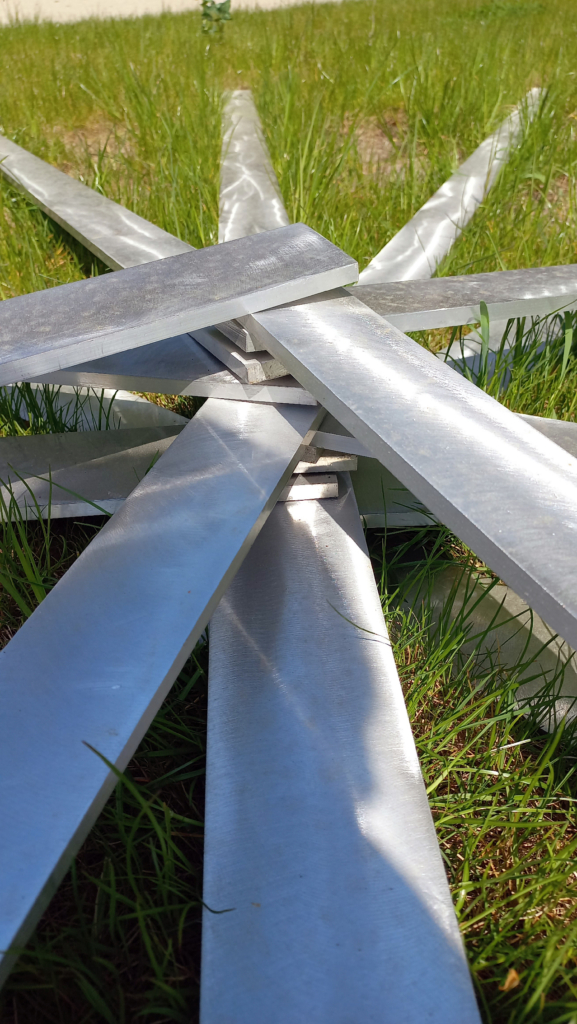

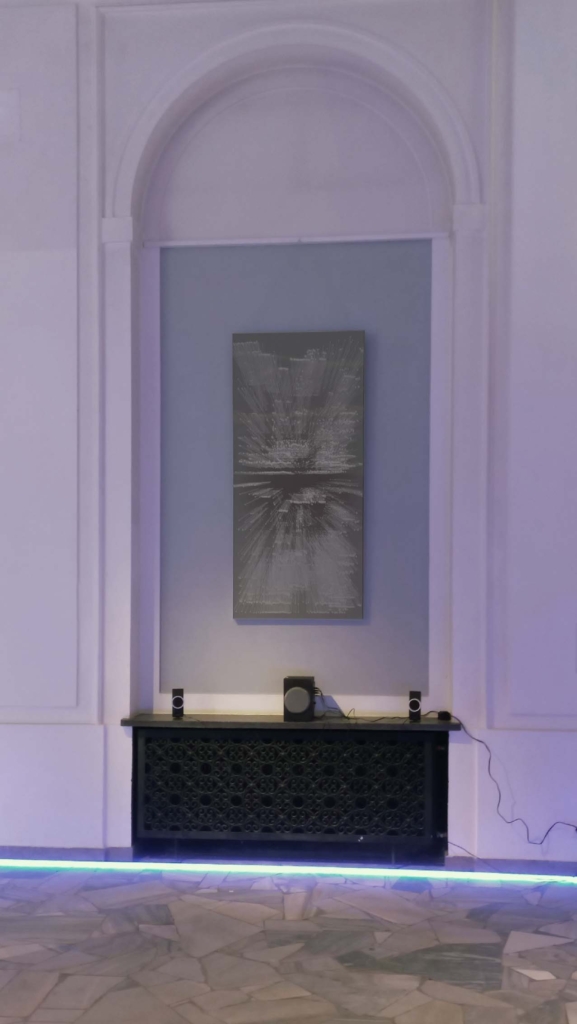
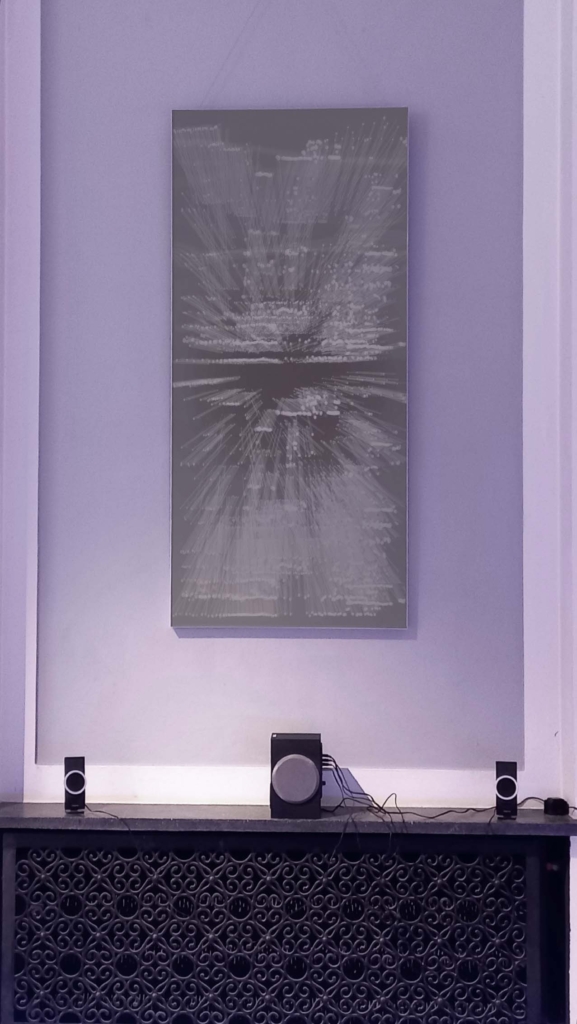
HEVELIUS
Mateusz Dabrowski, Paul Wirkus
Paul and I were listening to the music along with looking at Iannis Xenakis’ scores. There was an idea to create a spatial graphic composition using lenticular printing, created on the basis of the score drawn by Paul. The drawing was to be created on the occasion of composing a piece conceived for the Hevelius project, dedicated to the famous scientist. In the graphic image, we can follow the notation of the sounds that accompany the image, while listening to them. An important element for us was the coexistence of image and music in a mutual perceptual context. The illusory, moving and spatial image was conceived referring to the primal human needs, civilization’s desires, the determination to seek, discover, explore and ask new questions.
Every object in the sky is dependent on other bodies and phenomena in its surroundings. Gravity constantly affects the relationship between objects, events, forces acting on each other and energy, this applies to any matter regardless of the environment.
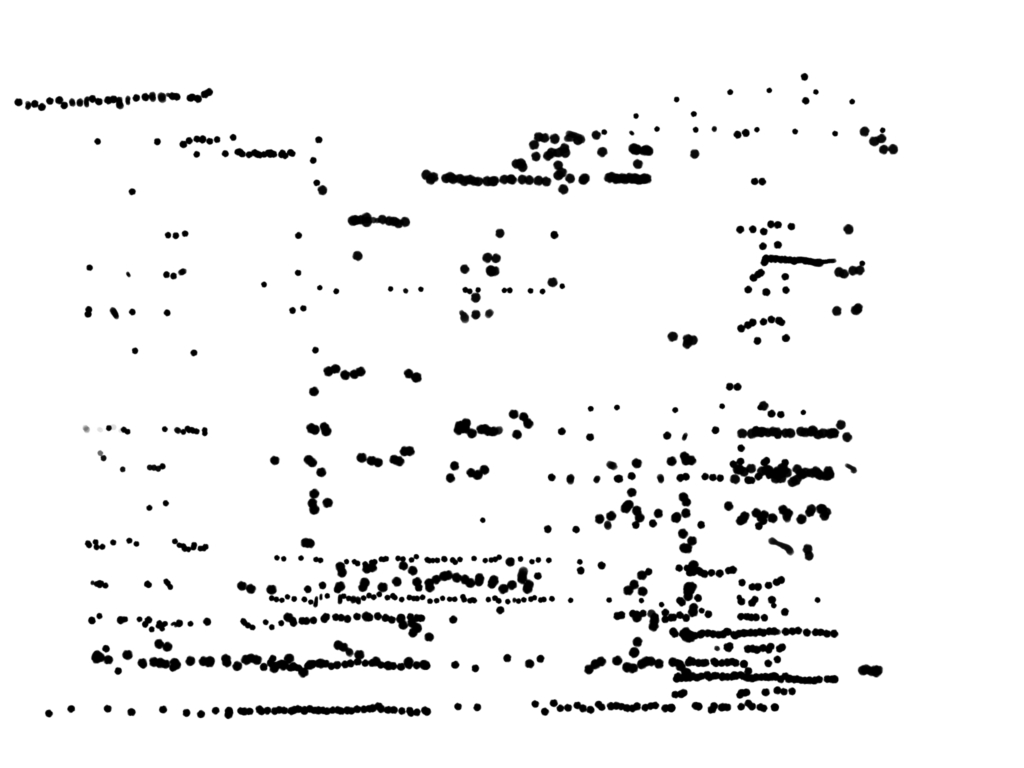
score by Paul Wirus
The Moon and Sobieski’s Shield: Old Heveliana and Contemporary Art
King Jan III’s Palace at Wilanów
curator: Dorota Folga-Januszewska
22/04 – 15/27/2022
The Moon and Sobieski’s Shield is an exhibition that presents Johannes Hevelius as a scholar and an artist while highlighting the ties between the famous astronomer and King Jan III. The historical part of the exhibition focusses on works by Hevelius – illustrated volumes entered into UNESCO’s World Heritage List in 2021, as well as Sobiesciana from the Gdańsk Library of the Polish Academy of Sciences (PAN) and selected objects from the collections of the Museum of King Jan III’s Palace at Wilanów. The Orangery and the historic park of the Wilanów residence provide space for the presentation of graphics, paintings, and installations by members of the faculty and doctoral candidates from the Academy of Fine Arts in Warsaw inspired by Hevelius’ studies of heavenly bodies (including observations of the Moon and the constellations drawn by him). Analysing the visual aspect of the scientific studies of the 17th-century scholar, contemporary artists staked out an innovative, fascinating path into the limitless space above our heads.
The exhibition is the result of a creative exchange between employees of the museum, PAN’s Gdańsk Library, and artists from the Academy of Fine Arts in Warsaw.
An exhibition at the Museum of King Jan III’s Palace at Wilanów from the collection of the Gdańsk Library of the Polish Academy of Sciences, also presenting works and installations by artists from the Academy of Fine Arts in Warsaw.
The exhibition of Heveliana at the Museum of King Jan III’s Palace at Wilanów is conceived in such a manner as to, on the one hand, present beautiful evidence of historical scientific thought bound in an interesting artistic form and the impact it had on arts and sciences in the 17th and 18th century, and on the other, provide a reminder that artistic and intellectual legacies stimulate contemporary culture.
Drawings, etchings, prints, medals – visitors will find all of those in King Jan III’s Banqueting Hall, the highest-placed room at the very centre of the palace, in a 2nd storey extension erected as an observation point, in the manner of a Roman villa belvedere. The windows of the Banqueting Hall open to east and west; once, the view from them stretched far, not only toward the floodplain of the Vistula in the east, the far-off city in the west, and the gardens surrounding the property, but also to the sky and the stars!
The Moon of the title, observed and depicted by Hevelius in a print from an etching that astounds with its technical quality and the plasticity of its imagined craters, is the symbolic opening of our presentation. Next to it will also be found Sobieski’s Shield, Scutum Sobiescianum – the constellation Hevelius used to inscribe the name of the Victorious King in the skies.
Descending from Wilanów’s belvedere and passing through the preserved historic palace interiors, one is treated to a collection of objects inspired by cosmological themes dating back to the times of the Sobieskis as well as modern visual and aural arrangements designed by contemporary artists, inspired by the research, thought, and graphical art of the Gdańsk astronomer.
Heading toward the Orangery, visitors will observe artistic installations also in the park; meanwhile, the Orangery will contain a condensation of contemporary artistic endeavours: sculptures, graphics, drawings, paintings, installations, forms of conceptual dialogue, multimedia, and projections arranged according to the eight phases of the Moon.
Dorota Folga-Januszewska
CONNECTION BOZENA
.
CONNECTION BOZENA
.
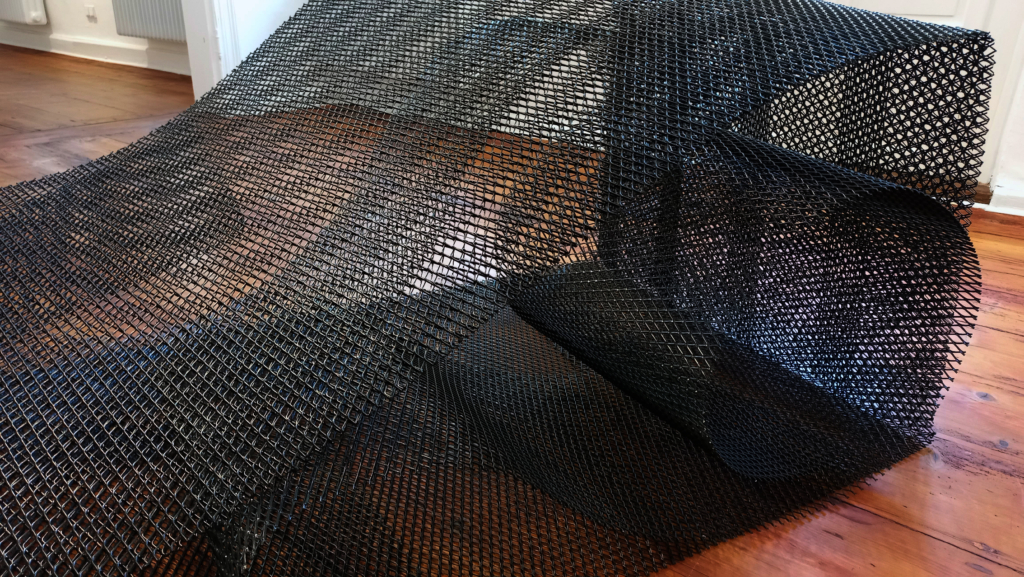

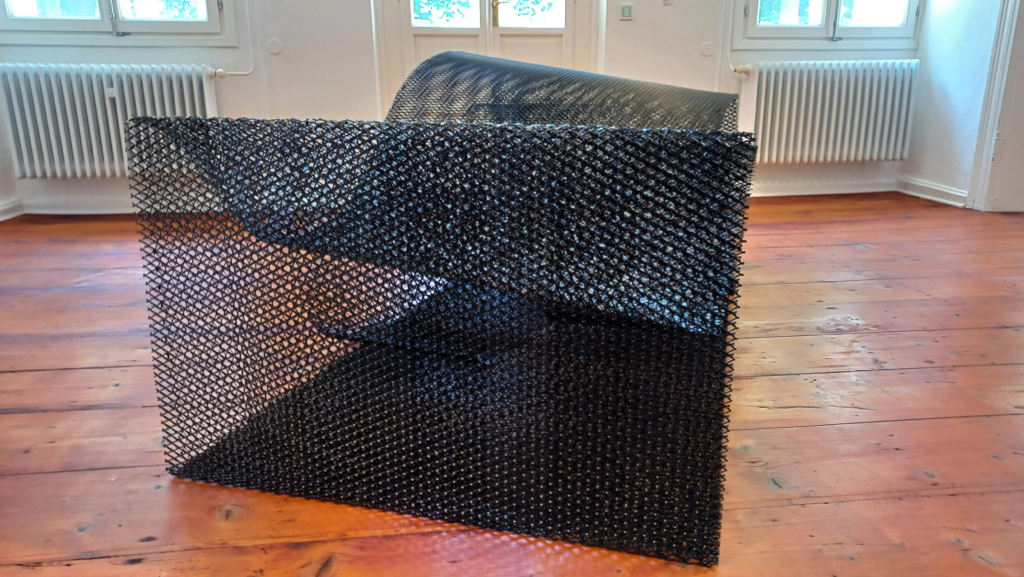
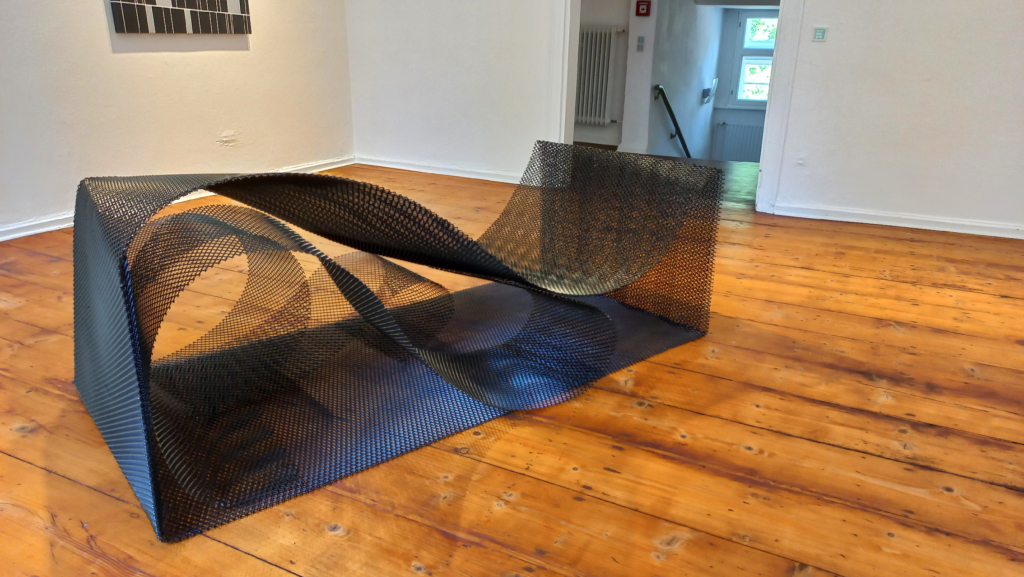
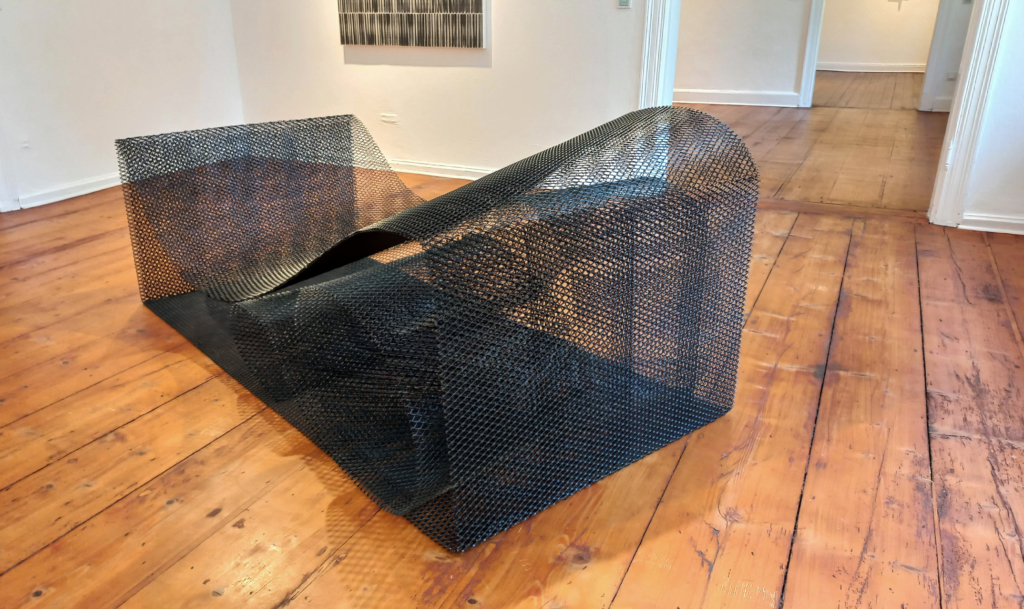
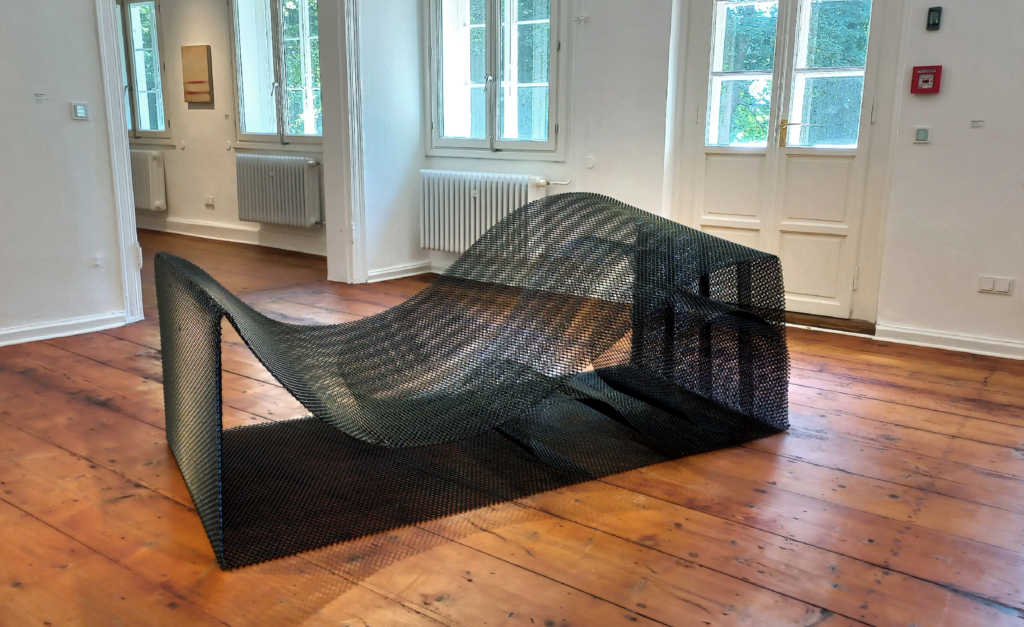
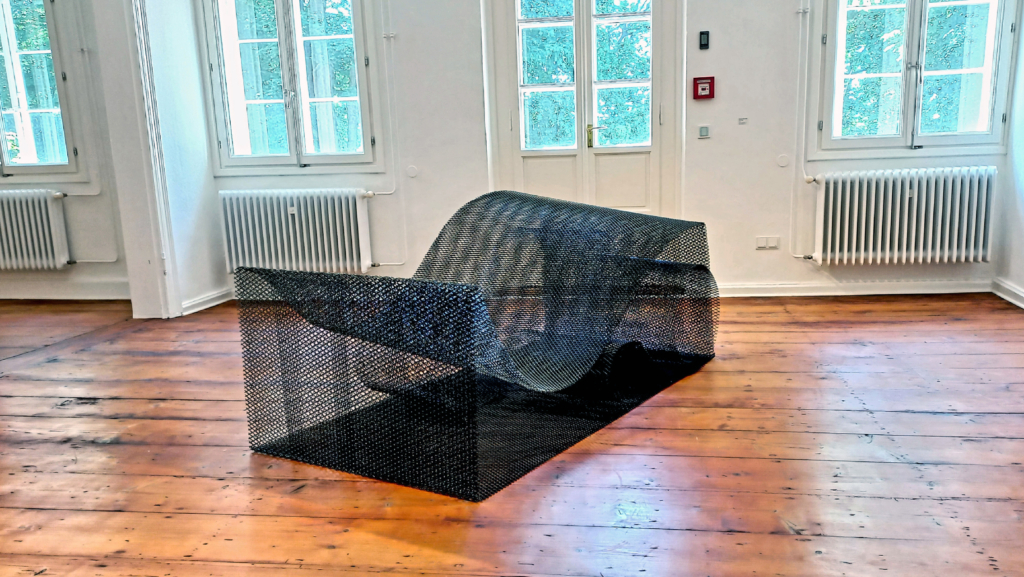
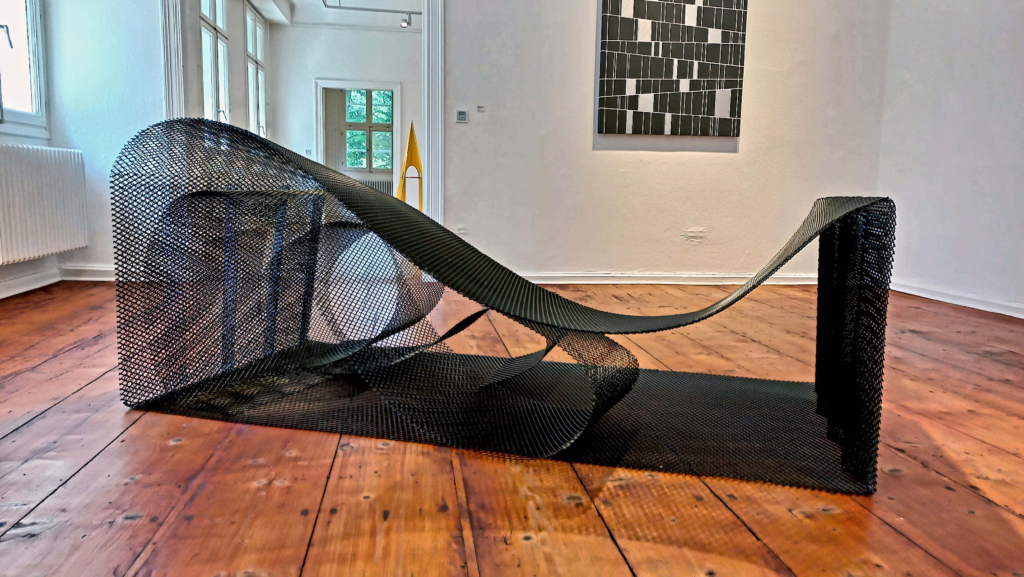
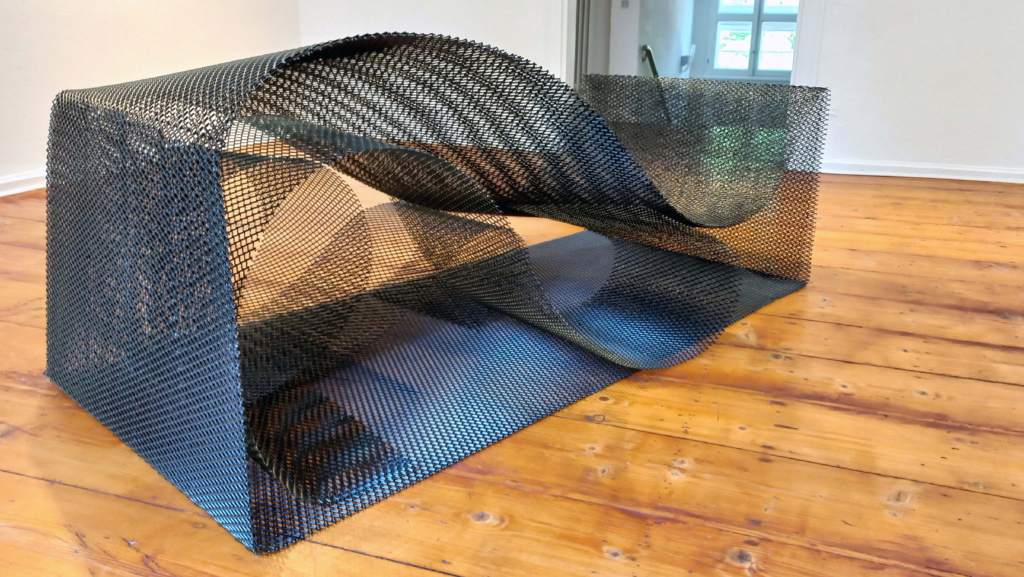
FROZEN WAVE Material: steel mesh; Dimension: 200 x 100 x 85 cm; Date: 2022
International Geometric Art | Międzynarodowa Sztuka Geometryczna
Connection Bożena
Syker Vorwerk – Center for Contemporary Art
03.06.2022 – 28.08.2022
The exhibition “Connection Bożena” includes works of geometric abstraction by 46 artists from various European countries, most of them from Poland and Germany. All invited artists belong to the group that met every September for the “Plein Air for Artists Using the Language of Geometry,” which Polish art historian, theorist and critic Dr. Bożena Kowalska (*1930 in Warsaw) organized and led for 36 years. Due to its long 36-year history, a total of more than 180 artists of different generations have participated in the meetings.
The last 10 meetings from 2009 to 2018 at the Radziejowice Palace. In 2021 there was a large group exhibition entitled “The Language of Geometry. Persistence of Art” with the participation of 56 participants at the Municipal Gallery of Contemporary Art BWA in Katowice.
Now, at the invitation of the Syker Vorwerk – Center for Contemporary Art, an international exhibition of Radziejowice symposia participants is taking place again – for the first time outside Poland, in Germany. The project was organized in consultation with Dr. Bozena Kowalska. Forty-six female artists of different generations from Europe and the USA responded to her invitation to participate.
The curators are art historian and art director of Syker Vorwerk, Nicole Giese-Kroner together with German artist Martin Voßwinkel, who has regularly participated in symposia in Radziejowice since 2015
Wystawa “Connection Bożena” obejmuje prace abstrakcji geometrycznej 46 artystów z różnych krajów Europy, w większości z Polski i Niemiec. Wszyscy zaproszeni artyści należą do grupy spotykającej się co roku we wrześniu na “Plenerze dla Artystów Posługujących się Językiem Geometrii”, który polska historyk, teoretyk i krytyk sztuki dr Bożena Kowalska (*1930 w Warszawie) organizowała i prowadziła przez 36 lat. Dzięki długiej 36-letniej historii w spotkaniach wzięło udział łącznie ponad 180 artystów różnych pokoleń.
Ostatnie 10 spotkań odbyło się w latach 2009-2018 w Pałacu Radziejowice. W 2021 roku odbyła się duża wystawa zbiorowa “Język geometrii. Trwałość sztuki” z udziałem 56 uczestników w Miejskiej Galerii Sztuki Współczesnej BWA w Katowicach.
Teraz, na zaproszenie Syker Vorwerk – Centrum Sztuki Współczesnej, międzynarodowa wystawa uczestników radziejowickich sympozjów odbywa się ponownie – po raz pierwszy poza Polską, w Niemczech. Projekt został zorganizowany w porozumieniu z dr Bożeną Kowalską. Na jej zaproszenie odpowiedziało czterdzieści sześć artystek różnych pokoleń z Europy i USA.
Kuratorkami są historyczka sztuki i dyrektorka artystyczna Syker Vorwerk, Nicole Giese-Kroner wraz z niemieckim artystą Martinem Voßwinkelem, który od 2015 roku regularnie uczestniczy w sympozjach w Radziejowicach.
CRINKLE, FLUTTER, WRINKLE, RIPPLE
.
CRINKLE, FLUTTER, WRINKLE, RIPPLE
.
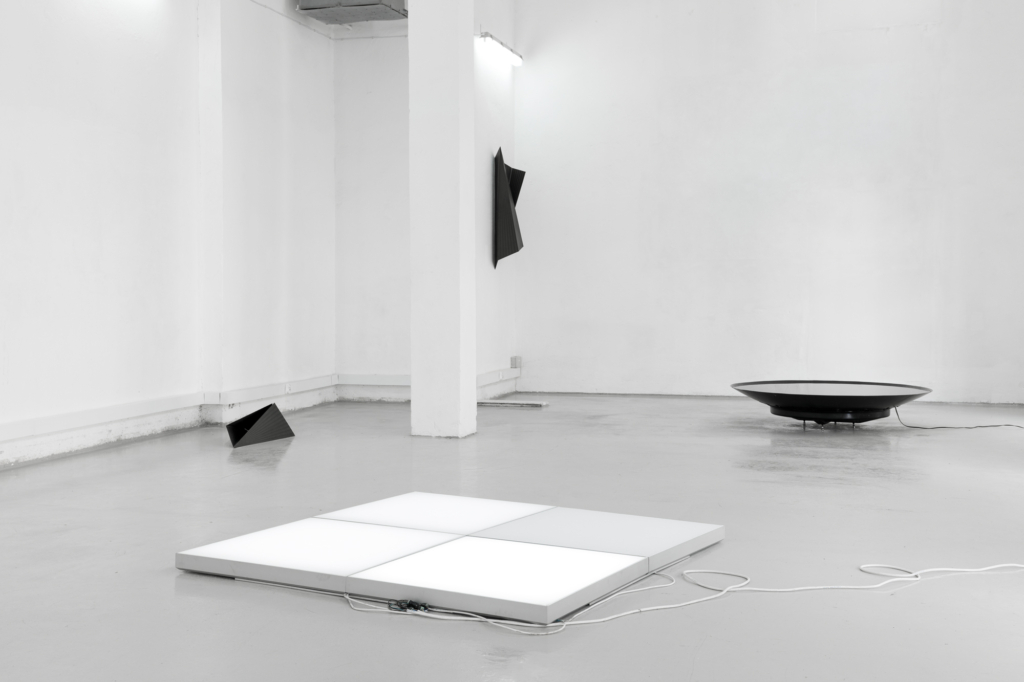

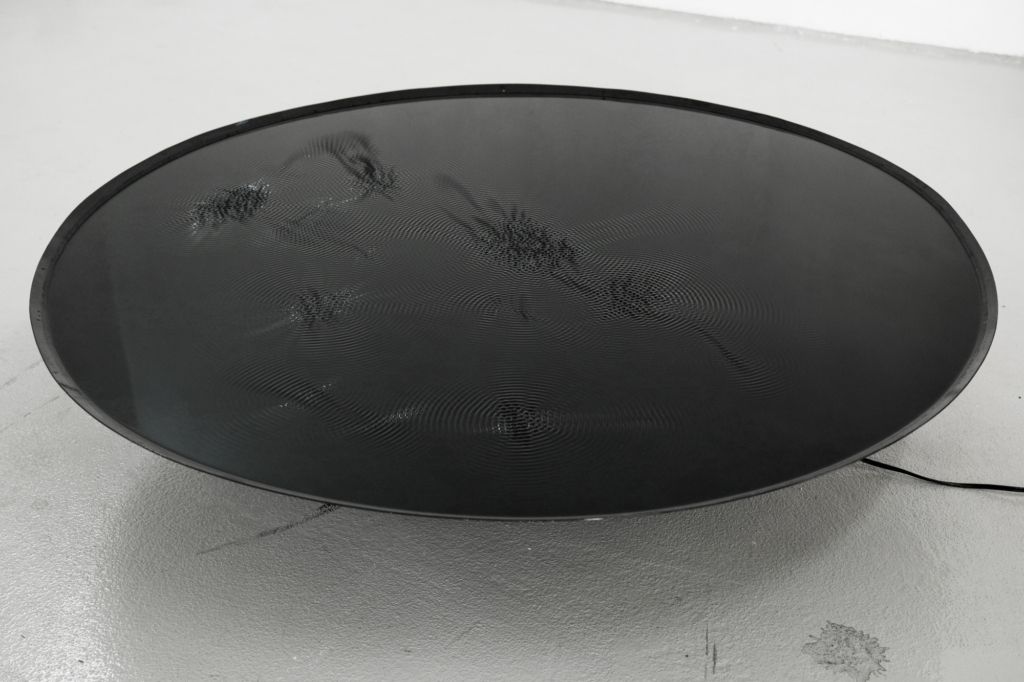

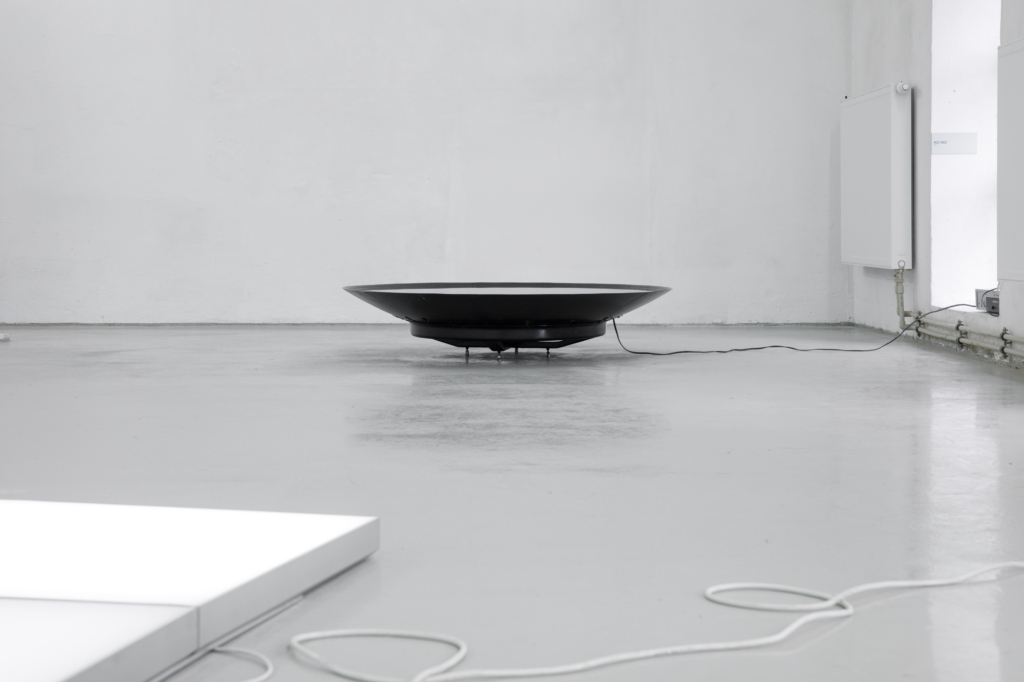
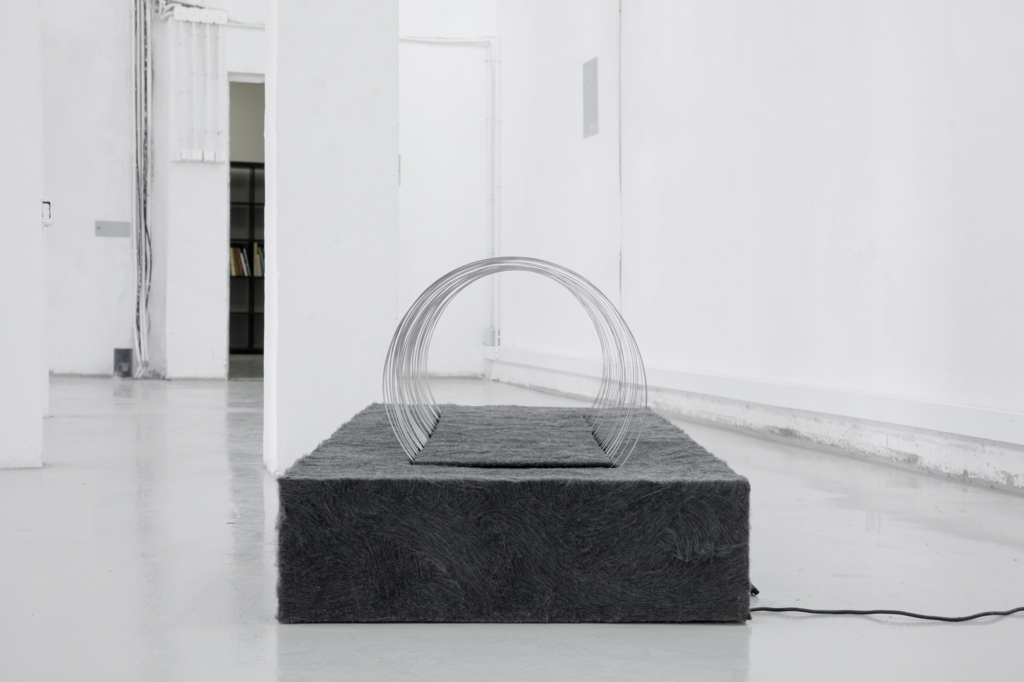
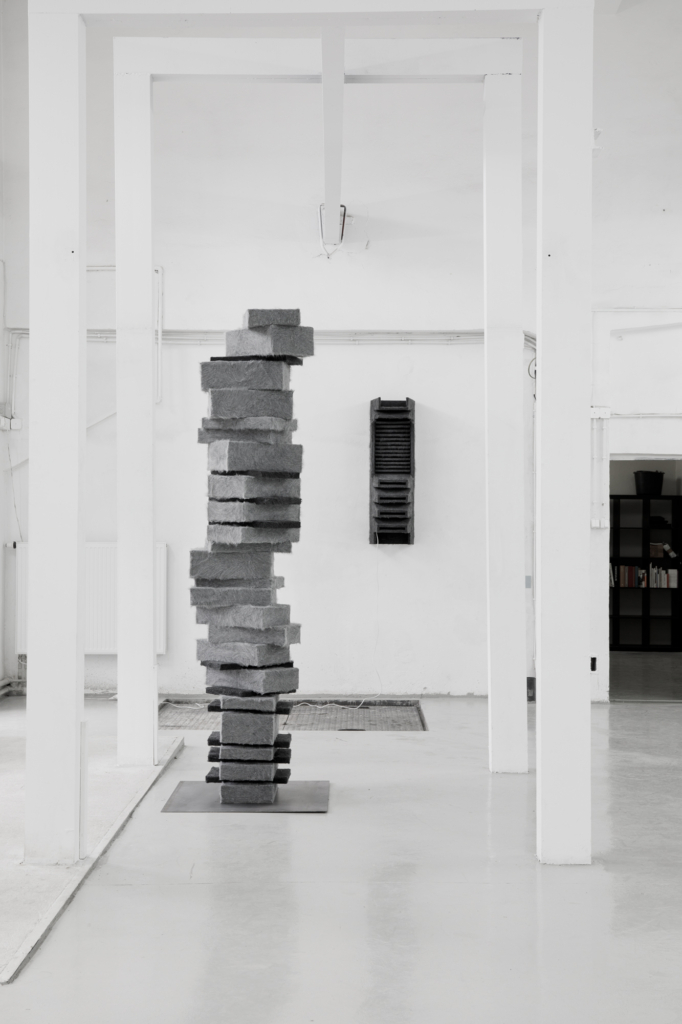
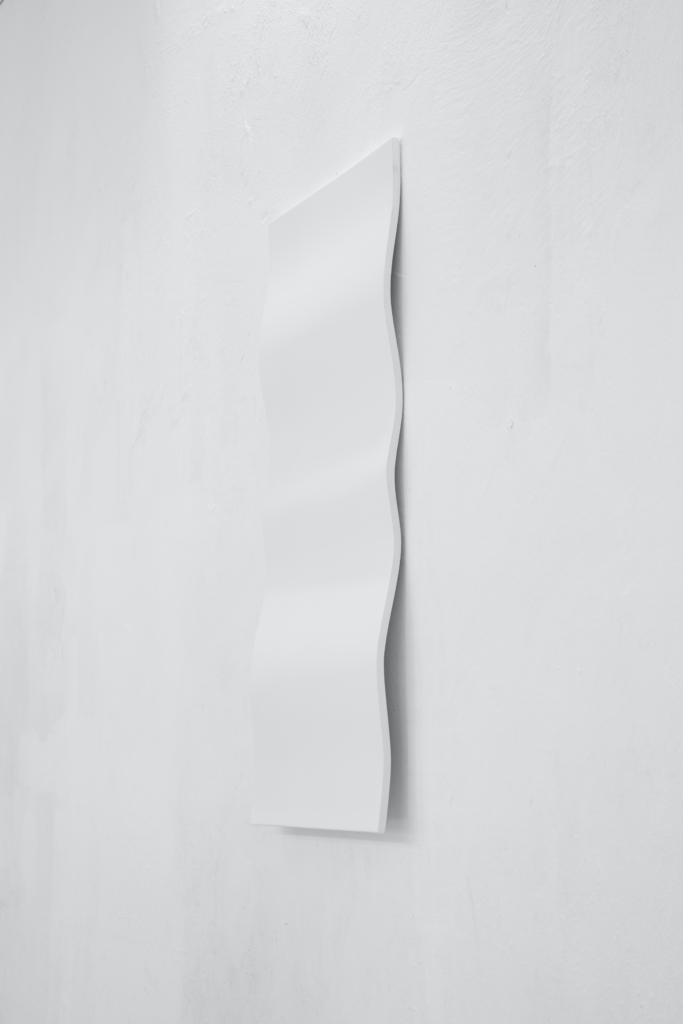
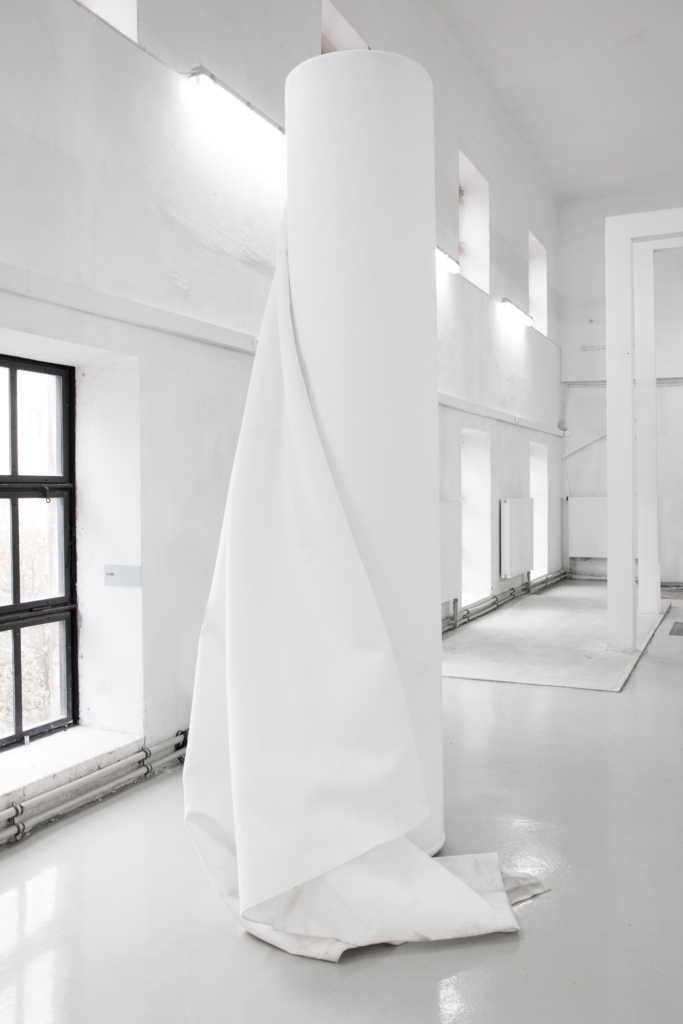

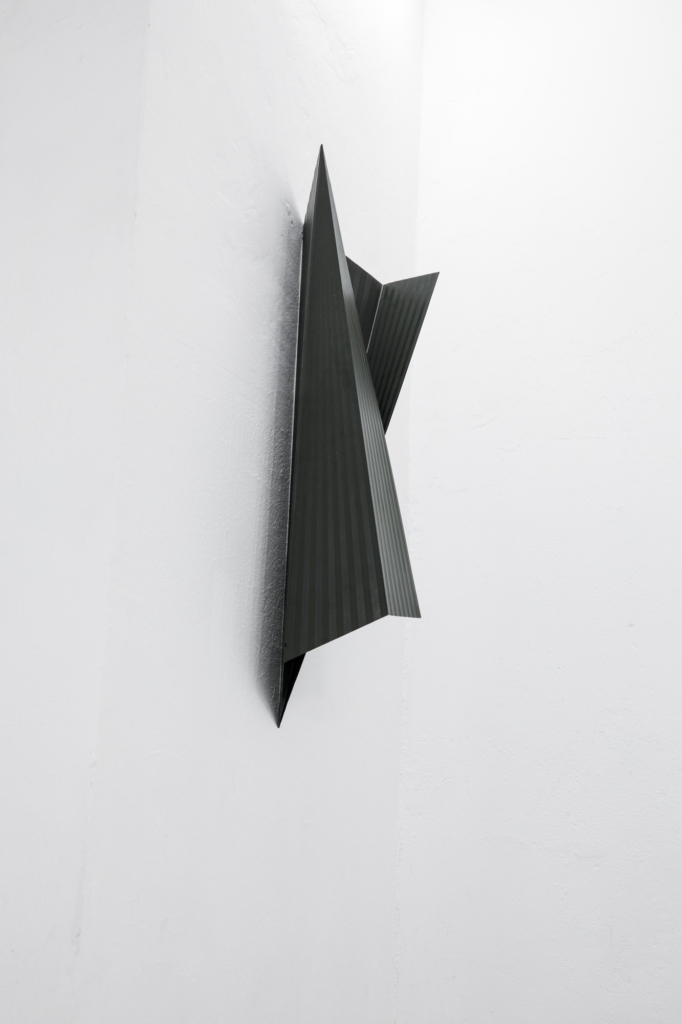


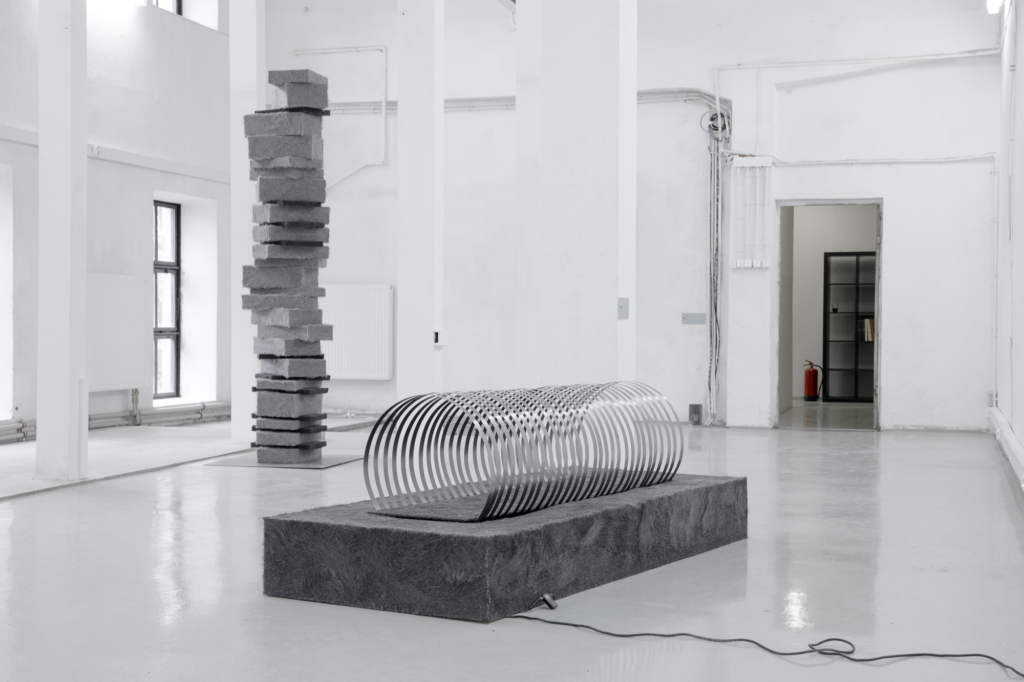
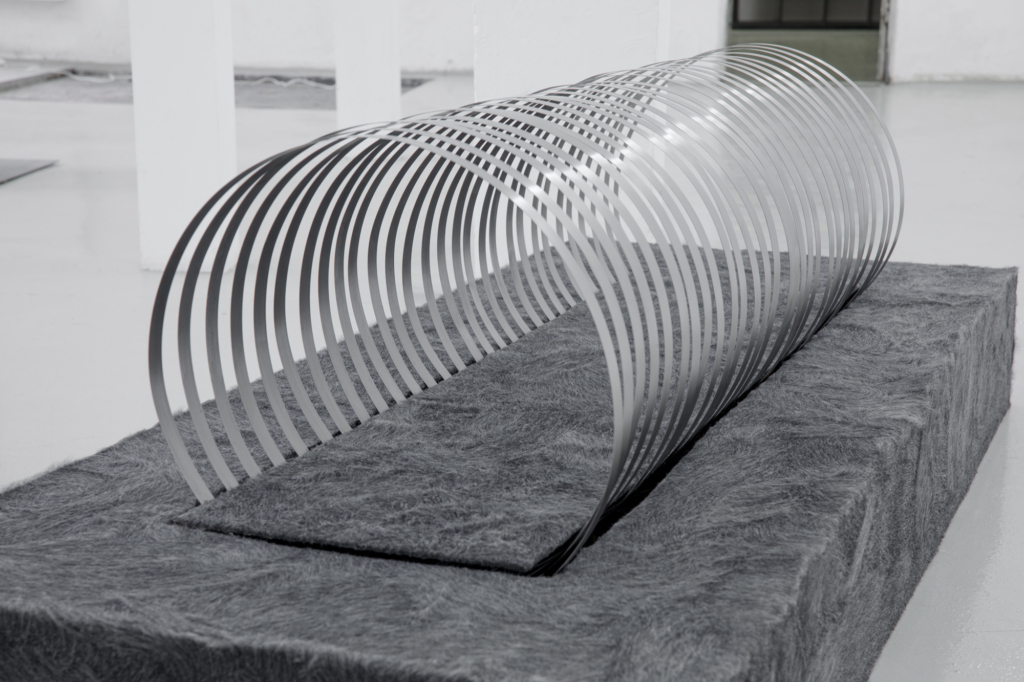
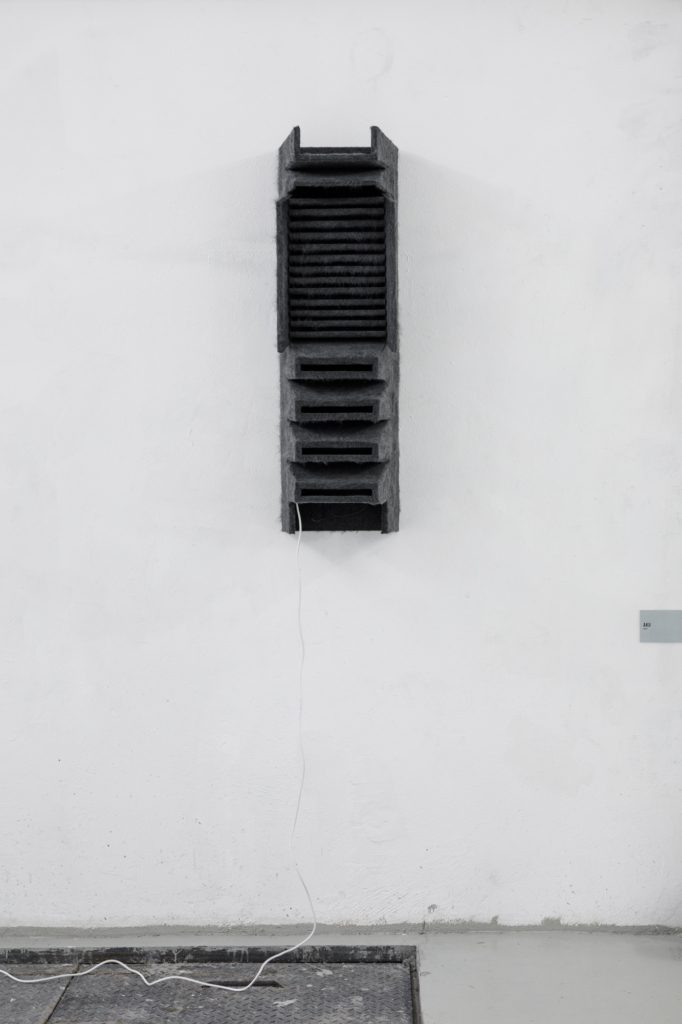
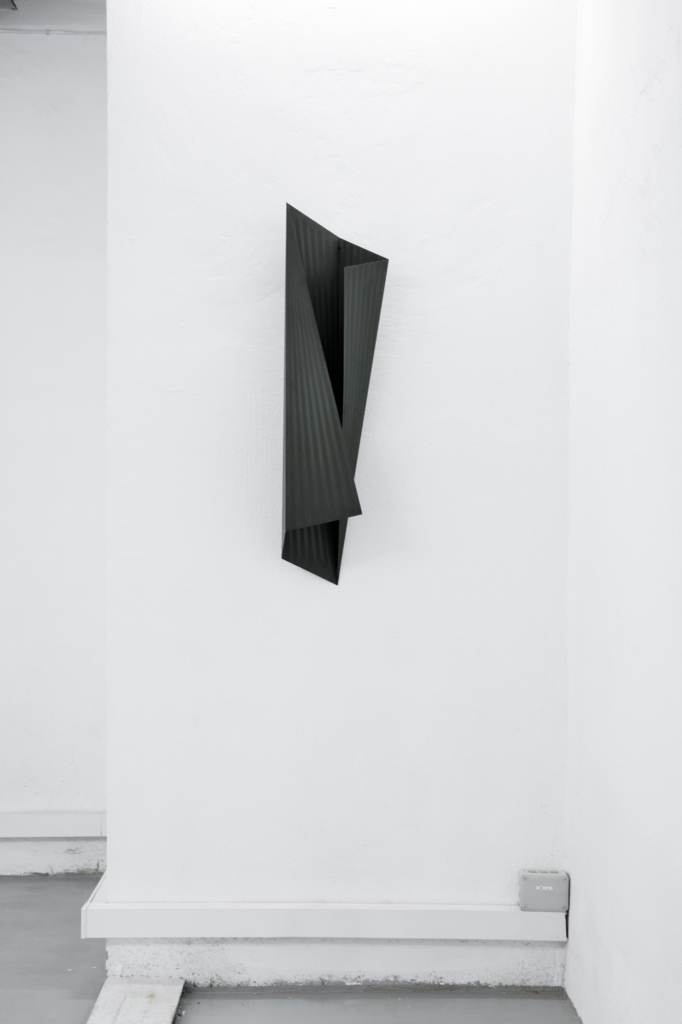
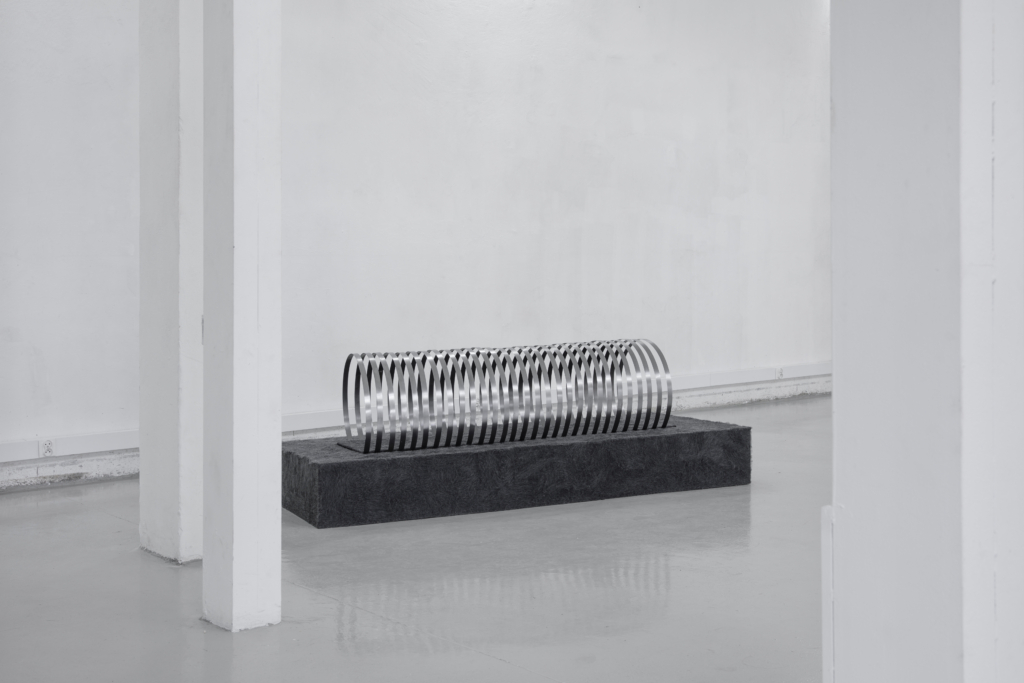

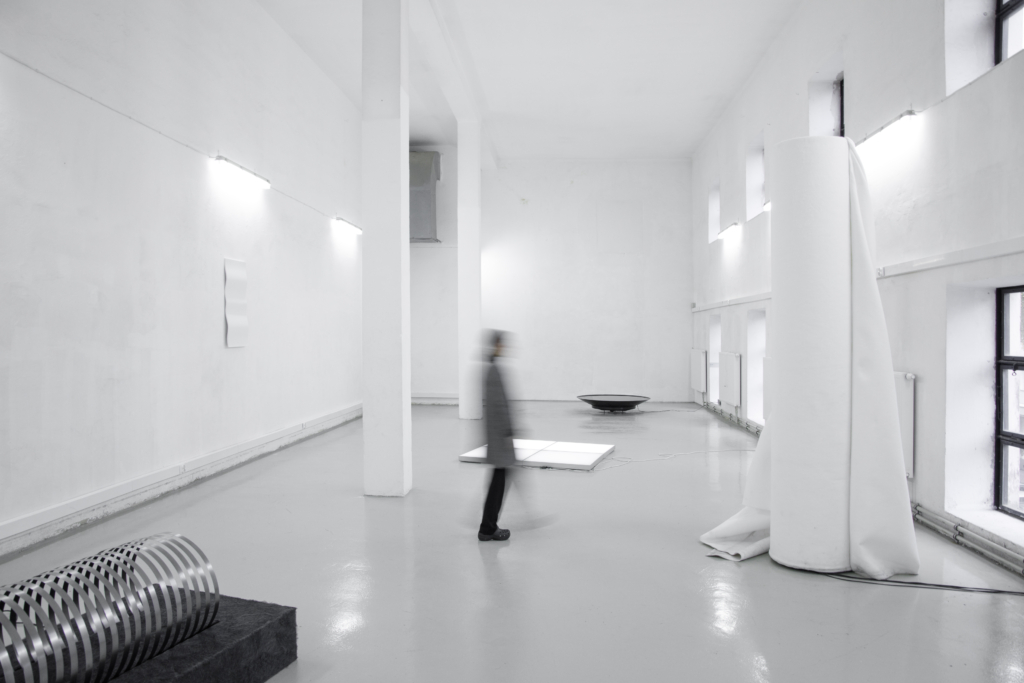
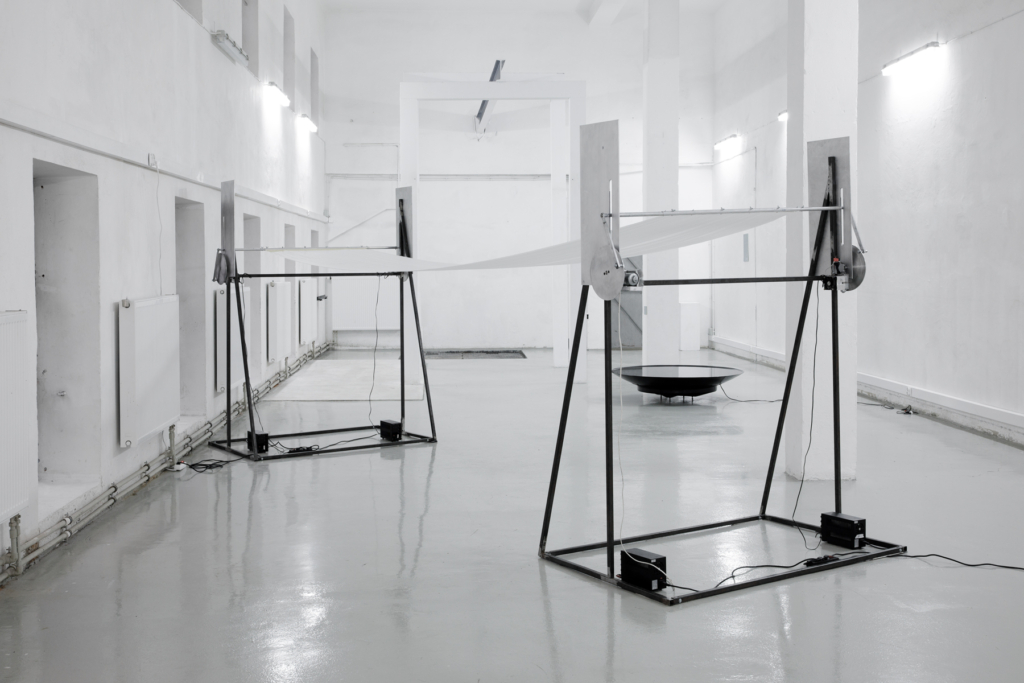
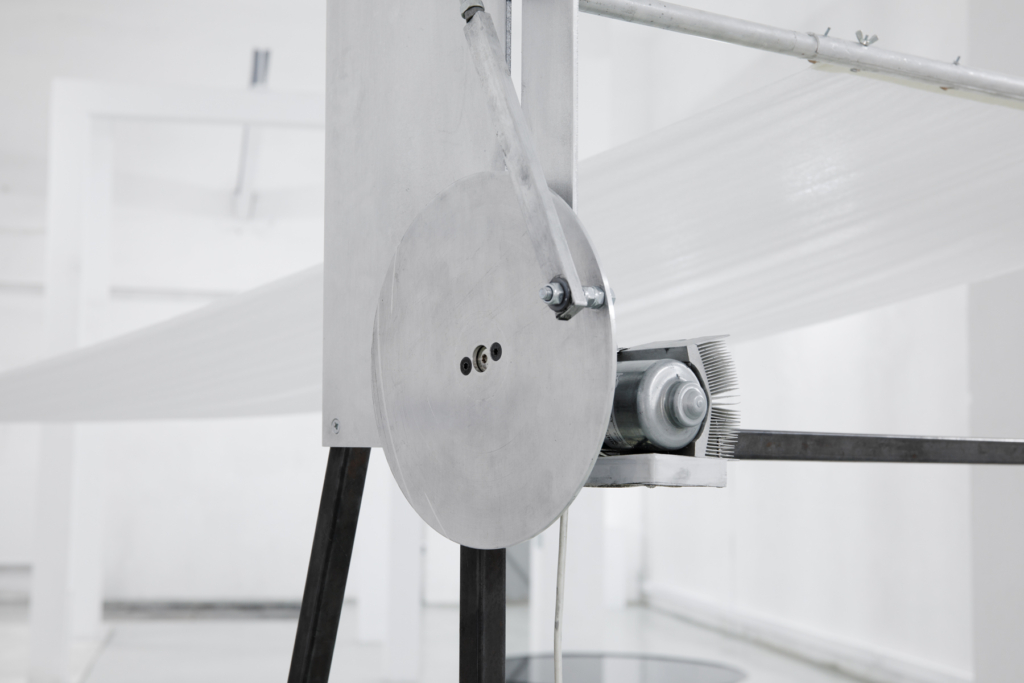

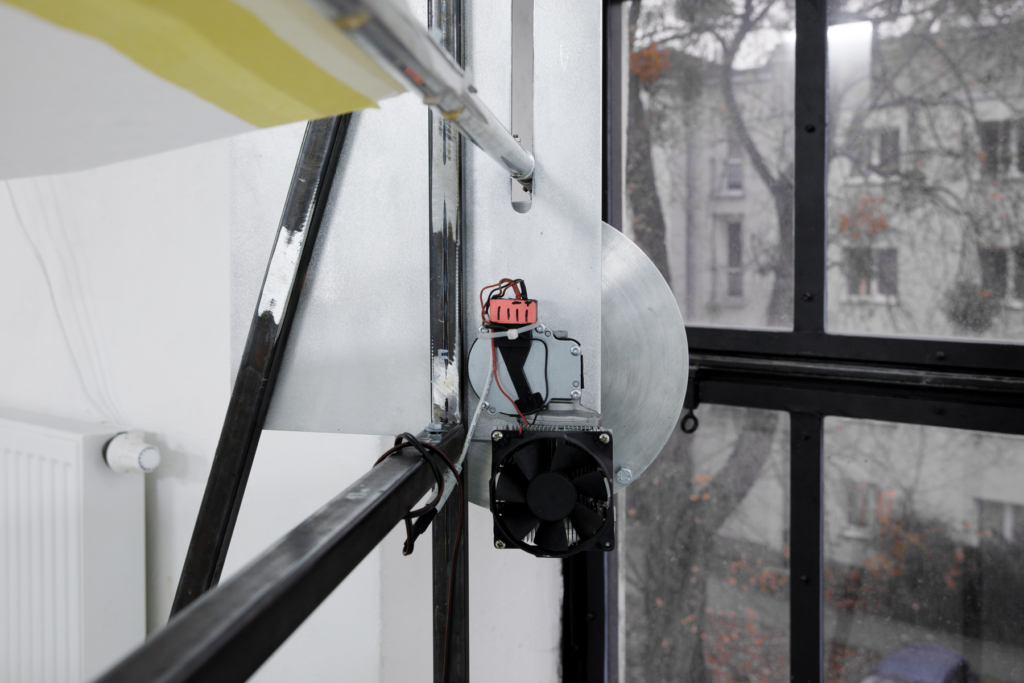

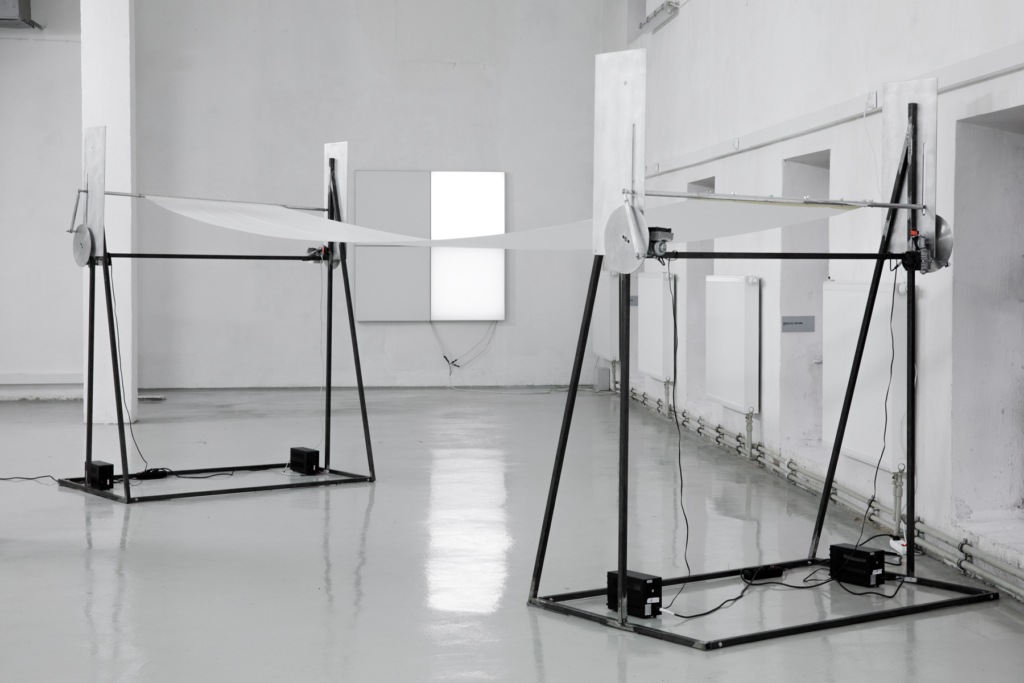
photos Michał Matejko
Crinkle Flutter Wrinkle Ripple
LELE Art Space, ul. Lelechowska 5, Warszawa
02/10 – 20/12/2022
curator: Paweł Kamiński
Na wystawę złożą premierowe i starsze prace z lat 2016 – 2022, wpisujące się w abstrakcyjny nurt nowego, silnie zmediatyzowanego formalizmu. Pierwszą, retrospektywną część pokazu zaplanowaliśmy na okres od 2 października do 15 listopada 2022. W części drugiej dodatkowo prezentować będziemy nową, rozbudowaną, powstałą latem 2022 pracę kinetyczną “Absolutely Nothing”. Partnerem wystawy jest Stowarzyszenie Autorów ZAiKS.
The exhibition will feature new and older works spanning over a period 2016-2022, falling under the category of the new, abstract and highly mediatized formalism. First, retrospective part of the show is planned from October the 2nd to November the 15th, 2022. In part two we will additionally present ”Absolutely Nothing”, a new, expanded, kinetic object created in the Summer of 2022. The exhibition is made possible in partnership with the ZAiKS Authors’ Association.
Lapidary critters
The famous watercolor and ink finished monotype by poet and printmaker William Blake, dated 1795, depicts the nude, exaggerated figure of a man somewhere at the bottom of the sea fiercely drawing sundry figures with a circular wheel. The athletic geometer is Newton.
He is supposed to epitomize the destructive power of reason and limited creation. Although Blake resisted almost all currents of the Enlightenment, the Newtonian theory of optics irritated him particularly. In an annotation to one of his engravings, Blake wrote: “Art Is the Tree of Life. Science is the Tree of Death.” For those maintaining that he experiences visions, speaks with the dead and penetrates unknown layers of experience Blake’s scientific method was harmful and sterile, and indeed – emerging with the birth of modern science, new images of the world were bound to lead to disputes, often of fundamental importance. Cartesian organization of the world composed of two separate substances, res cogitans and res extensa, begins to supplanted by a single principle of universal gravity. In Descartes’ view, motion was carried by whirlpools, similar to eddies on a river. In Newton’s mechanics, the same motion and free fall of bodies was explained by omnipresent gravity. This was not a difference of description of physical phenomena. The game was about extremely different conceptualizations of reality.
A good illustration of how deep the dispute went are episodes from the history of horticulture. When, in 1661, Minister Fouquet’s palace at the Vauxle- Vicomte, the French architect based the assumptions of the emerging garden on lines in line with the directions of thepropagation of light, he envisaged whirlpools presented as pools with fountains, and the whole design he determined by referring to the idea of res extensa, tensile substance. A few decades later, competing emerged competing English-style gardens, eager to refer to the principles of the new science. In “Epistle to Richard Boyle,” A. Pope criticized “artificial gardens” that “do not know that the most beautiful are the magnificences of the works of nature themselves.” Later examples can be multiplied, but the a career unique only to the reception of Einstein’s theory of relativity. After 1905, references to his groundbreaking research began to appear almost everywhere, starting with the one designed by Mendelsohn in 1920 of the Einstein Tower in Potsdam, ending with the works of Naum Gabo, El Lissitzky, Moholy-Nagy and many others*. More or less legitimate, the connection between science and art began long ago and is almost universal.
But how is a discovery made? Where do novelty, invention, breakthroughs in the development of knowledge come from? knowledge? Thinking about the phenomenon of discovery has been handled differently, and the question of its genesis has become one of the important problems of the 20th century philosophy of science. The first attempts were made as early as 1840. In the volumes Philosophy of Sciences, founded upon their history, William Whewell argued, that three conditions are necessary for making a discovery: A happy thought, its articulation and further development through testing. Whewell argued that only geniuses can count on a happy thought “the source of which we cannot trace; it is a stirring of the mind rising above the rules. It is impossible to give any maxims that inevitably lead to discovery or a recipe for happy thought.” According to Whewell, “the art of discovery,” in the sense of a skill that could be learned or that can be taught to others, does not exist. At the turn of the 20th century, a more radical view was expressed by the Viennese positivism, recognizing that only those discoveries that are based on repeatable laboratory observations, or derive from logic. The most stringent terms were proposed by Karl Popper. He rejected empirical research as a tool for discovering new knowledge, arguing that from a set of observations cannot be inferred from the correctness of general theorems. Popper’s proposed Popper’s method of demarcation was to separate the orderly, gradually developing sciences from other messier fields – but it soon turned out that in certain situations the requirement for of demarcation was also not met by logic and mathematics. These difficulties led other authors to the conviction that in the formal sciences, natural sciences, social sciences and humanities should apply additional rules, perhaps separate for each discipline. The idea as scattered and not finding a basis in actual scientific practice, however, was carried away, and although some aspects of demarcation in terms of practicality are still valid, but in research on the foundations of knowledge the concept has lost its relevance. Unlike Popper, the puzzle of the genesis of discovery was looked at by was looked at by historically oriented researchers. Born a century ago, Thomas S. Kuhn, to whom the modern language owes the expression “paradigm shift” with his work “The Structure of Revolutions of science” for decades shaped the image of science as an institution with its own strategy embedded in the social and cultural realities. This strategy is to absorb the scientific revolutions that erupt from time to time and completely changing the image of the world of scientific revolutions. The old “paradigm” is abandoned, and the the new one is quickly surrounded by modern and updated “normal science” – normal, i.e. widely accepted although fundamentally different from the previous one. Kuhn’s theory has made a worldwide career. It is still unclear whether science, and with it culture, “develops by passing through the
normal and revolutionary stages, the wave of which washes away previously recognized assumptions making room for a new, incommensurable paradigm “** (after all, why reject the old order as long as it is cognitively creative, well, unless “some men just want to watch the world burn “***), but “Structure” aptly described a certain regularity. Knowledge does not accumulate linearly, in its development it is possible to indicate periods of stagnation and phases of excesses. Forcibly, many, critical of Kuhn and Popper’s approaches, from the extravagance of methodological anarchist Paul Feyerabend (“anything goes!”) to the purism of the scientists themselves recognizing only hard, laboratory-obtained data. The Stanford Encyclopedia, revered for its humor, described this state of affairs as follows: “a discovery is the the result of successful research. The objects of discovery may be things, events, causes and properties, as well as theories and their characteristics. The debates about discovery have been intricate and complex, as the the term itself has been used in many ways, both in the narrowest sense as “discovery” which refers to the supposed “eureka moment” accompanying the acquisition of a new insight, and in the the broadest sense in which it is synonymous with “a successful endeavor” tout
court.”
Among other things, Dabrowski says of his works: “selecting and focusing on the most important subjects for me, I look for simplicity. I am interested in basic phenomena occurring in nature like the flow of energy and incessant processuality, everything that influences the constant change. Thinking about physical concepts forms the basis of my understanding of the environment. I look for meanings that emerge contemplatively, naturally, over time (…).”
Dabrowski’s recurring analysis of “constant movement and evolutionarily determined change on the one hand paraphrases the behavior of a living organism” – as critics have written about the artist – “on the on the other hand, has the potential to create space. A space that connects.” The first, retrospective part of the exhibition takes place from October 2 to November 15, 2022, with a selection of objects from the years 2016 – 2022 constitute a kind of overview of constant themes in Dabrowski’s work. These include experiments with sound and light propagation, applications of partly repetitive and partly stochastic motion and micromechanics, as well as observation of wave phenomena and transformations of the of the geometry of space, both of the object itself and of the surrounding, found conditions of the architectural conditions. The second part of the exhibition from October 16, 2022 will present the the premiere kinetic-sound work, created in the summer of 2022 and never shown in Warsaw before.
The object, entitled “Absolutely Nothing,” is one of the first, after “Caterpillar” from 2018, such an elaborate realization by Dabrowski. The installation consists of two steel pillars spaced several meters apart, steel pillars between which, with the help of specially programmed, operating independently of each other, moves a paper membrane set in cyclic motion movement of a paper membrane. The wave-like motion follows the principles of mathematical modeling mathematical modeling, but above all it has a striking performative, visual and sonic quality, which resembles a carefully composed, edited and rendered video rather than a set in a physical space, a tangible object. Dabrowski most often works on installations in longer cycles of several years – this is the case with “Generators,” “Black” and “Mirrors,” but the same is also true of other works in the artist’s extensive catalog, which, due to the limited size of the gallery room, could not be included in the exhibition presented at Lele Art Space. Dabrowski uses concise criteria. Some of them sound almost like quotations from selected theses of Kuhn, Lakatos, or Popper. The preparation of the work and its final result must be: logically and conceptually coherent; as as simple as possible; contain only those concepts that are actually necessary; and should provide an possibility to create further detailed proposals within the cycle. The most general turns out to be method of operation consisting of research and testing, but there is more. A paradigm is distinguished from dogma that it is not given once and for all, secondly, Dabrowski’s cycles do not develop sequentially and gradually, nor do they emerge revolutionarily.
So how?
Attempts to identify a third and even fourth and fifth way in thinking about discovery were undertaken almost immediately, as major publications in the philosophy of science appeared. The author of the notion of “tacit knowledge” Michael Polanyi tried to explain how remonition helps to select the places where future discoveries can be expected, and how intuition helps bring one closer to identifying and solving new problems. Implicit knowledge, unlike formal knowledge or already codified, is obviously not a trivial abracadabra. Instead, according to Polanyi, it is a state that is difficult to express or extract, and even more difficult to communicate to others. The knowledge that Detroit is located in America is an element of explicit knowledge – and as such can be written down and later understood by the recipient. The ability to speak a language, play a musical instrument or kneading dough, however, requires, Polanyi argues, a different kind of knowledge that is not fully legible even to experienced practitioners, and is therefore difficult or impossible to transfer to others, even if adequately prepared to do so. It looks as if new realizations similar to those of “Crinkle Flutter Wrinkle Ripple” were created by sensing where they might still hide problems to be solved, but also in some sense in line with ongoing since the end of the last century century directions in discovery research, which indicate that cognition is based on a kind of modeling. This approach assumes that reasoning, including problem solving, takes place occurs through comprehensive, “multimedia” modeling with the mind. It is aided by everything: color, sound, senses, computation, memory, emotion and error. Modeling, like “tacit knowledge”, precede the methodological apparatus. In model-based thinking, the mind creates a representation of a real or imagined situation, and later freely processes it. Recent research focuses on the fundamentals of each act of creating new knowledge, while the analysis of discovery combining modeling, cognitive science and neuroscience, taking into account the social conditions involved in the generation of new ideas, thus becomes part of a broader enterprise involving the study of creative thinking in general. Some of the explorations seek to describe moments common to all creative processes. Others aim to identify characteristics that distinguish only scientific creativity – as opposed to its other forms, such as creative artistic, creative invention or technological proficiency. It is clear that creative acts are not simple production of knowledge, but, as Nelson Goodmann noted, “the connections here are deeper and the differences different than is usually supposed. The difference between art and science is not the juxtaposition of fact and affect, intuition and inference, impression and reflection, synthesis and analysis, concrete and abstract, mediation and directness, but rather the stronger dominance of certain characteristics within one discipline to a greater extent than the other, although the set of characteristics itself is similar (…) Declarations of unity, whether they are to apply to the sciences alone, the arts alone, or the arts and sciences combined, and so direct attention to the differences. “**** Polanyi who was neither exactly a scientist, philosopher nor much less an artist, was criticized for the solipsism attributed to him. He may have been wrong, but he effectively applied the idea of “tacit knowledge” to understanding Menon’s old paradox: “to seek solution to a problem is absurd because either you know what you are looking for and then there is no problem, or you don’t know what you’re looking for, and then you can’t expect to find anything.” Interestingly, the proposals decades later consider discoveries to be the result of intimate processes preceding the actual research, the effort put into developing the idea and the workshop aspects. Maybe simply, as in the days of James Maxwell, Caroline Herschel, Rosalind Franklin, Edwin Hubble and Vera Rubin, the best method for new descriptions of reality is to build at least intuitive models and testing them experimentally – for example, in conditions such as a publicly available exhibition.
- *Bartosz Brożek, “The Limits of Interpretation,” Copernicus Center Press, 2014.
** Thomas S. Kuhn, “The Structure of Scientific Revolutions,” afterword by H. Ostromęcka, Aletheia, 2001.
*** Alfred Pennyworth, “The Dark Knight,” Warner Bros, 2008
**** Nelson Goodman, “Languages of Art,” Hackett Publishing, 1976
Paweł Kamiński
ABSOLUTELY NOTHING
.
ABSOLUTELY NOTHING
.

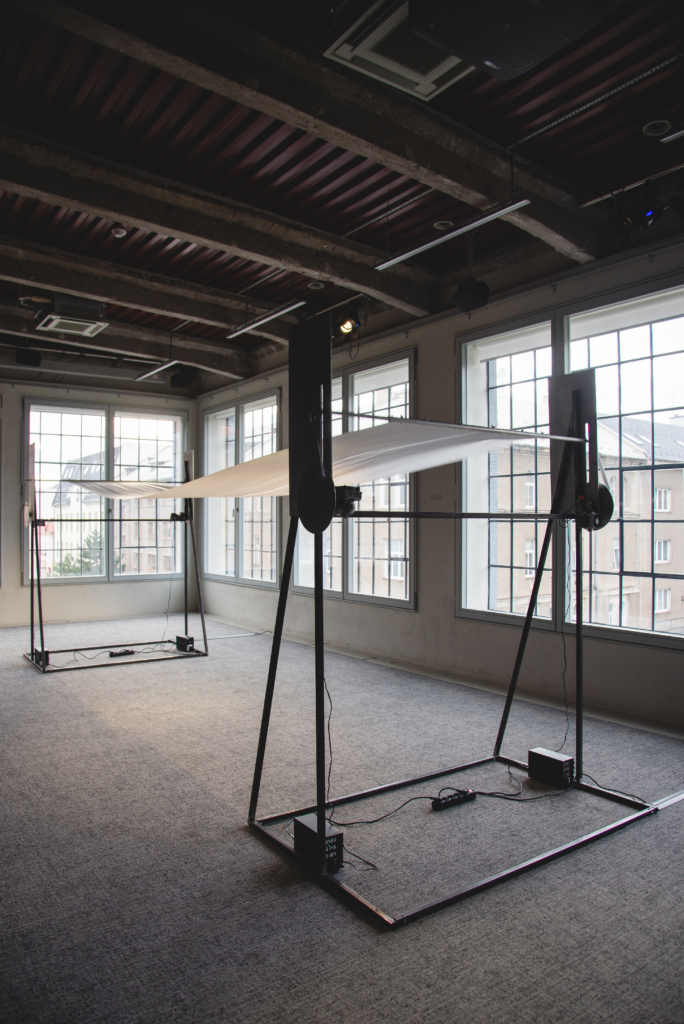

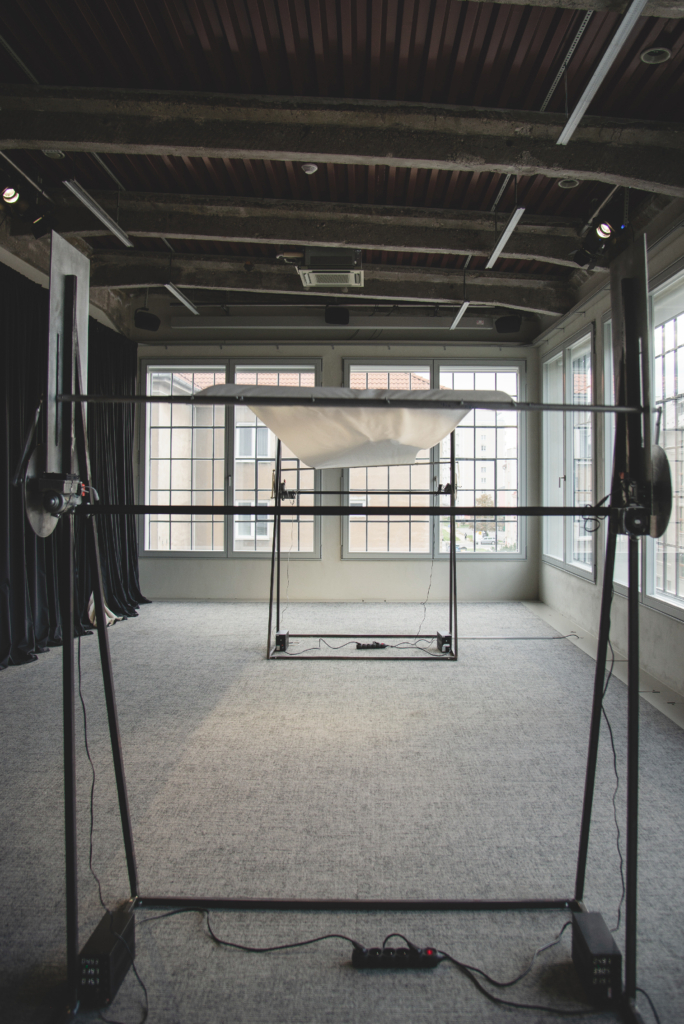
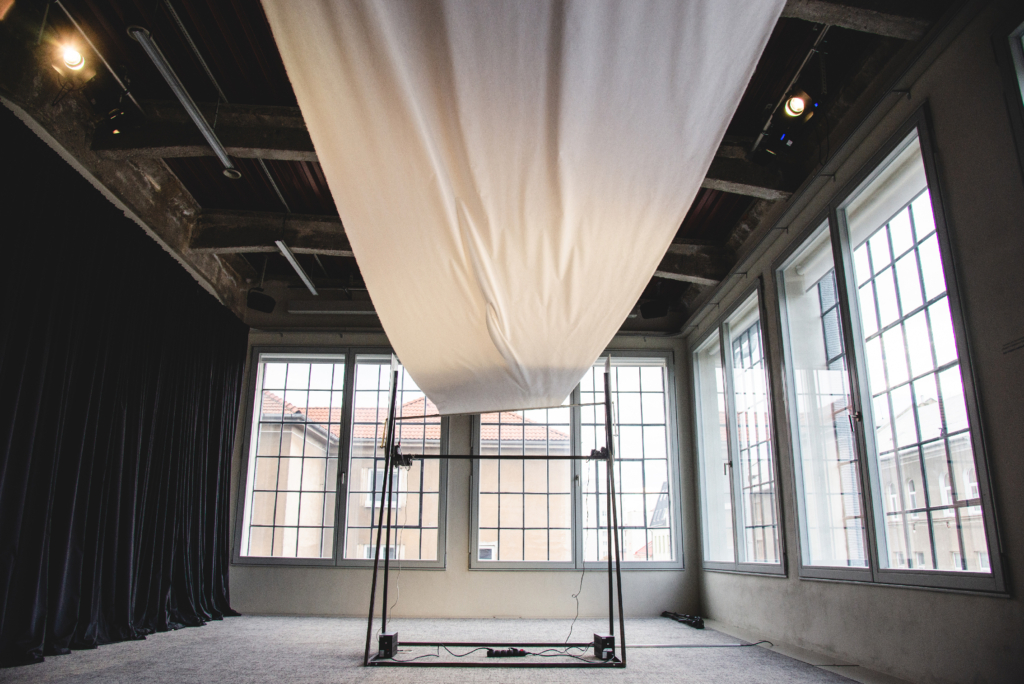
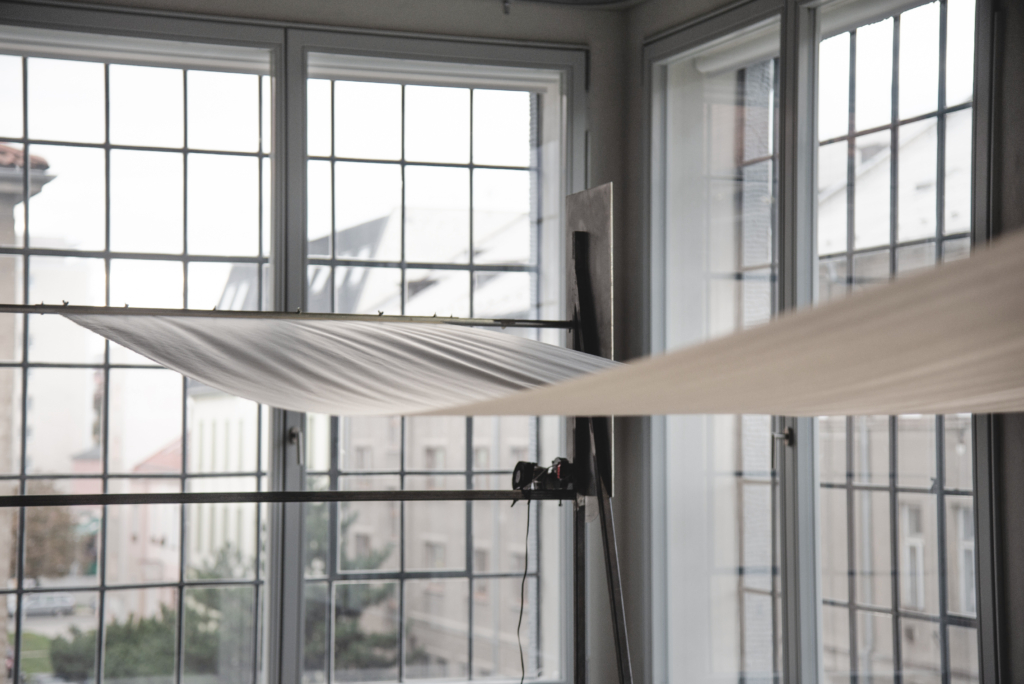
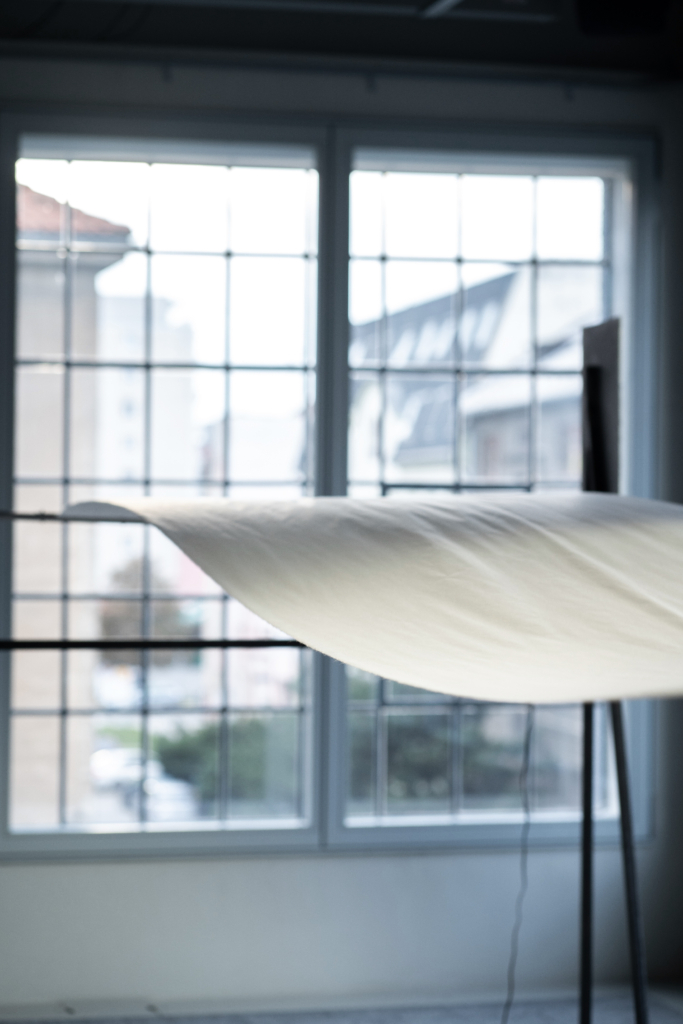
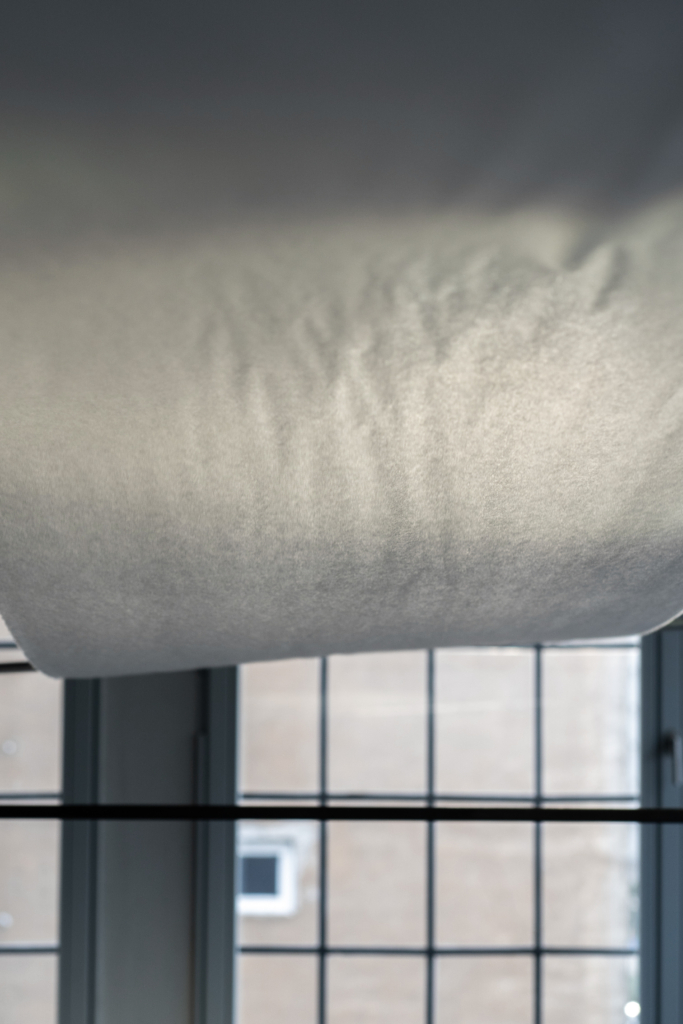

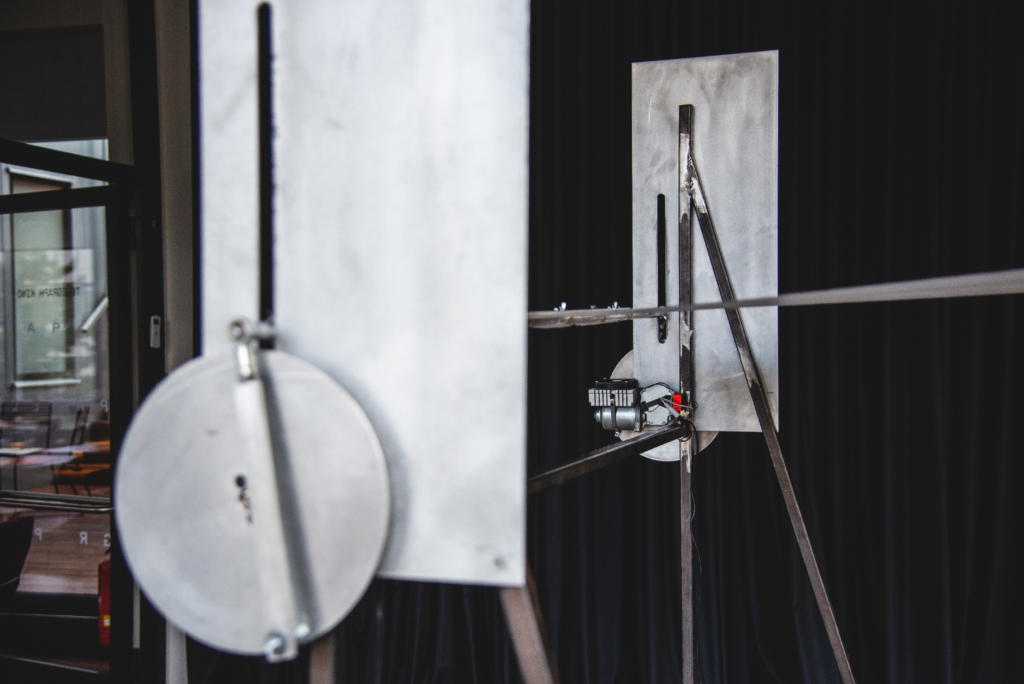

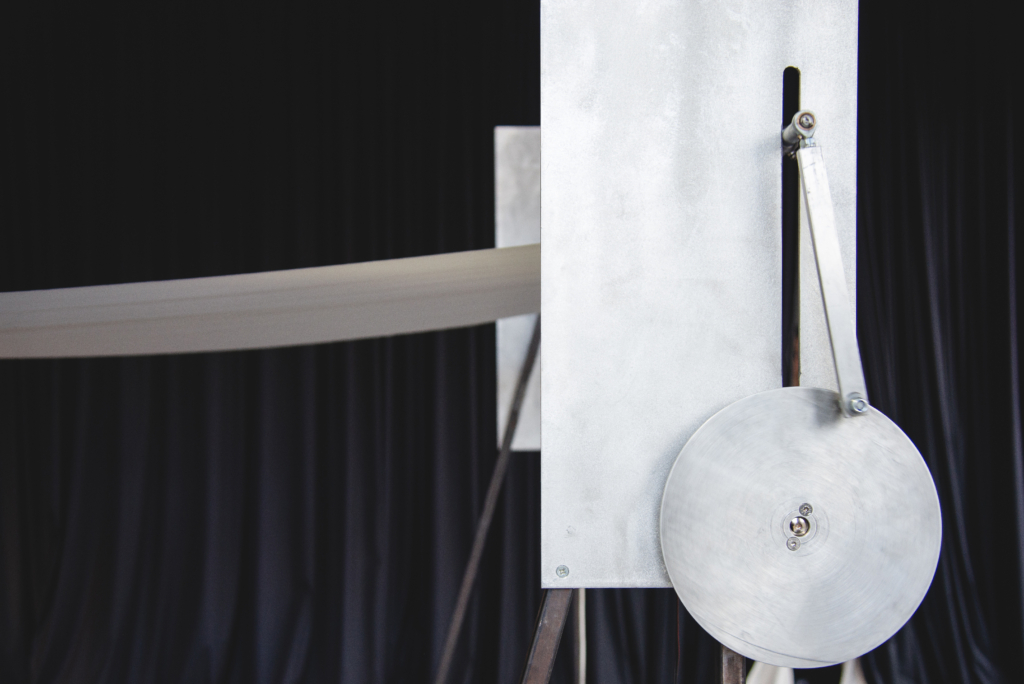
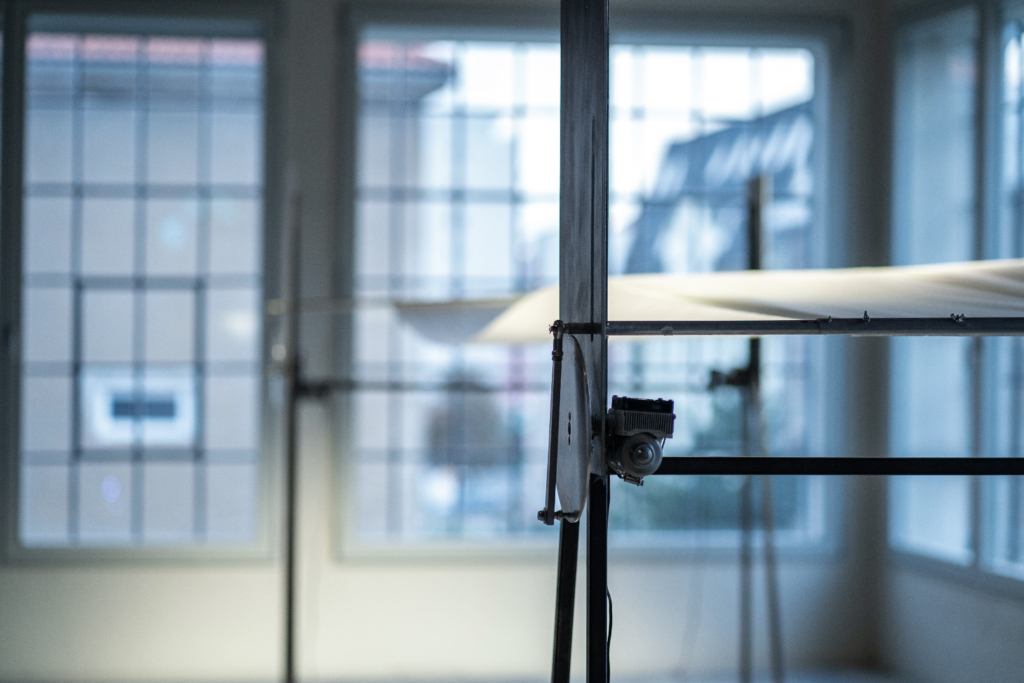
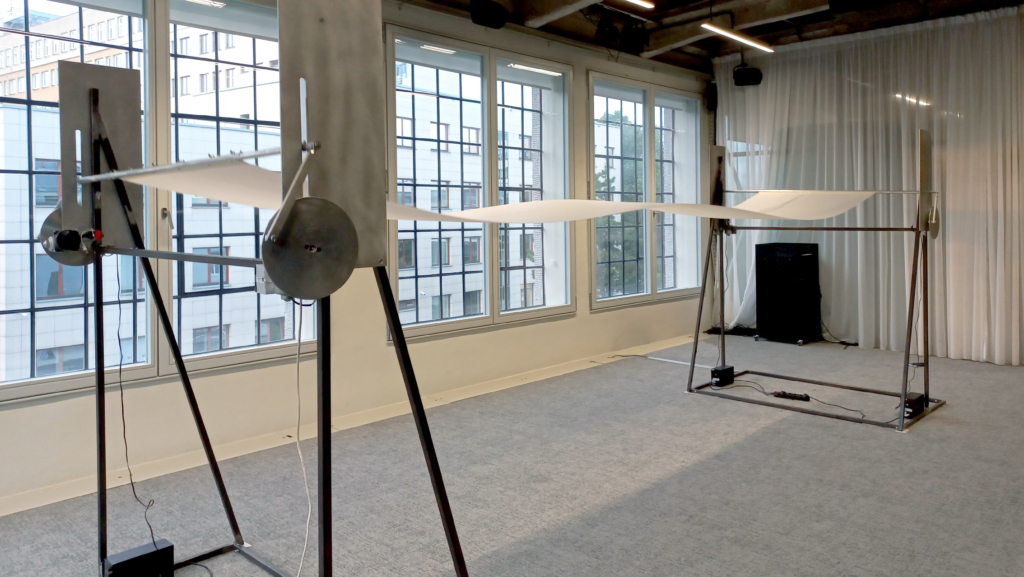

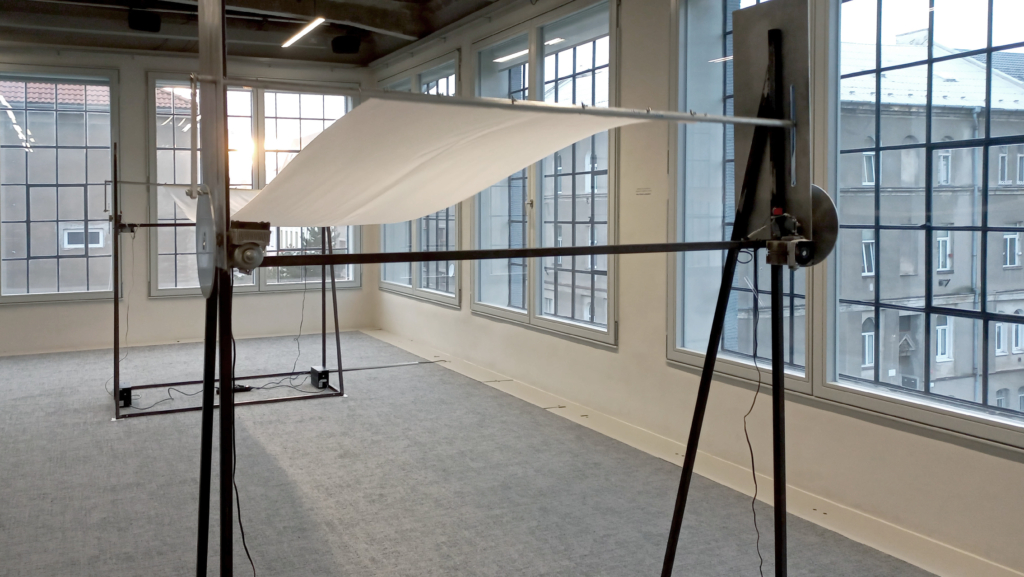
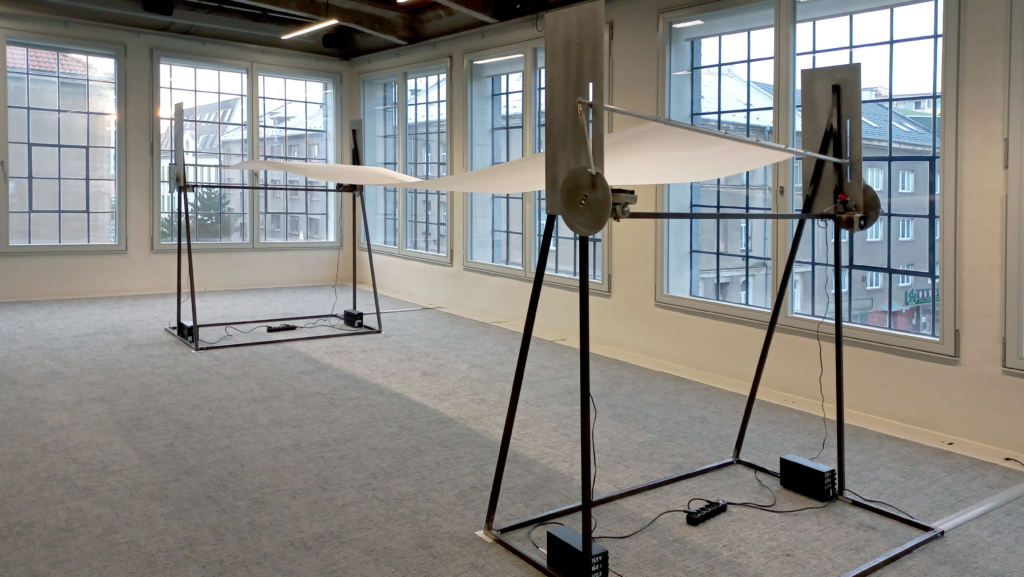
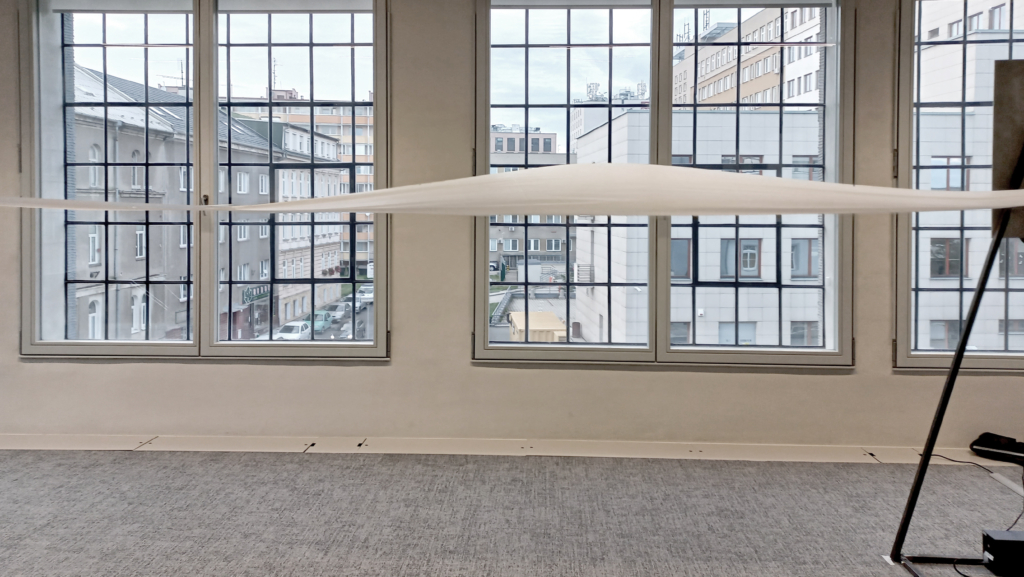
TELEGRAPH Gallery – Olomouc, solo exhibition by Mateusz Dabrowski – ABSOLUTELY NOTHING; 16/09 – 23/09/22; curator: Zbyněk Janáček; Foto: Vendula Burgrová;
ABSOLUTELY NOTHING Material: steel, engines, power supplies, aluminium, Japanese tissue paper; Dimension: 750 x 200 x 250 cm; Date: 2022
Absolutely Nothing
Telegraph Gallery, Jungmannova 3, Olomouc
16/09 – 23/09/2022
curator: Zbyněk Janáček
In ABSOLUTELY NOTHING we immediately notice the contrast. The contrast of the steel black structure, built by simple means, emphasizing the severity of the means, and at the same time creates something natural, objectively nice, aesthetically pleasing not only visually but also mentally. At first one notices the mechanical oppressiveness of forcing movement by means of simultaneous operation of motors, reinforced by repetitive sound. Organic movement is induced by an artificial mechanism created for this. The movement is triggered by a wave, which is inevitably associated with the movement of waves on the sea, it is very emotional, even sentimental, but not pretentious, it is something more. The existence of something organically ephemeral and elusive, a movement that is infinite and constantly changing. The waving tissue paper has a materiality as delicate as skin. Entering a contemplative state, the oppressiveness noticed at first becomes less important. What was interesting then as a whole, we now isolate fragments and details. The industriality of the object, the construction and mechanics have over time subordinated to subtlety and delicacy. Now only changes are visible. The provocative title reaches consciousness. “Absolutely Nothing”, this is the very state that can be experienced when looking towards the sea, when one feels emptiness, exists only here and now, when only the senses work.
—————————————————————————————————————–
W ABSOLUTELY NOTHING od razu zauważamy kontrast. Kontrast stalowej czarnej konstrukcji, zbudowanej prostymi sposobami, podkreślającej surowość środków, a zarazem tworzy coś naturalnego, obiektywnie ładnego, estetycznego nie tylko wizualnie ale też mentalnie. W pierwszej chwili dostrzega się mechaniczną opresyjność wymuszenia ruchu za pomocą symultanicznej pracy silników, wzmocnione repetytywnym dźwiękiem. Organiczny ruchu wywołany jest przez sztuczny mechanizm do tego stworzony. Ruch wyzwala fala, która nieuchronnie kojarzy się z ruchem fal na morzu, ma charakter bardzo emocjonalny, wręcz sentymentalny, ale nie pretensjonalny, jest czymś więcej. Zaistnienie czegoś organicznie ulotnego i nieuchwytnego, ruchu nieskończonego i nieustająco zmiennego. Falująca bibuła ma materialność delikatną jak skóra. Wchodząc w stan kontemplacyjny, opresyjność zauważona z początku staje się mniej ważna. To co było interesujące wtedy jako całość, teraz wyodrębniamy fragmenty i detale. Industrialność obiektu, konstrukcja i mechanika z czasem podporządkowała się subtelności i delikatności. Teraz widać jedynie zmiany. Dociera do świadomości prowokacyjny tytuł. „Absolutely Nothing”, to jest właśnie ten stan, którego można doświadczyć patrząc w stronę morza, kiedy odczuwa się pustkę, istnieje tylko tu i teraz, kiedy pracują jedynie zmysły.
IMPLOSION 2.0
.
IMPLOSION 2.0
.
IMPLOSION 2.0
Duza Scena UAP gallery
Wodna street 24, Poznań
18/02 – 06/03/22
curators: Paweł Fileger and Jakub Malinowski
The artist’s different approach to the subjects of perception was to focus more on the internal analysis of humanism. Perception in relation to the individual and subjective side of seeing oneself, including in a spiritual context.
Dabrowski is not an artist who explicitly defines the problem. Like the reception of his works, it’s a fine line oscillating between anxiety, tension, sometimes material brutalism, and subtlety and sensitivity. His minimalist forms are very condensed and compact formally and aesthetically, sometimes despite their complexity. One has the impression that his works are exquisitely assimilated not only with the space in which they occurred, they also possess something very intimate in an emotional context. The artist organizes the exhibition space, creates forms that are elegant and visually beautiful, which is conducive in the reception of his works, and allows the viewer to enter more deeply into successive levels of self-reflection. One has the impression that Dabrowski concentrates in the creative process on what his intuition tells him, and only finally trims the form of unnecessary elements, leaving only what is natural, authentic and true. He instinctively analyzes the combination of brutalism, idealism and minimalism, and looks for hidden meanings that emerge contemplatively, naturally, over time. He is interested in the incessant processuality of matter, the inanimate – cosmic, as well as the human mental. One can describe this conflict as a confrontation between corporeal reality and the meta realm. His reflection on physical concepts is the basis for understanding the environment, place, identity and his own, as well as the nature around us.
The title IMPLOSION 2.0 is, in other words, absorbing and filtering everyday life, taming it despite the fact that a lack, a deficit of clear answers always prevails. This state is reflected in the creative process immersed in intuition and the desire to deepen one’s awareness of understanding.
Objects materialize accumulated emotions.
The white column is constantly spinning, dragging a piece of felt behind it and collecting dirt from the floor.
—————————————————————————————————–
Inne podejście artysty do tematów percepcji miało na celu skupienia się bardziej na wewnętrznej analizie humanizmu. Percepcji w odniesieniu do indywidualnej i subiektywnej strony widzenia siebie, również w kontekście duchowym.
Dąbrowski nie jest artystą, który jednoznacznie definiuje problem. Podobnie jak odbiór jego dzieł, to cienka granica oscylująca pomiędzy niepokojem, napięciem, czasem materialnym brutalizmem, a subtelnością i wrażliwością. Jego minimalistyczne formy są bardzo skondensowane i zwarte formalnie i estetycznie, czasem mimo swojej złożoności. Ma się wrażenie, że jego dzieła są znakomicie zasymilowane nie tylko z przestrzenią, w której zaistniały, również posiadają coś bardzo intymnego w kontekście emocjonalnym. Artysta porządkuje przestrzeń wystawienniczą, tworzy formy eleganckie i wizualnie piękne, co sprzyja w odbiorze jego prac, pozwala odbiorcy na wchodzenie głębiej w kolejne poziomy refleksji nad sobą. Ma się wrażenie, że Dąbrowski koncentruje się w procesie twórczym nad tym, co podpowiada mu intuicja, a dopiero finalnie ociosuję formę z niepotrzebnych elementów, zostawia tylko to, co naturalne, autentyczne i prawdziwe. Instynktownie analizuje połączenie brutalizmu, idealizmu i minimalizmu, szuka ukrytych znaczeń, które wyłaniają się kontemplacyjnie, naturalnie, z czasem. Interesują go nieustająca procesualność materii, tej martwej – kosmicznej, jak i ludzkiej mentalnej. Można ten konflikt określić jak konfrontacja rzeczywistości cielesnej z meta obszarem. Jego refleksja nad koncepcjami fizycznymi jest podstawą do zrozumienia otoczenia, miejsca, tożsamości i swojej, jak również otaczającej nas natury.
Tytułowa IMPLOZJA 2.0 to, innymi słowy, pochłanianie i filtrowanie codzienności, oswajanie jej pomimo tego, że zawsze dominuje brak, deficyt jasnych odpowiedzi. Ten stan znajduje odzwierciedlenie w procesie twórczym zanurzonym w intuicji i chęci pogłębienia swojej świadomość rozumienia.
Przedmioty materializują nagromadzone emocje.
Biała kolumna nieustannie wiruje, ciągnąc za sobą kawał filcu i zbierając brud z podłogi.
ORION
.
ORION
.
ORION
Nanazenit gallery, Zwycięzców 15, Warszawa
07/11 – 14/12/2019
curator: Michał Kołodyński
Floating through the areas of Mateusz Dabrowski’s work, after some time we experience a kind of déjà vu. The similarity of the works, especially in the cycles, makes us certain that we are, as it were, at the starting point, when in fact another layer of lasering has been applied to our perception, which has deepened and enriched the perception of the world. Graphics, painting, sculpture, film, philosophy, music – these are just the tools with which the artist builds his work. A work consisting of cycles, series, creating a rhythm, a breath, a space-time inhalation and exhalation. Tuning the observer and participant (who is no longer a mere spectator) to the frequency, the pulse, permeating Dabrowski’s work. We participate in a world in which the artist’s works are constantly working out the rules, while at the same time creating principles far beyond aesthetics and craftsmanship. His work is a constant dialogue between the question posed and the answer, an analysis, and in this peculiar test that surprises us with its very pleasant course, we learn about things that are absolutely incredible. We begin to see a different, new space-time sense. This search for meaning is like an obsession, a superhuman determination, which makes us think that it is not the artist who chose this path – it is the path that chose him. Despite the rather distant formal activities such as relief, kinetic sculpture, printmaking, painting, what is common is the thread, the ray, the structure of the search. There is a tremendous fascination with material, from printing ink – to Styrofoam, from felt – to light – and we don’t know what else. We encounter a constant stream of suggestions and doubts, questions and answers, contexts and analysis. We move through the fabric of the artist’s oeuvre, swooping over the smooth parts and languishing in the creases. We are guided by a seam. Suddenly we find ourselves between layers. However, Matthew Dabrowski’s work is far from a monologue. Even to a conversation. The works together with us participate in looking at, into and through each other.
Michał Kołodyński
———————————————————————————————————-
Płynąc przez obszary twórczości Mateusza Dąbrowskiego po pewnym czasie przeżywamy swoiste déjà vu. Podobieństwo prac, szczególnie w cyklach, powoduje pewność, że jesteśmy jakby w punkcie wyjścia, kiedy w rzeczywistości na nasze postrzeganie została nałożona kolejna warstwa laserunku, który pogłębił i wzbogacił postrzegania świata. Grafika, malarstwo, rzeźba, film, filozofia, muzyka – to tylko narzędzia, którymi artysta buduje swoje dzieło. Dzieło składające się z cykli, serii, tworzących rytm, oddech, czasoprzestrzenny wdech i wydech. Dostrajający obserwatora i uczestnika (który przestał być już zwykłym widzem) do częstotliwości, pulsu, przenikającego twórczość Dąbrowskiego. Uczestniczymy w świecie, w którym prace artysty stale rozpracowują reguły, jednocześnie tworząc zasady daleko wykraczające poza estetykę i rzemiosło. Jego twórczość to ciągły dialog między postawionym pytaniem a odpowiedzią, analiza, a w tym osobliwym teście zaskakującym swoim bardzo przyjemnym przebiegiem, dowiadujemy się o rzeczach absolutnie niebywałych. Zaczynamy dostrzegać inny, nowy czasoprzestrzenny sens. To poszukiwanie sensu jest jak obsesja, nadludzka determinacja, co skłania nas do myśli, że to nie artysta wybrał tę drogę – to droga wybrała jego. Pomimo dość odległych formalnie działań takich jak relief, rzeźba kinetyczna, grafika, malarstwo, wspólna jest nić, promień, struktura poszukiwania. Jest tu olbrzymia fascynacja tworzywem, od tuszu drukarskiego – po styropian, od filcu – po światło – i nie wiemy co jeszcze. Natrafiamy na nieustający strumień sugestii i wątpliwości, pytań i odpowiedzi, kontekstów i analiz. Poruszamy się po tkaninie twórczości artysty, mknąc po partiach gładkich i lawirując w zagnieceniach. Jesteśmy prowadzeni szwem. Nagle trafiamy między warstwy. Jednak daleko pracom Mateusza Dąbrowskiego do monologu. Nawet do rozmowy. Dzieła razem z nami uczestniczą w patrzeniu na, wgłąb siebie i przez siebie.
Michał Kołodyński
TONDO.MIRROR.LIGHT
.
TONDO.MIRROR.LIGHT
.
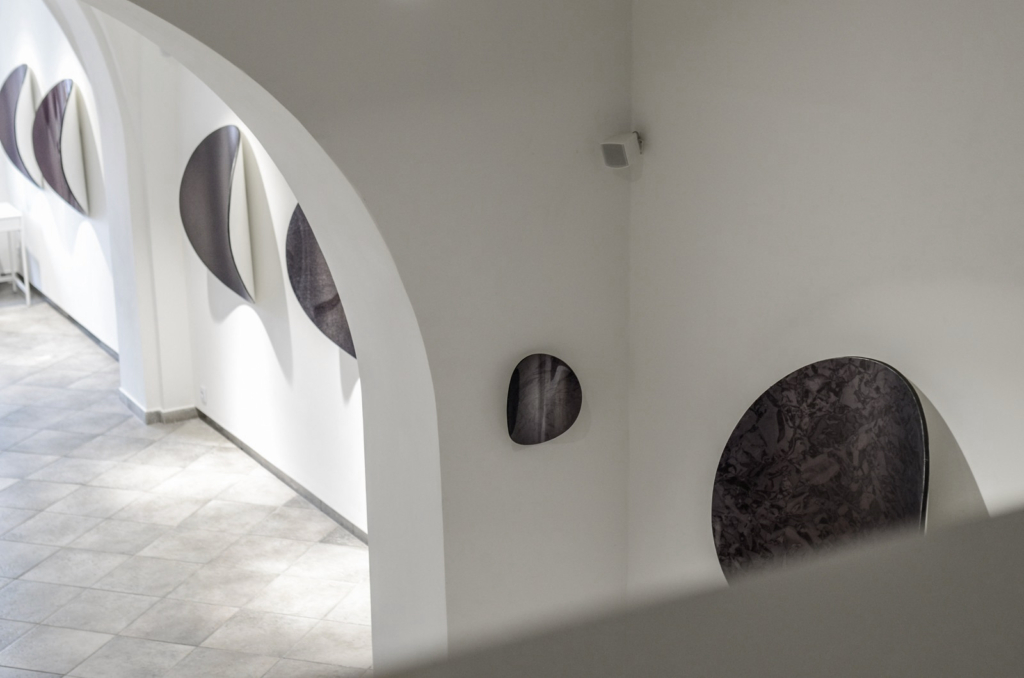
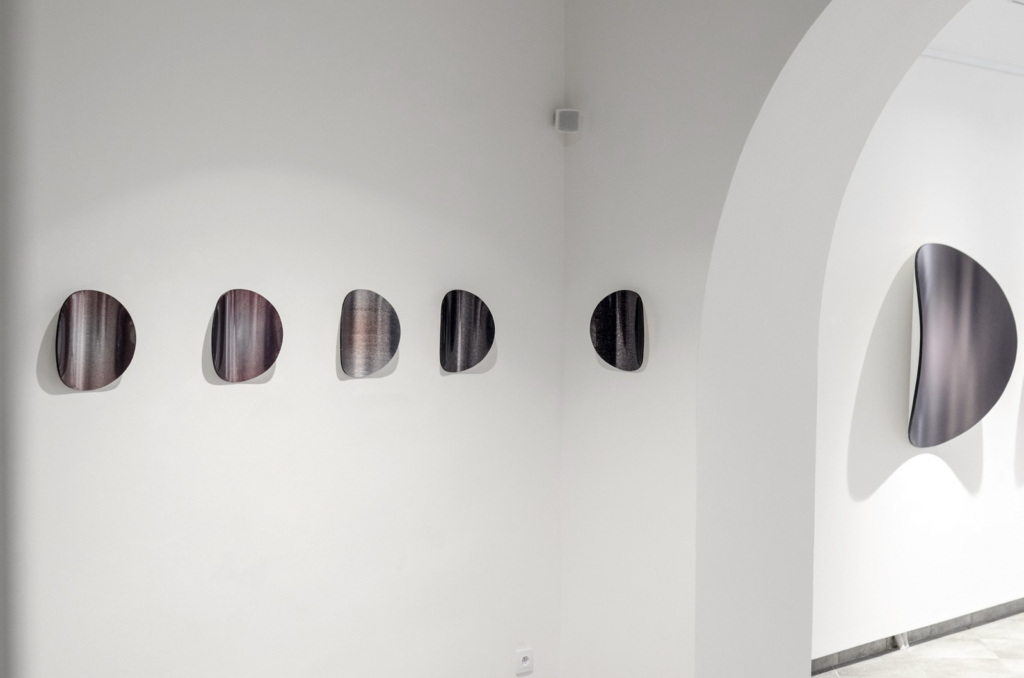

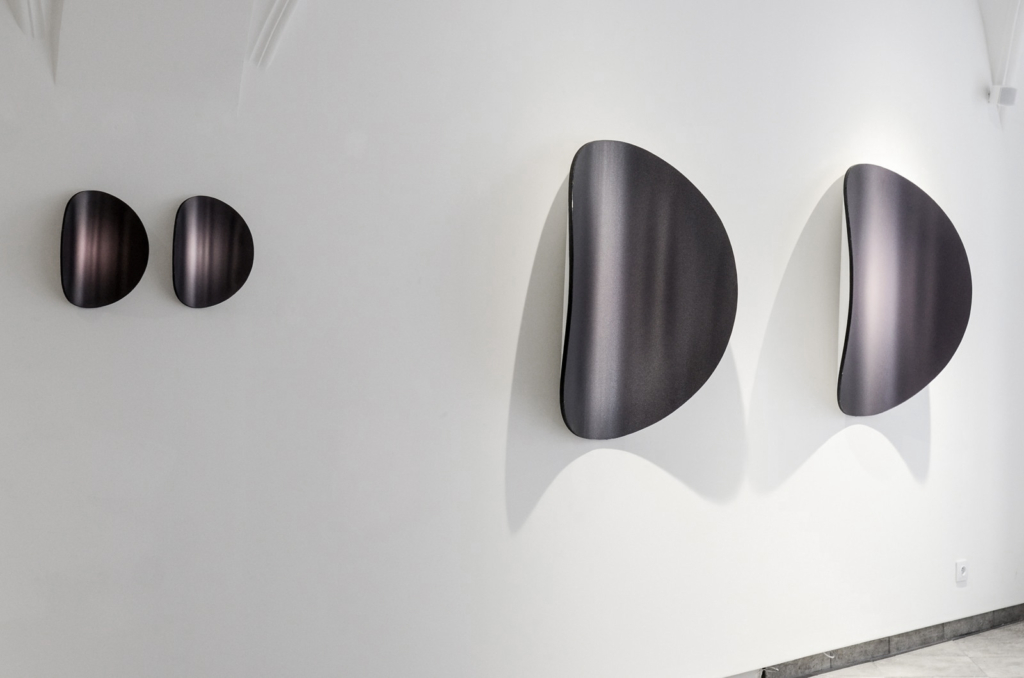


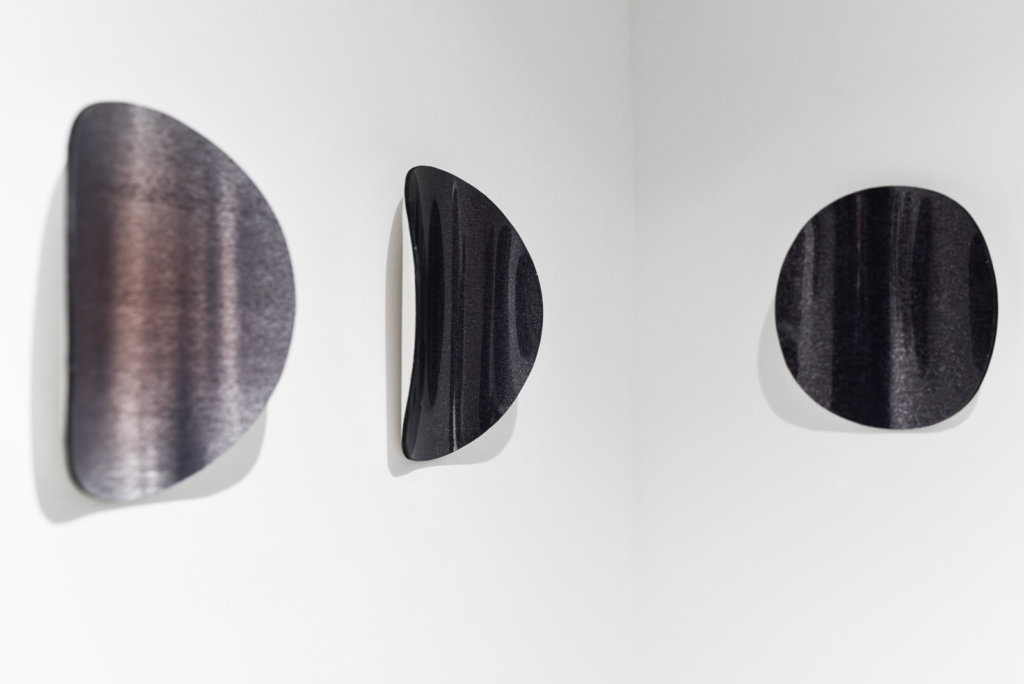

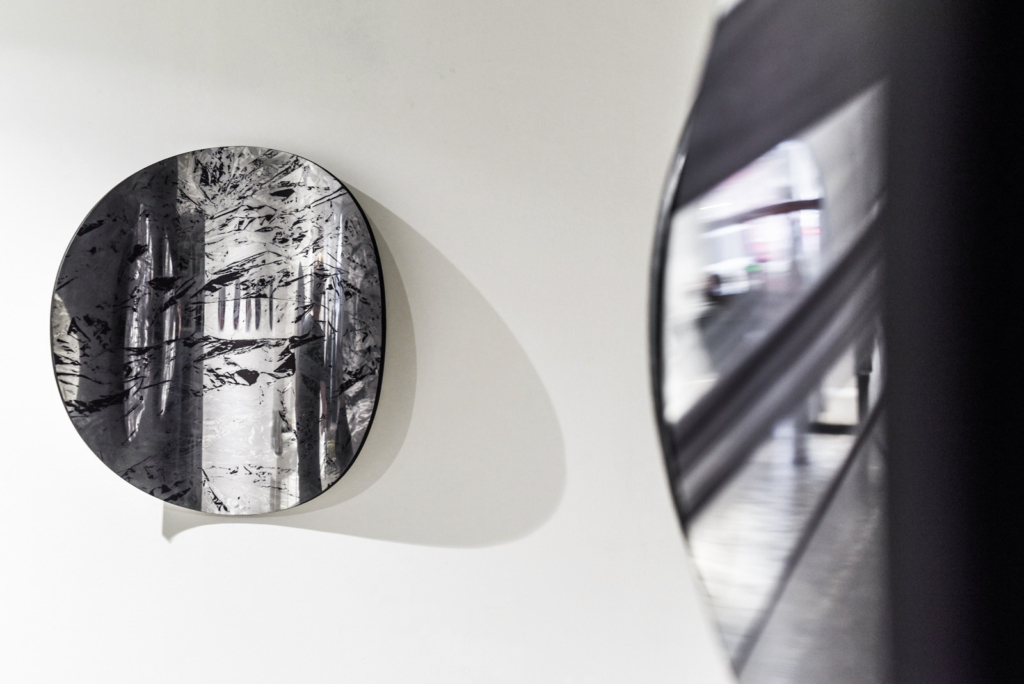
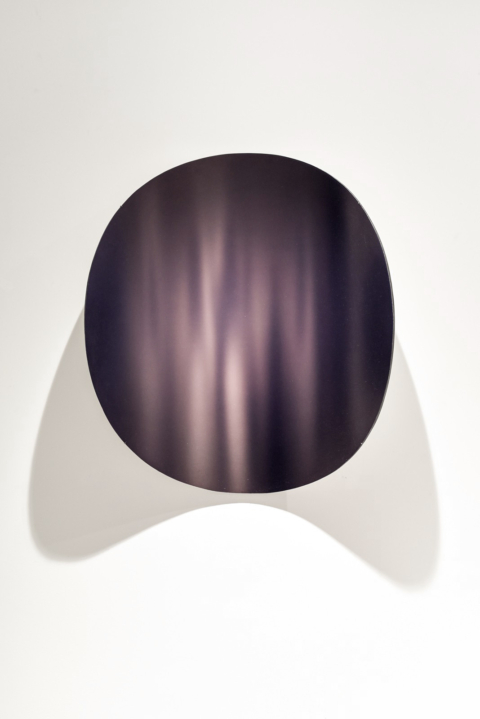
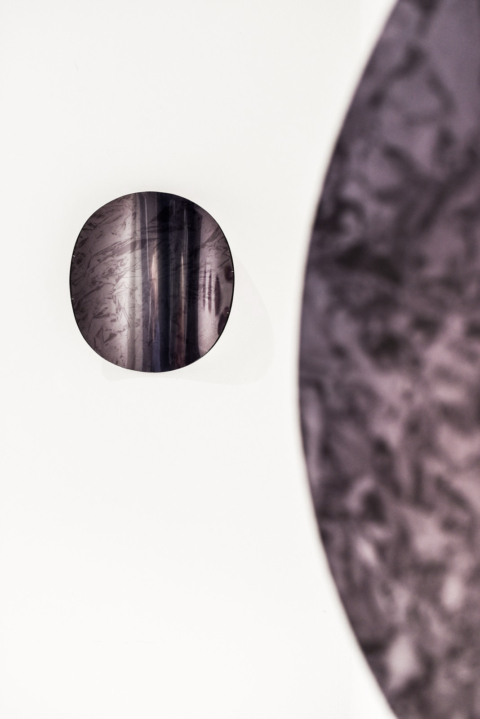
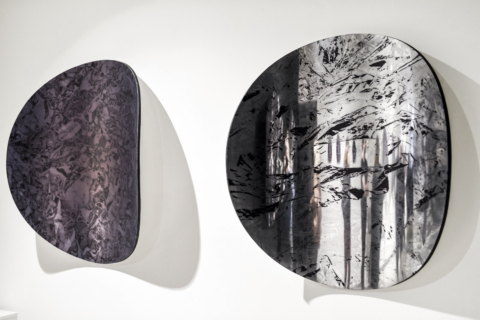
photos Linda Parys
TONDO. MIRROR. LIGHT.
5/10 – 12/10/19
MIA ART. GALLERY, Wrocław
Curator: Bogusław Deptuła
About Mateusz Dąbrowski’s series Mirrors.
“Works in the Mirrors series look extremely simple – although certainly not banal, but unambiguous: tondi, some with a diameter of 100 cm, others 25 cm, bent in a similar way attract, absorb and refract light, but at the same time reflect it to some extent; unobvious, dark mirrors, silvery, copper, greyish, undefined, sophisticated, a bit like paintings, a bit like reliefs at the same time.
A multiplicity and richness of mirrors, the likes of which had to appear in the space of art and reality. They have not penetrated too far into reality, but perhaps in the end, this will happen, too. I wanted to call these physical objects, round in form, paintings, as tradition demands, but I don’t think that is what they are! So, what are they? And here is the problem, because there is something of a double agent in them, reflecting physical light and being at the same time some kind of emanation of cosmic light. The moon – a mirror of the sun; what a cliché, but also a physical and optical fact, at least from our earthly perspective – for the moment, the only one we have. The planet Earth, among other planets, curved flying saucers, or perhaps comets, satellites, delusions. Illumination and lack thereof, red dwarfs, red giants, I know very little about the cosmos, but at the same time, I have the impression that Mateusz Dąbrowski does not take his eyes off it, even if he rarely looks up. In his small studio, I couldn’t find a spyglass or a telescope. Perhaps he uses then when nobody’s looking, or on trips to the planetarium, but I don’t think that’s what happens. Because this cosmos may be more in him than in outer space. This penetration certainly exists, but at the same time, I have the impression that Mateusz Dąbrowski’s cosmos is born within him; it draws the greatest power and energy from him. At the same time, he is an artist who does not stop searching, and he could give his ideas to many others. His cosmic, planetary, levitating mirrors can induce many to make intergalactic journeys without going beyond the boundaries of these compositions or beyond the threshold of his studio.”
—————————————————————————————————————-
O cyklu prac Mateusza Dąbrowskiego – „Lustra”.
“Prace z serii „Lustra” wyglądają niezwykle prosto – choć na pewno nie banalnie, ale jednoznacznie: tonda, raz o średnicy 100 cm raz 25 cm, wygięte, w podobny sposób przyciągają, wchłaniają, załamują światło, ale równocześnie w jakimś stopniu je odbijają; nieoczywiste, ciemnawe lustra, srebrzyste, miedziane, szarawe, niedookreślone, wyszukane, trochę obrazy, trochę reliefy zarazem.
Luster wielość i bogactwo, pewnie i takie musiały się więc pojawić w przestrzeni sztuki i rzeczywistości. Do rzeczywistości jeszcze zbyt mocno się nie przedarły, ale może w końcu i to się dokona.. Te fizyczne, okrągłe w formie przedmioty tradycyjnie miałbym ochotę nazwać obrazami, ale one nimi jednak chyba nie są! Czym zatem? I tu jest kłopot, bo jest w nich coś z podwójnego agenta, odbijającego światło fizyczne i będące zarazem jakąś emanacją kosmicznej światłości. Księżyc – lustro słońca; co za banał, ale równocześnie fizykalny i optyczny fakt, przynajmniej z naszej ziemskiej perspektywy – chwilowo o inną nam trudno. Planeta ziemia wśród innych planet, krzywe latające talerze, a może komety, satelity, zwidy. Światłość i jej brak, czarne karły, czerwone giganty, bardzo mało wiem o kosmosie, ale zarazem mam wrażenie, że Mateusz Dąbrowski nie odrywa od niego wzroku, nawet jeśli bardzo rzadko spogląda w górę. W niewielkiej pracowni nie dostrzegłem również ani lunety, ani teleskopu. Może korzysta z nich, gdy nikt nie widzi, albo na wyjazdach do planetariów, ale nie sądzę, by tak się działo. Bo ten kosmos może bardziej jest w nim, niż w kosmosie. To przenikanie na pewno istnieje, ale równocześnie mam wrażenie, że kosmos Mateusza Dąbrowskiego rodzi się w nim samym; z niego samego czerpie największą moc i energię. A przy tym jest on artystą nieustającym w poszukiwaniach, a swoimi pomysłami mógłby obdarować wielu innych. Jego kosmiczne, planetarne, lewitujące lustra mogą niejednego skłonić do odbywania międzygalaktycznych podróży bez wychodzenia poza obręb tych kompozycji, czy za próg pracowni.”
Bogusław Deptuła
BARDO vol 3 -EMBODIMENT-
.
BARDO vol 3 -EMBODIMENT-
.
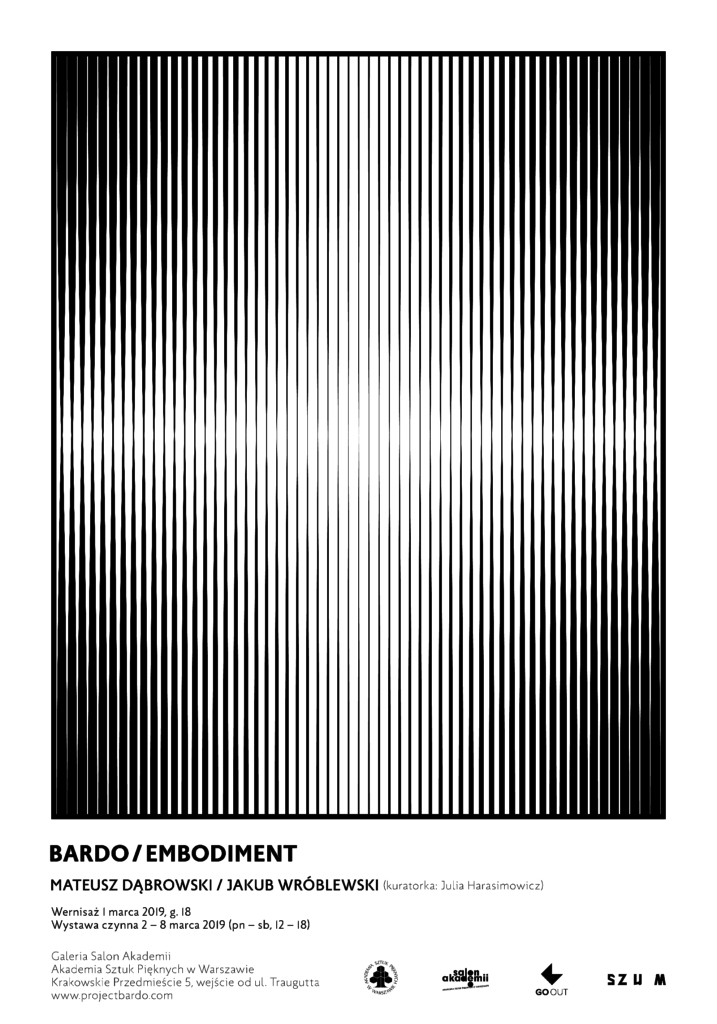
design Mateusz Machalski
BARDO vol3 EMBODIMENT/ Mateusz Dąbrowski, Jakub Wróblewski
SALON AKADEMII GALLERY
01/03 – 08/03/2019
curator Julia Harasimowicz
Bardo (skt. antarabhava; Wylie: bar do) – literally translated is an intermediate state. A Tibetan Buddhist term for any transitional state of existence: life, meditation, sleep, death. Most commonly used to refer to the intermediate state between death and subsequent birth.
The artistic and research project Bardo, led by Mateusz Dąbrowski and Jakub Wróblewski since 2013, refers to popular terms from the borderline of science and intellectual fashions during successive instalments. The artists have developed a particular model of collaboration. They always create two autonomous projects, connected by the exhibition space and the leitmotif. Embodiment is the third instalment of the series, created after a six-year break from showing the previous one. The title of the latest presentation, which is not fully translatable, can be widely translated as embodiment or embodiment.
The show at the Academy Salon is a summary not so much of the project itself, but above all of the two artists’ recent formal explorations, which have allowed them a new quality of interpretation of the chosen slogan. More than intellectual analysis, they are more concerned with the audience’s affective contact with the resulting works.
Mateusz Dąbrowski continues his search for movement and technique. The artist’s starting point is a reflection on the nature of technology, in which he tries to go beyond thinking in terms of nature-culture oppositions and looks for universal commonalities. He focuses on the meaning of the term embodiment and embodiment itself, and analyses the possibility of translating ideas into matter.
Jakub Wróblewski explores the issue of embodiment through an interactive VR experience. The result of his reflections is a play with the almost classic transhumanist fantasy of life extension through the virtual world. The artist refers to the genesis of the project, the Tibetan bardo, as a space for the individual experience of death. The designed action requires the viewer to participate fully and alone in the virtual reality. The artists have entirely renounced any attachment to a specific medium and focus on inducing a sense of suspension in the viewer.
Julia Harasimowicz
Mateusz Dąbrowski continues his search related to the movement and technology, initiated in 2018 at the exhibition Caterpillar at the Zachęta Project Room. The starting point for the artist is the reflection on the nature of technology, in which he tries to go beyond thinking in the nature-culture oppositions, Dąbrowski looks for universal common features. In Salon Akademii he focuseson the meaning of the very term of incarnation and embodiment, analyses the possibilities of putting the idea before matter. The most important means of presenting these concepts are two physical phenomena – light and motion. For Dąbrowski, an object is the embodiment of an idea, but the visual form will always in a way remain a simplification.
1 Andrew D. Wilson, Sabrina Golonka, Embodying cognition is not what you think, transl. Monika Włudzik, Przemyslaw Nowakowski, ‘Avant’ 2014, vol. 1, no. 1, p. 22.
Dąbrowski divides the gallery space into zones. In the first of them, there are irregular objects with a crystal structure. Synthetic materials and a form referring to nature make the object unobvious. Vertical forms move in a mechanical way, like a cogwheel, but theyare not without small suspensions and delays. So, the artist points out that the monotonous rhythm refers to the dynamics seen in nature. Objects also make the viewer to interact with motion, to take the right pose to pass them or passively observe them from a safe distance. They also form a kind of obstacle ahead of the next zone where the light installation Timeline is located. Lightboxes shine in a variable and rapidly changing rhythm. The author says: “There is no fixed point, […] there is a new relationship between the elements. It is impossible to actualize the idea in it. This object cannot be embodied. I am interested in the fragmentary nature and the failing thoughts of something in interpreting something. Also what is elusive, devoid of real forms.” As viewers, we see dynamic systems, but due to the physical barrier, they become even more obscure to us.
Julia Harasimowicz
——————————————————————————————————————–
Mateusz Dąbrowski kontynuuje swoje poszukiwania związane z ruchem i techniką, zainicjowane w 2018 roku na wystawie Caterpillar w Miejscu Projektów Zachęty. Punktem wyjścia dla artysty jest refleksja nad naturą technologii, w której próbuje wyjść poza myślenie w opozycjach natura–kultura, Dąbrowski szuka uniwersalnych cech wspólnych. W Salonie Akademii skupia się na znaczeniu samego terminu wcielenia i ucieleśnienia, analizuje możliwości przełożenia nad materię idei. Najważniejszymi środkami przedstawienia tych koncepcji są dwa zjawiska fizyczne – światło i ruch. Obiekt dla Dąbrowskiego jest ucieleśnieniem idei, jednak zawsze na swój sposób forma wizualna pozostanie jej uproszczeniem.
1 Andrew D. Wilson, Sabrina Golonka, Ucieleśnienie poznania to nie to, co myślisz, przeł. Monika Włudzik, Przemysław Nowakowski, „Avant” 2014, vol. 1, nr 1, s. 22.
Dąbrowski dzieli przestrzeń galerii na strefy. W pierwszej z nich znajdują się nieregularne obiekty o strukturze kryształu, przypominające nieco odprysk z ruchomej formy Caterpillar. Syntetyczne materiały i nawiązująca do natury forma sprawiają, że obiekt ma nieoczywisty status. Wertykalne formy poruszają się w sposób mechaniczny, jak koło zębate, ale niewolne są od drobnych zawieszeń i opóźnień. Artysta wskazuje jednak, że monotonny rytm odnosi się do dynamiki dostrzeganej w naturze. Obiekty wymuszają także interakcję z ruchem widza, który musi przybrać odpowiednią pozę, aby wyminąć je lub biernie obserwować z bezpiecznej odległości. Tworzą również formę przeszkody przed kolejną sferą, w której znajduje się świetlna instalacja Timeline. Lightboxy świecą w różnym i szybko zmieniającym się rytmie. Autor mówi: „nie ma punktu stałego, […] zachodzi coraz to nowa relacja pomiędzy elementami. Nie da się w niej konkretu idei urzeczywistnić. Nie da się tego obiektu ucieleśnić. Interesuje mnie fragmentaryczność i niezatrzymujące się myśli o czymś, w interpretowaniu czegoś. Także to, co jest nieuchwytne, pozbawione form rzeczywistych”. Jako widzowie dostrzegamy dynamiczne układy, ale za sprawą fizycznej bariery stają się dla nas jeszcze mniej uchwytne.
Julia Harasimowicz
CATERPILLAR
.
CATERPILLAR
.
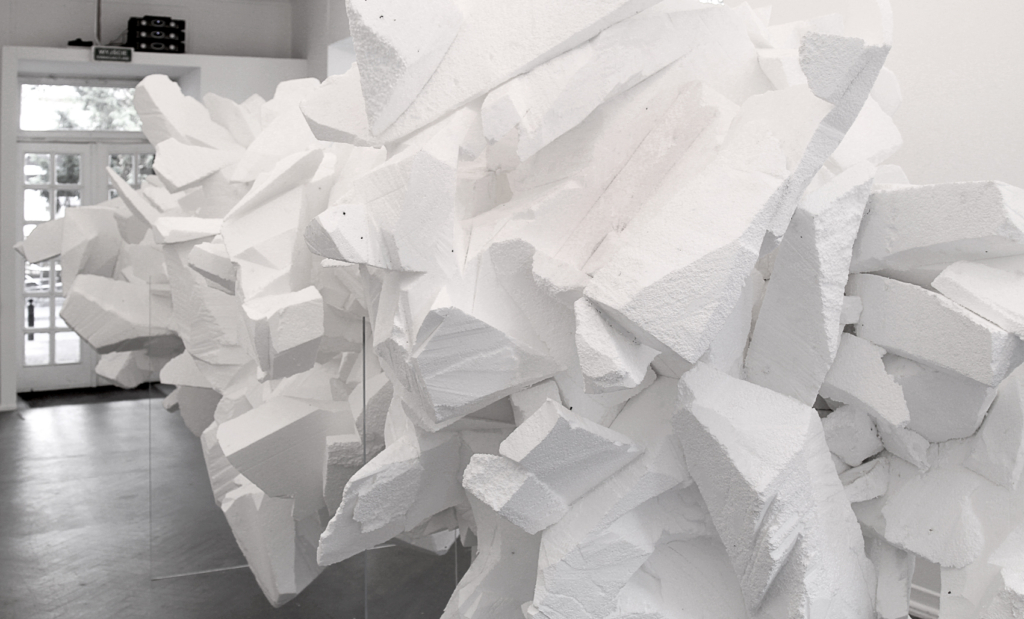
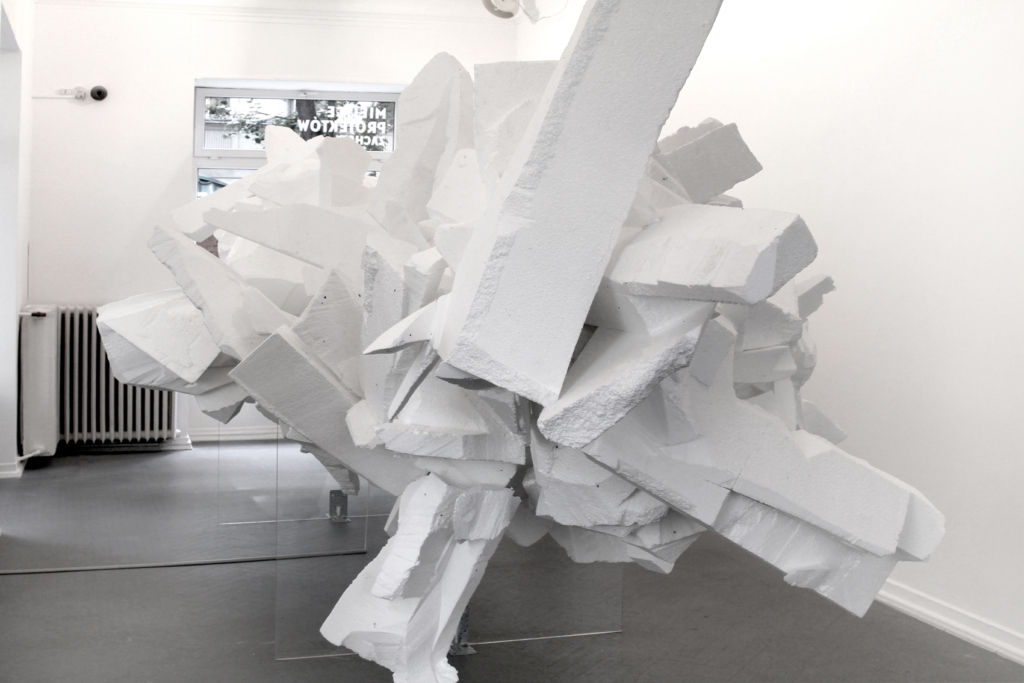
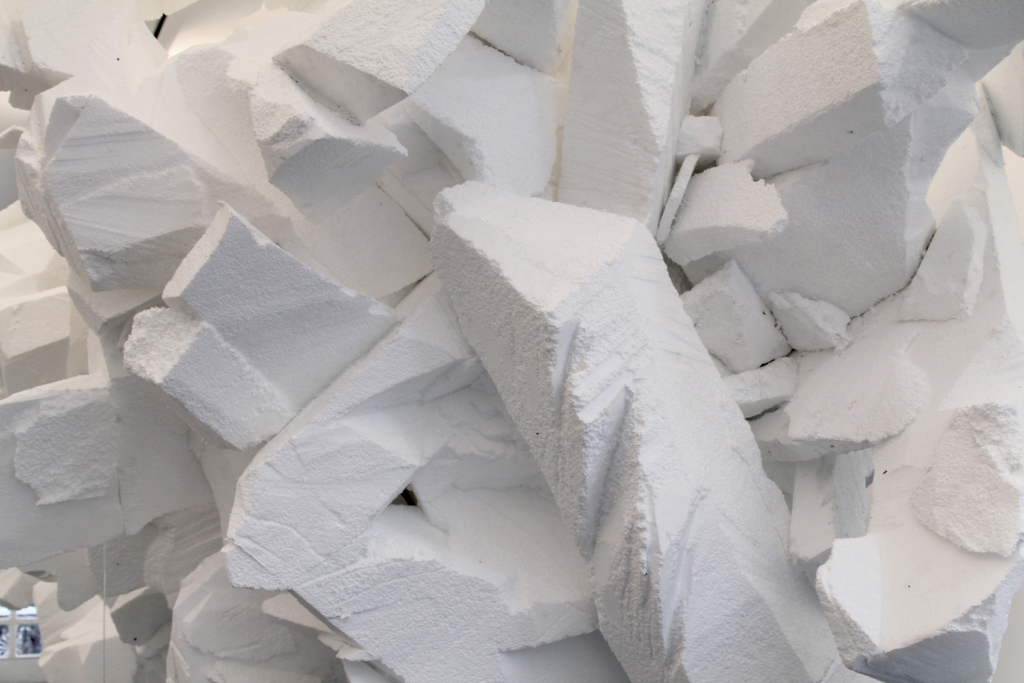
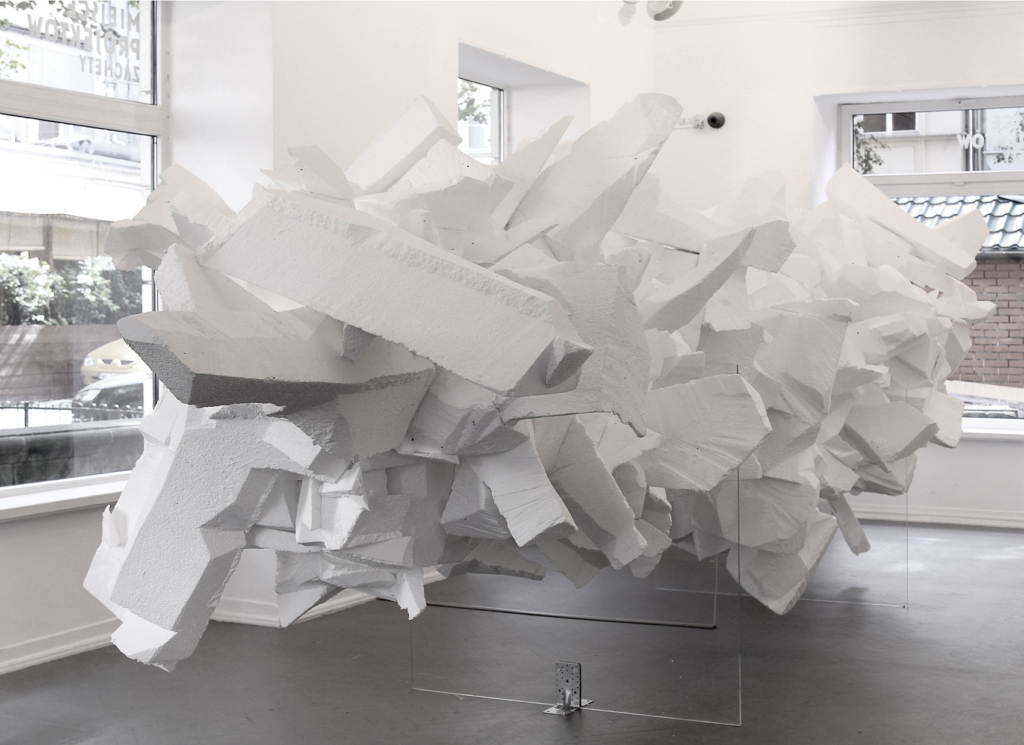
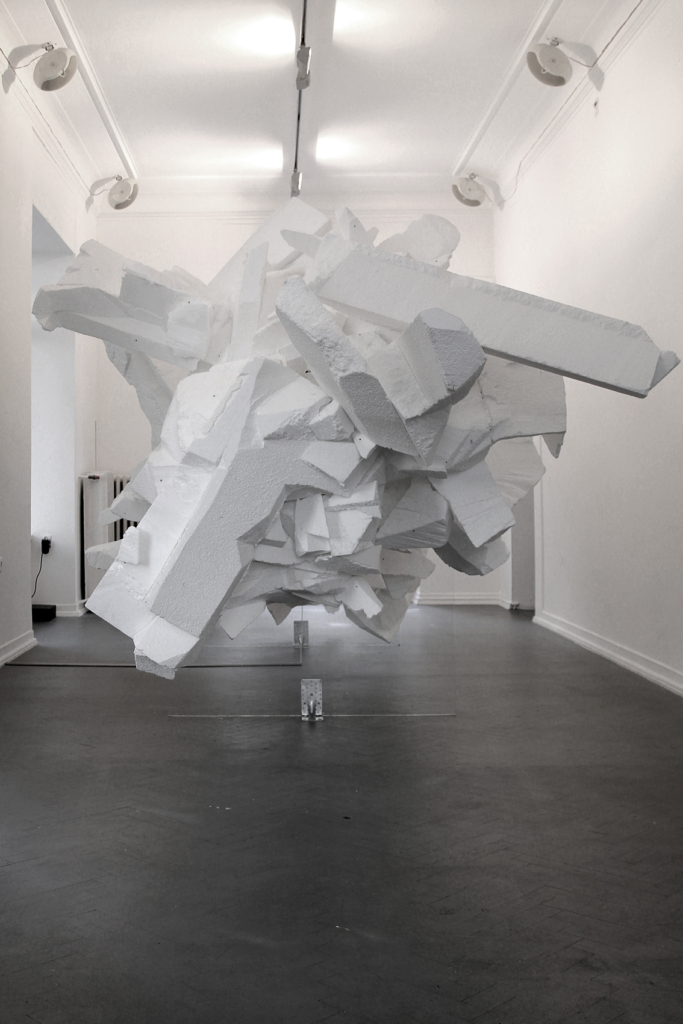

CATERPILLAR Material: styrofoam, steel, pleksiglas; Dimension: 670 x 280 x 280 cm; Date: 2018
CATERPILLAR
Zachęta Project Room – Zachęta National Art Gallery
26/05 – 22/07/2018
curator Magda Kardasz
“CATERPILLAR is an allegory of the movement of bodies, the rhythm of nature, organisms and evolutionism. In its assumption, it refers to the determinism of continuous change, the struggle for the survival of every matter.
CATERPILLAR is a part of a process of events, which continues endlessly. It is a form of a bizarre mechanism, a great clock, where time and space are a relative unity. The elements rotating at different speeds do not allow the viewer to identify and observe any regular layout. The form seems to be an incidental, a magnetised body attracting dozens of crushed, angular objects, like clusters of unspecified minerals set in circular motion.” – Mateusz Dąbrowski
Sculptures came alive, prints sprang out of the frames.
“..For years my work has been connected with the problem of perception, or more precisely
with its limitations, visual manipulation. It concerns phenomena that we do not notice, do not
understand, but which exist and have an impact on man and reality..” Mateusz Dąbrowski
The favorite creative form used by Mateusz Dąbrowski is the translation of observations and feelings into abstract forms. In his latest project, CATERPILLAR, presented in the Zachęta Project Room (MPZ), the artist continues to explore the motifs, at the same time expanding the borders of the meaning of sculpture and printmaking – his favorite visual techniques. The CANAPONE sculpture presented in the gallery basement has the form of a large metal spring- generator set into vibration by infrasounds. They imitate waves we normally do not register, even though they have a huge influence on our mood or even on the way our bodies work. Only after a moment of looking at the object does the viewer notice the vibration of the metal rings, which build up gradually. The sculpture, seemingly still, takes on features of a living organism. The box carrying the sculpture, wadded with gray, fluffy felt similar to fur, increases the impression that you are dealing with a biological object. Close to the piece of art described above, the artist affixed prints cut out in foil to the wall. The black shapes look like living organisms, cells seen through the microscope, ghosts from a cartoon or Oriental calligraphy. Similar abstract forms, inspired by photographs, including traces of various objects, were hitherto printed by Dąbrowski on small sheets of paper. At the MPZ exhibition, the artist plays with size, enlarges the objects to enormous scale, building an unusual relation between the graphic sign and architecture. This simple measure effectively changes the perception of the lower rooms of the gallery. With the CATERPILLAR sculpture installation, created specifically for the Zachęta Project Room, the artist deepens his interest in problems from the border of art, philosophy and science. He experiments with a material that is new to him – Styrofoam. The first thing noticed by the viewer is a white, large, angular lump, which seems to float above the gallery floor. The object is similar to a huge caterpillar, a fragment of an iceberg drifting on water, a cloud or a mechanism of unknown purpose. The industrial-like impression is strengthened by the gallery interiors – the author uncovered the old radiators and pipes that had been discreetly hidden behind white curtains during other exhibitions. Further contemplation allows the viewer to notice that the horizontal shape is movable – its components rotate about their axes, to different rhythms and in various directions. The sculpture has no single, final shape. It metaphorically refers to the relativity and subjectivity of time and movement. The importance to Mateusz Dąbrowski of acting on the verge of art, nature/corporeality and science/ technology is seen in the title given to the installation and to the exhibition as a whole. CATERPILLAR is not only the name of an animal species, but also a globally famous provider of mining and building machinery. Dąbrowski says about his kinetic, interactive sculpture: “The project is to be an allegory of the movement of celestial bodies, a representation of the rhythm of nature, of living organisms with various heartbeats and breathing patterns or different biochemical reaction times.” Evidently, the artist sees multiple possible readings of his art. We might call the CATERPILLLAR exhibition the praise of the constant change in time, an attempt to grasp the ongoing evolution of the world.
Magda Kardasz
Text published in the folder of the exhibition
Mateusz Dąbrowski CATERPILLAR
Zachęta Project Room – Zachęta National Gallery of Art
——————————————————————————————————————–
Rzeźby ożyły, grafiki wyszły z ram
“Moja praca od lat związana jest przede wszystkim z tematem percepcji, a właściwie z jej
ograniczeniami, manipulacją wizualną. Dotyczy zjawisk, których nie zauważamy, których nie
rozumiemy, a które istnieją i mają wpływ na człowieka i rzeczywistość.”
Mateusz Dąbrowski
Ulubioną metodą twórczą Mateusza Dąbrowskiego jest przekładanie obserwacji i wrażeń na formy abstrakcyjne. W swoim najnowszym projekcie CATERPILLAR, prezentowanym w Miejscu Projektów Zachęty, artysta kontynuuje te wątki, poszerzając jednocześnie granice pojęcia rzeźby i grafiki – swoich ulubionych technik wizualnych. Rzeźba CANAPONE, prezentowana w podziemiach galerii, ma formę dużej metalowej sprężyny-generatora, wprawianej w drgania przez infradźwięki. Imitują one fale, których zazwyczaj nie rejestrujemy, choć mają one duży wpływ na nasze samopoczucie czy nawet funkcjonowanie organizmu. Dopiero po chwili obserwacji obiektu widz zaczyna dostrzegać drgania metalowych okręgów, które się wzmagają. Pozornie statyczna rzeźba nabiera cech żywego organizmu. Obite włochatym, przypominającym sierść szarym filcem pudło, na którym ustawiona jest rzeźba, wzmacnia wrażenie biologiczności obiektu. W pobliżu opisanej pracy artysta umieścił na ścianie grafiki wycięte z folii. Czarne kształty przypominają żywe organizmy, komórki obserwowane pod mikroskopem, duszki z kreskówki czy dalekowschodnią kaligrafię. Podobne, inspirowane fotografiami abstrakcyjne formy, zawierające ślady przedmiotów, Dąbrowski odbijał dotychczas na papierze niewielkich rozmiarów. W MPZ bawi się skalą, powiększa kształty do ogromnych rozmiarów, budując niezwykłą relację graficznego znaku i architektury. Ten prosty zabieg skutecznie zmienia percepcję dolnych sal galerii. W stworzonej z myślą o przestrzeni Miejsca Projektów Zachęty instalacji rzeźbiarskiej zatytułowanej CATERPILLAR artysta pogłębia swoje zainteresowania z pogranicza sztuki, filozofii i nauki. Eksperymentuje z nowym dla siebie materiałem – styropianem. Widz zobaczy najpierw białą kanciastą bryłę dużych rozmiarów, wydającą się unosić nad podłogą galerii. Obiekt przypomina ogromną gąsienicę, fragment góry lodowej dryfujący po wodzie, obłok bądź mechanizm o nieznanym przeznaczeniu. Wrażenie industrialności wzmacnia widok wnętrza galerii – autor odsłonił stare kaloryfery i rury, na potrzeby innych ekspozycji skrzętnie ukrywane za białymi ścianami-zasłonami. Dłuższa kontemplacja pozwala dostrzec, że poziomy kształt jest ruchomy – jego poszczególne człony obracają się wokół własnej osi, w odmiennym rytmie i kierunku. Opisana rzeźba nie ma jednego, skończonego kształtu. Metaforycznie odnosi się do względności i subiektywności czasu oraz ruchu. O tym, jak ważne jest dla Mateusza Dąbrowskiego działanie na styku sztuki, natury/cielesności i nauki/techniki, świadczy tytuł nadany instalacji oraz całej wystawie. CATERPILLAR to po angielsku gąsienica, ale także znana na całym świecie firma produkująca maszyny górnicze i budowlane. O swojej kinetycznej, interaktywnej rzeźbie Dąbrowski mówi: „Projekt ma być alegorią ruchu ciał niebieskich, przedstawieniem rytmu natury, organizmów żywych o różnym rytmie serca i oddechu, czy odmiennym czasie reakcji biochemicznych”. Jak widać, artysta zakłada wielość możliwych odczytań swoich dzieł. Wystawę CATERPILLLAR można by nazwać pochwałą ciągłej zmienności w czasie, próbą uchwycenia nieustannej ewolucji zachodzącej w świecie.
Magda Kardasz
Tekst opublikowany w folderze do wystawy Mateusz Dąbrowski CATERPILLAR
Miejsce Projektów Zachęty – Zachęta Narodowa Galeria Sztuki
